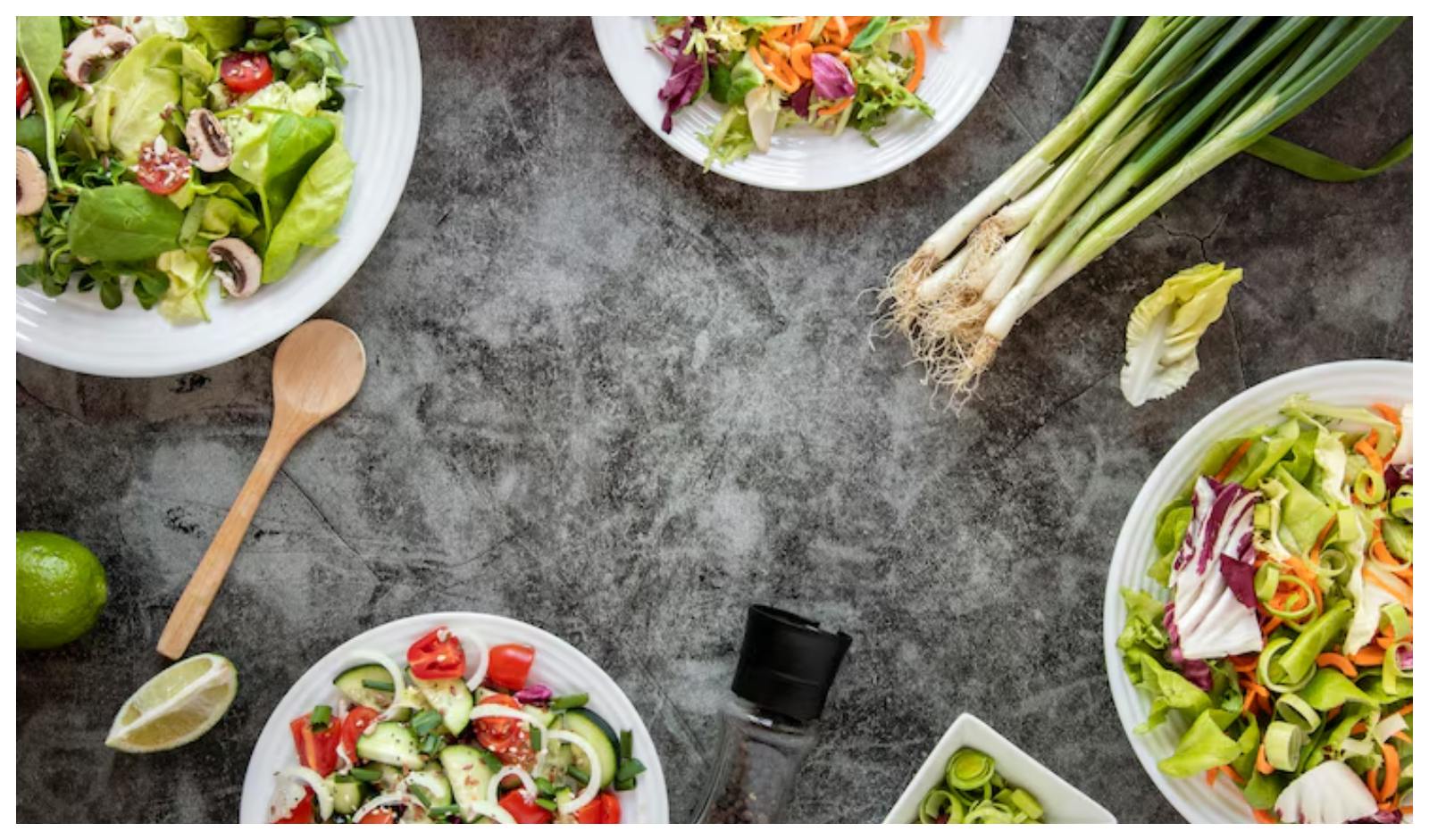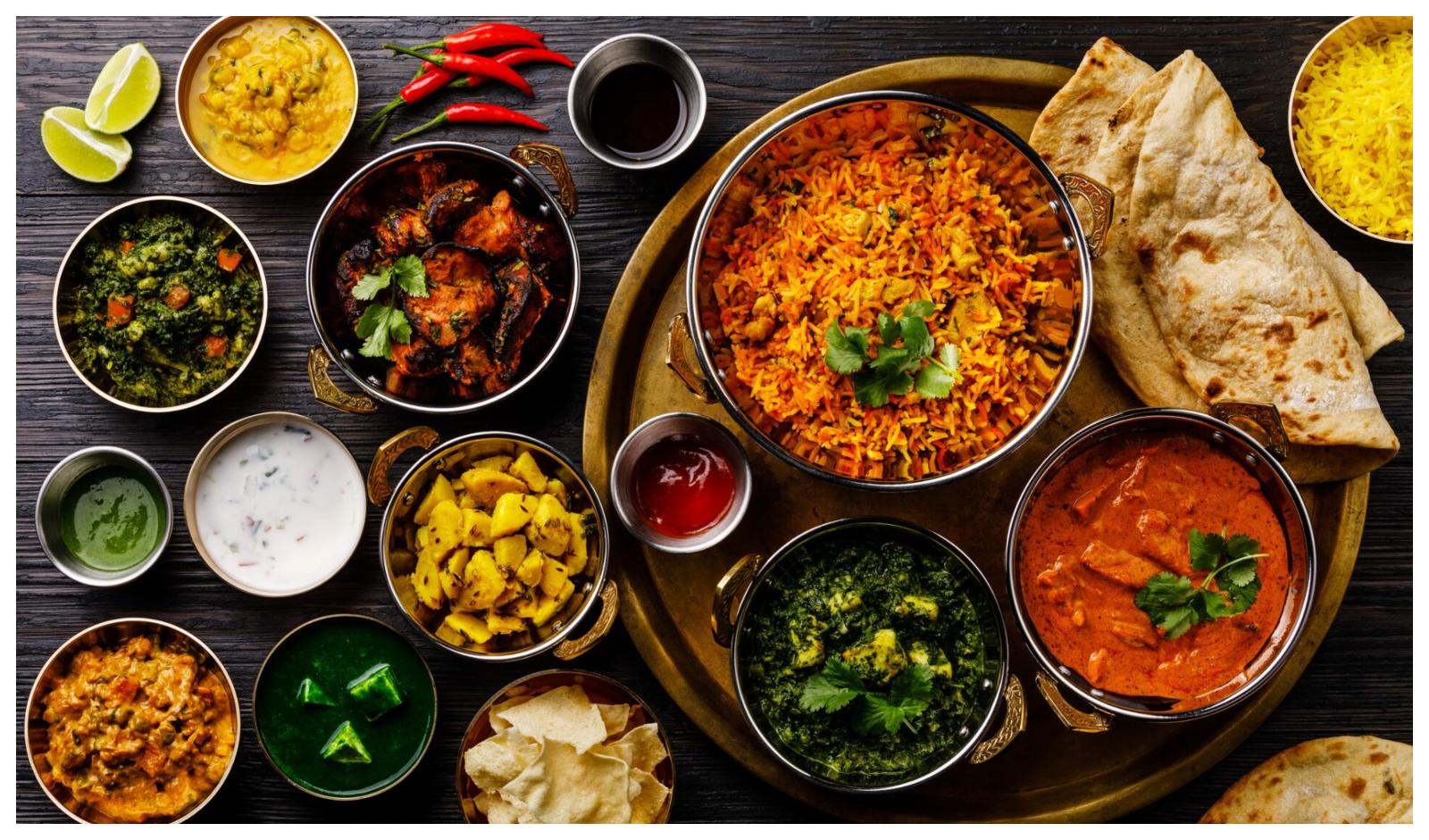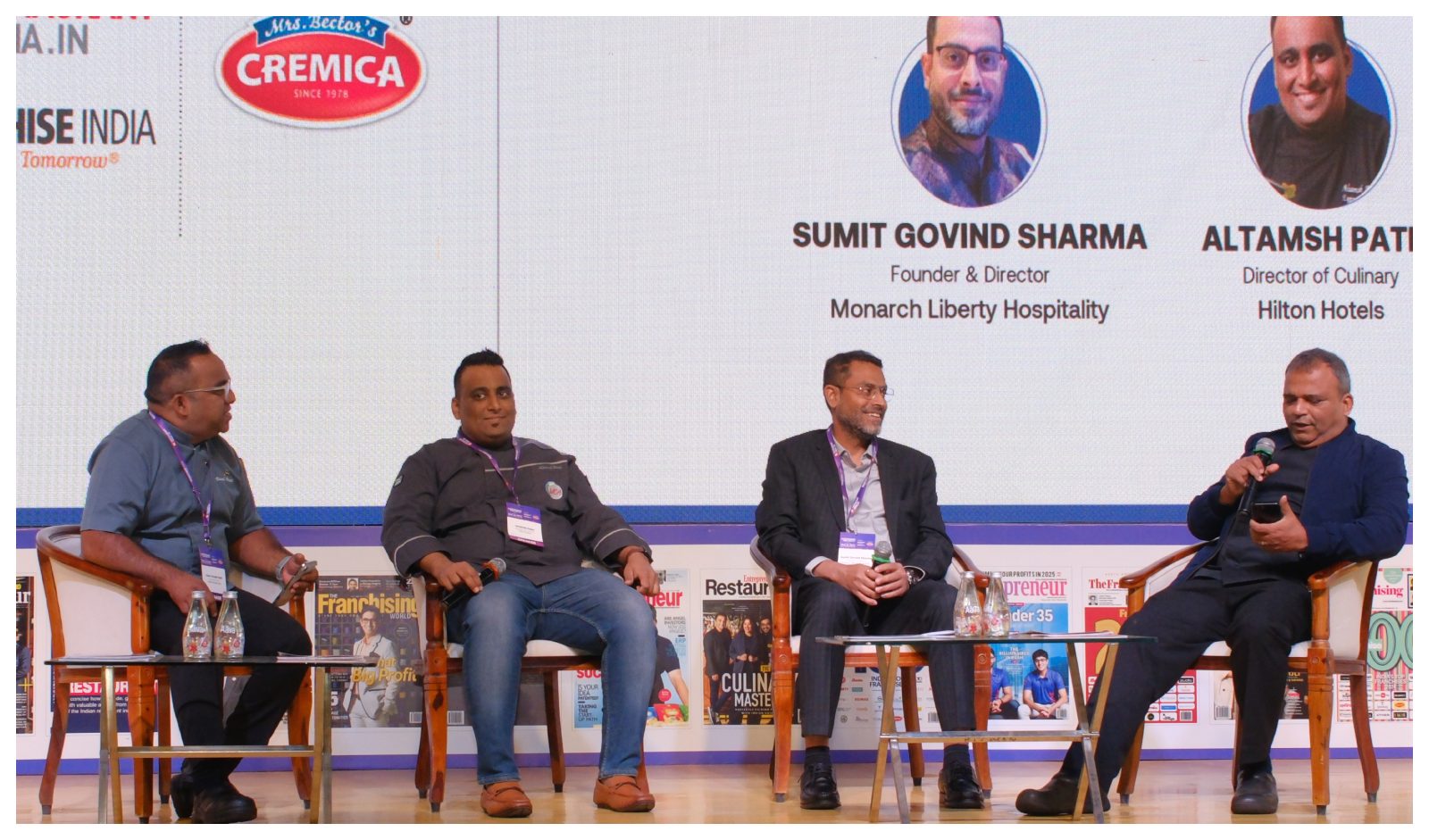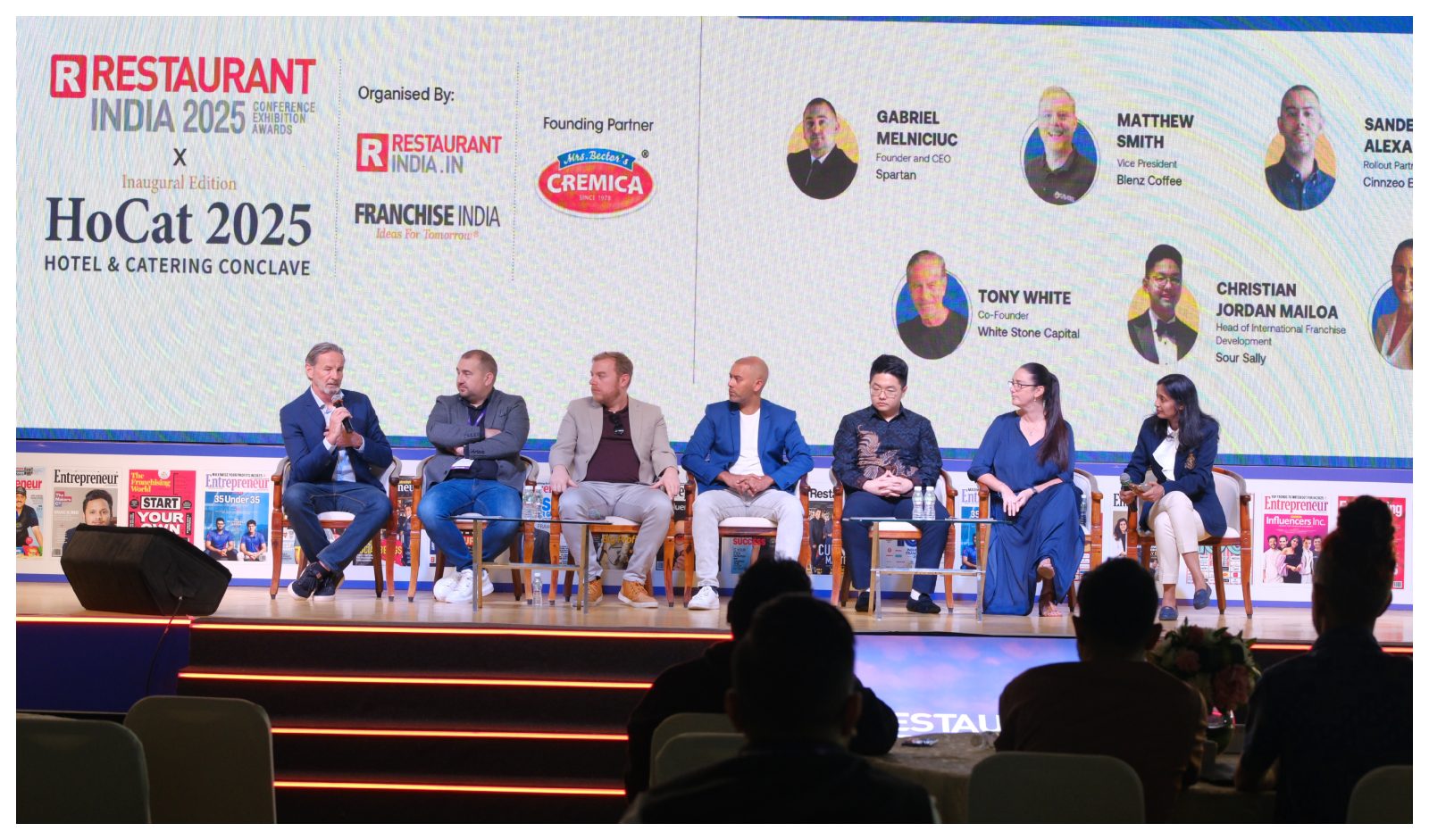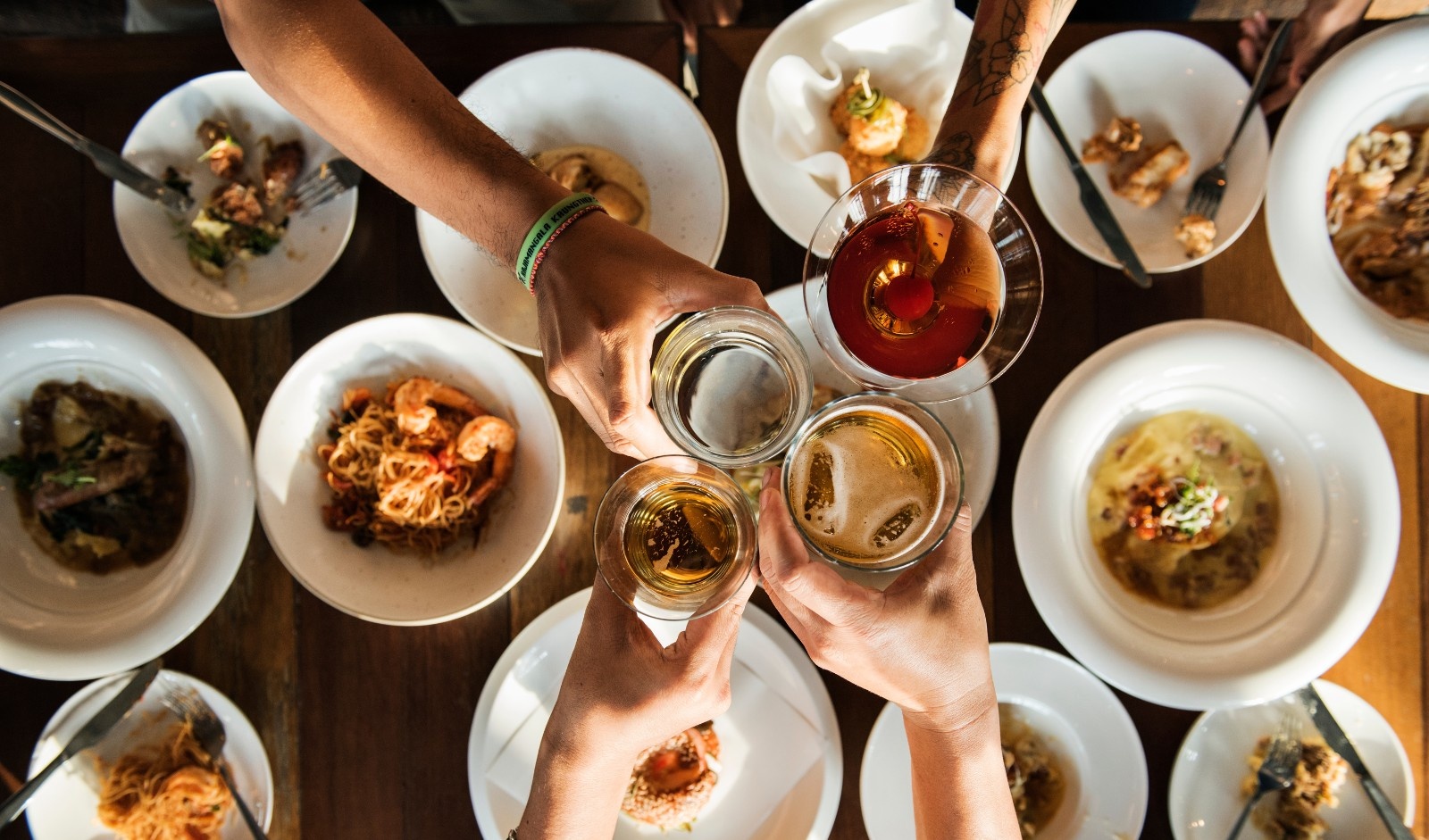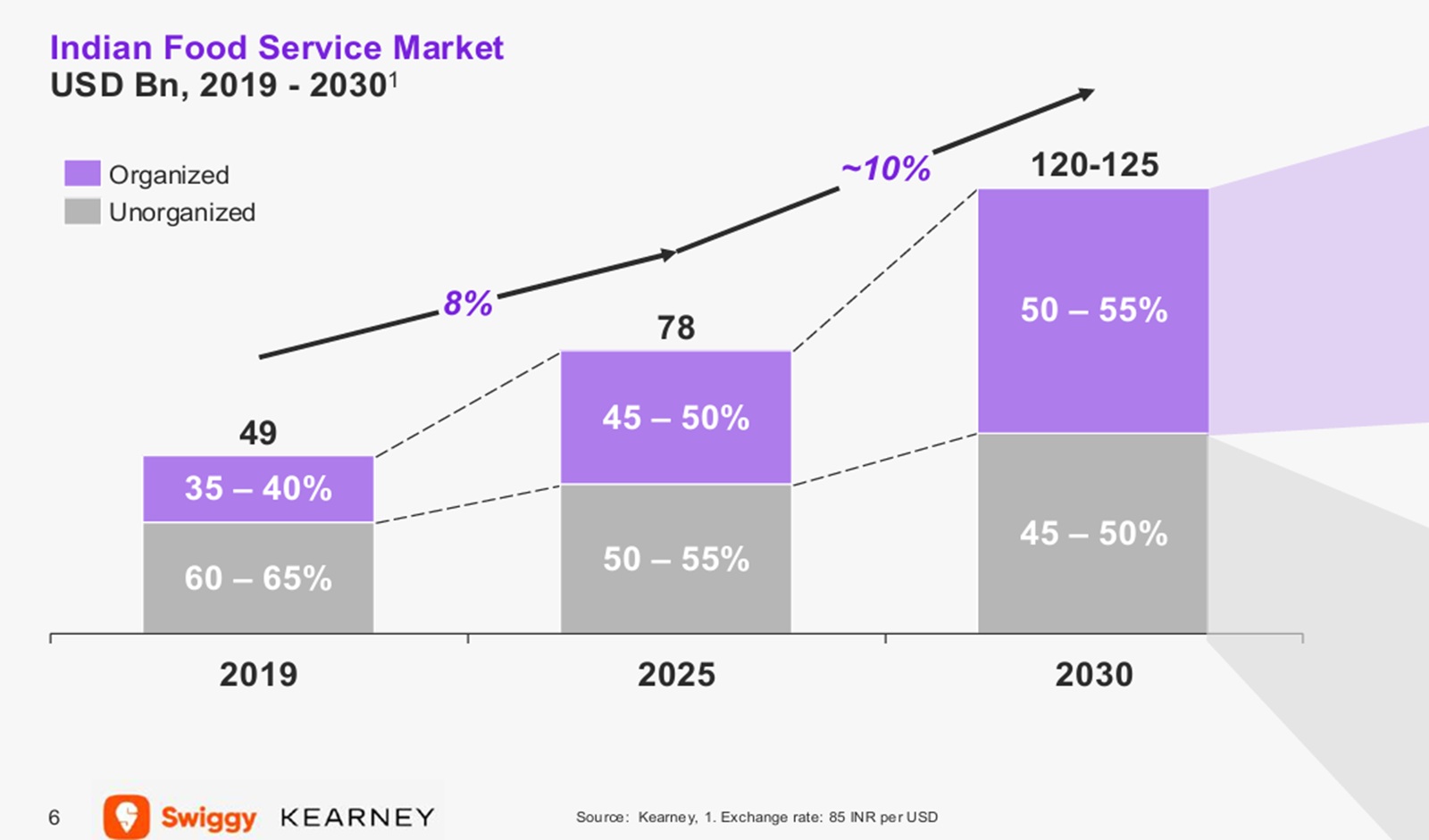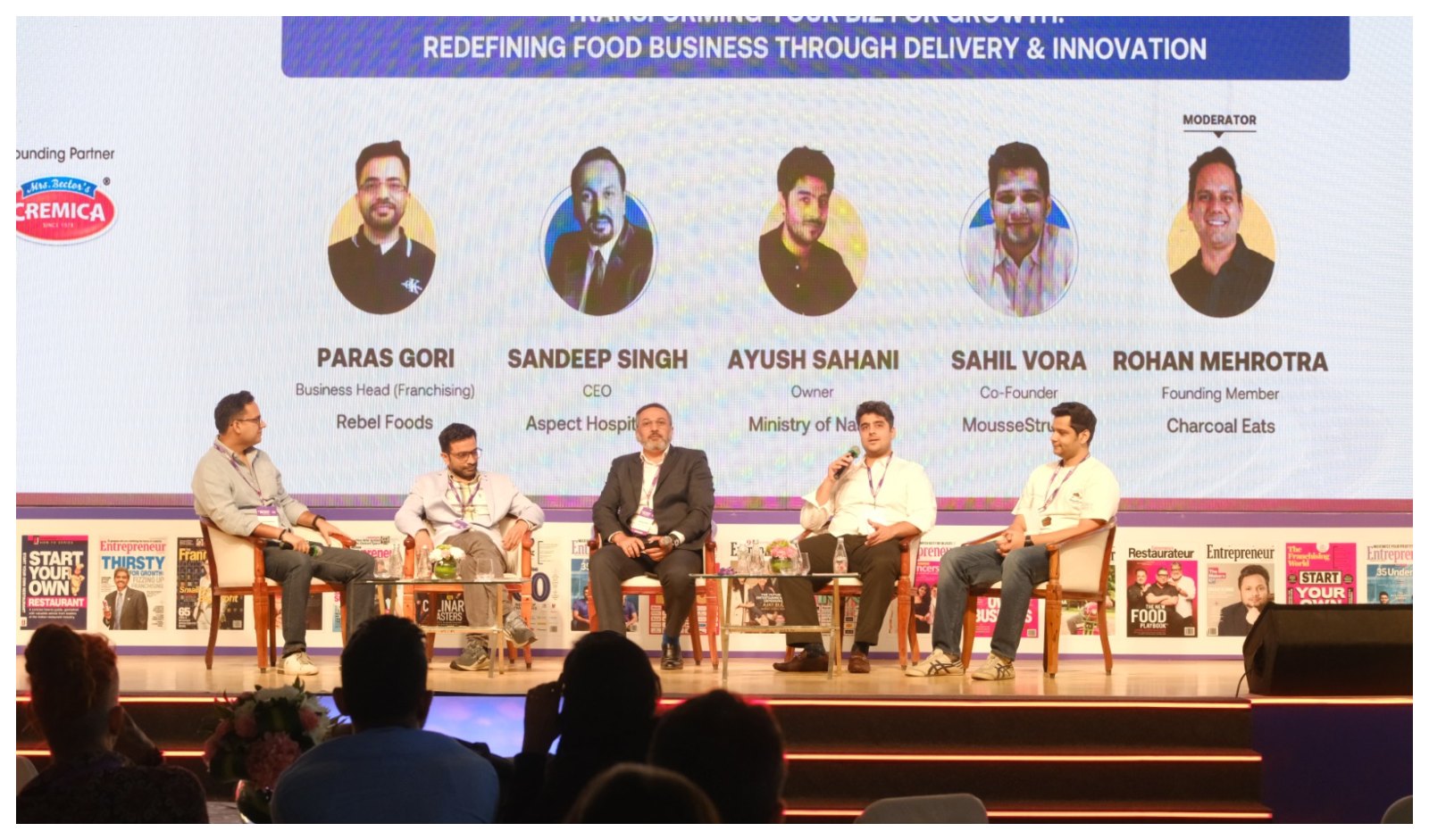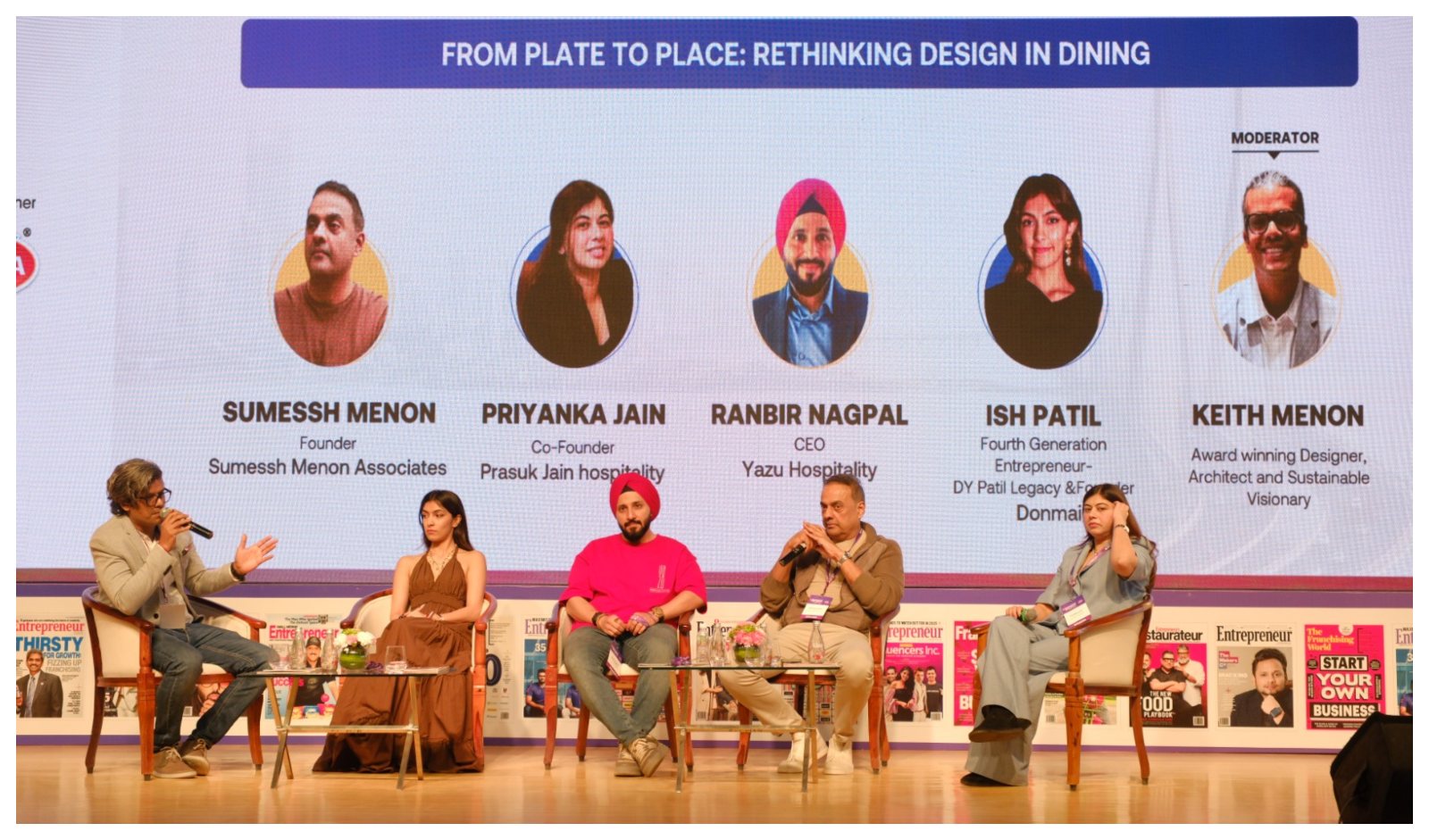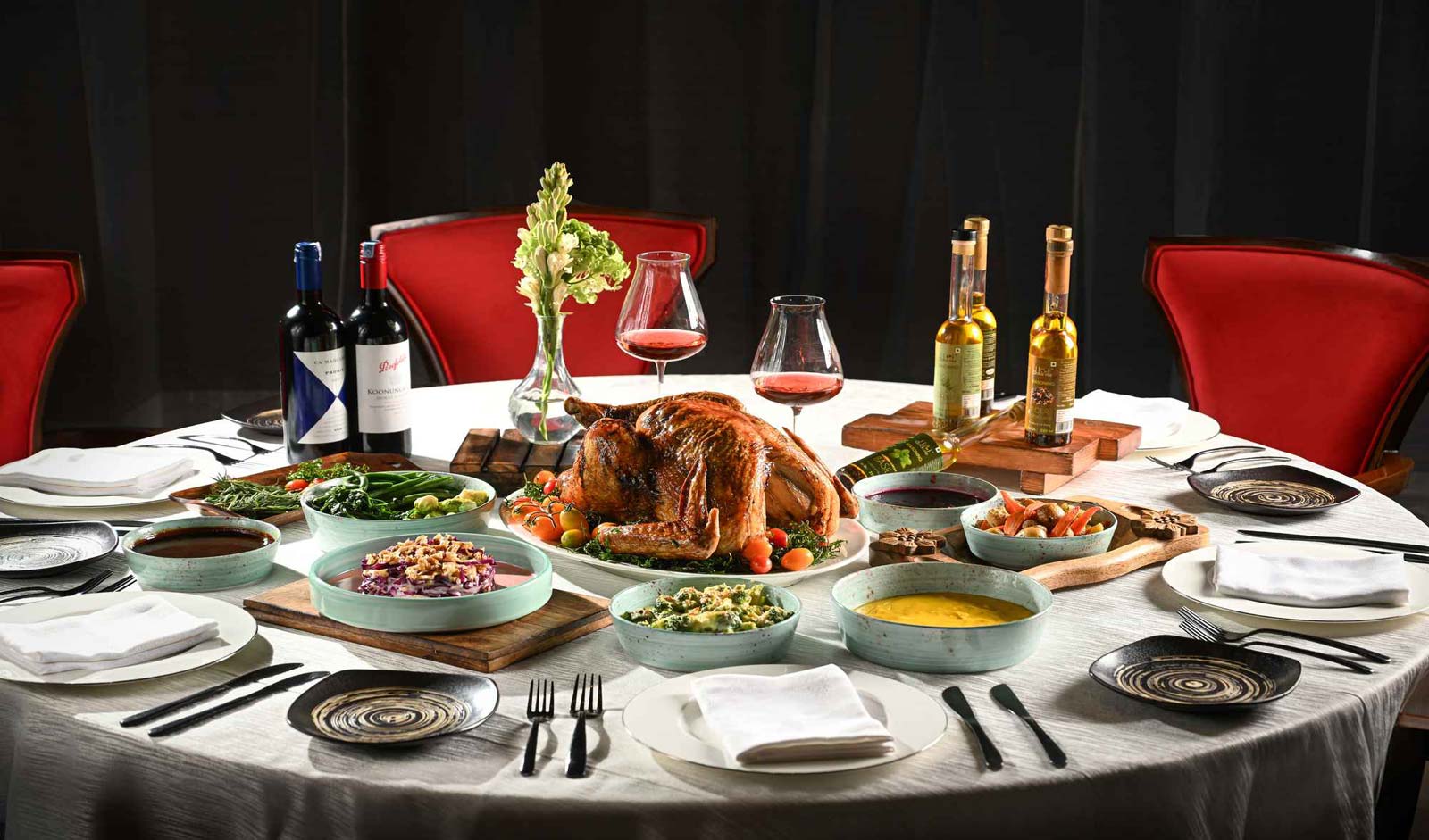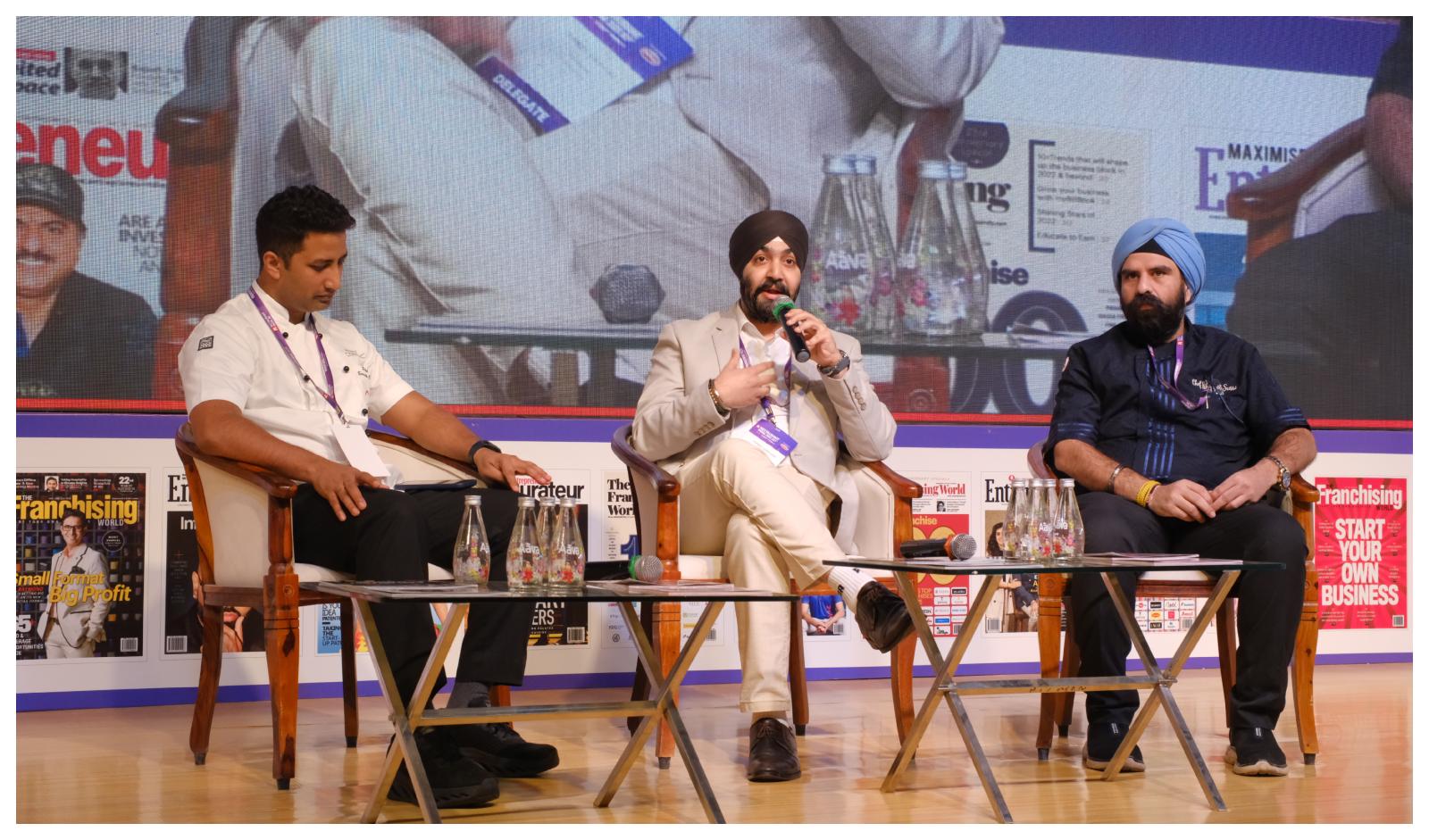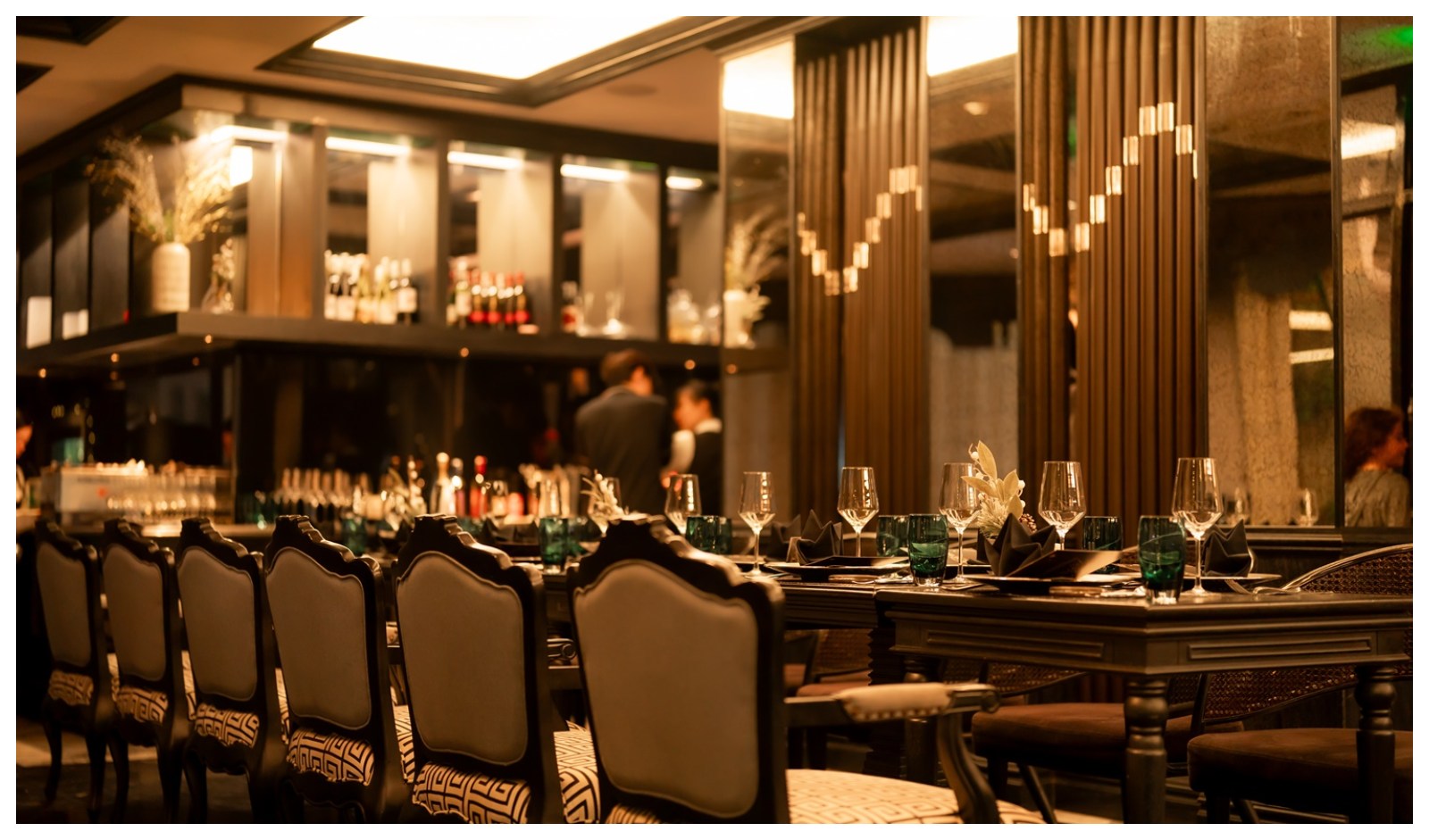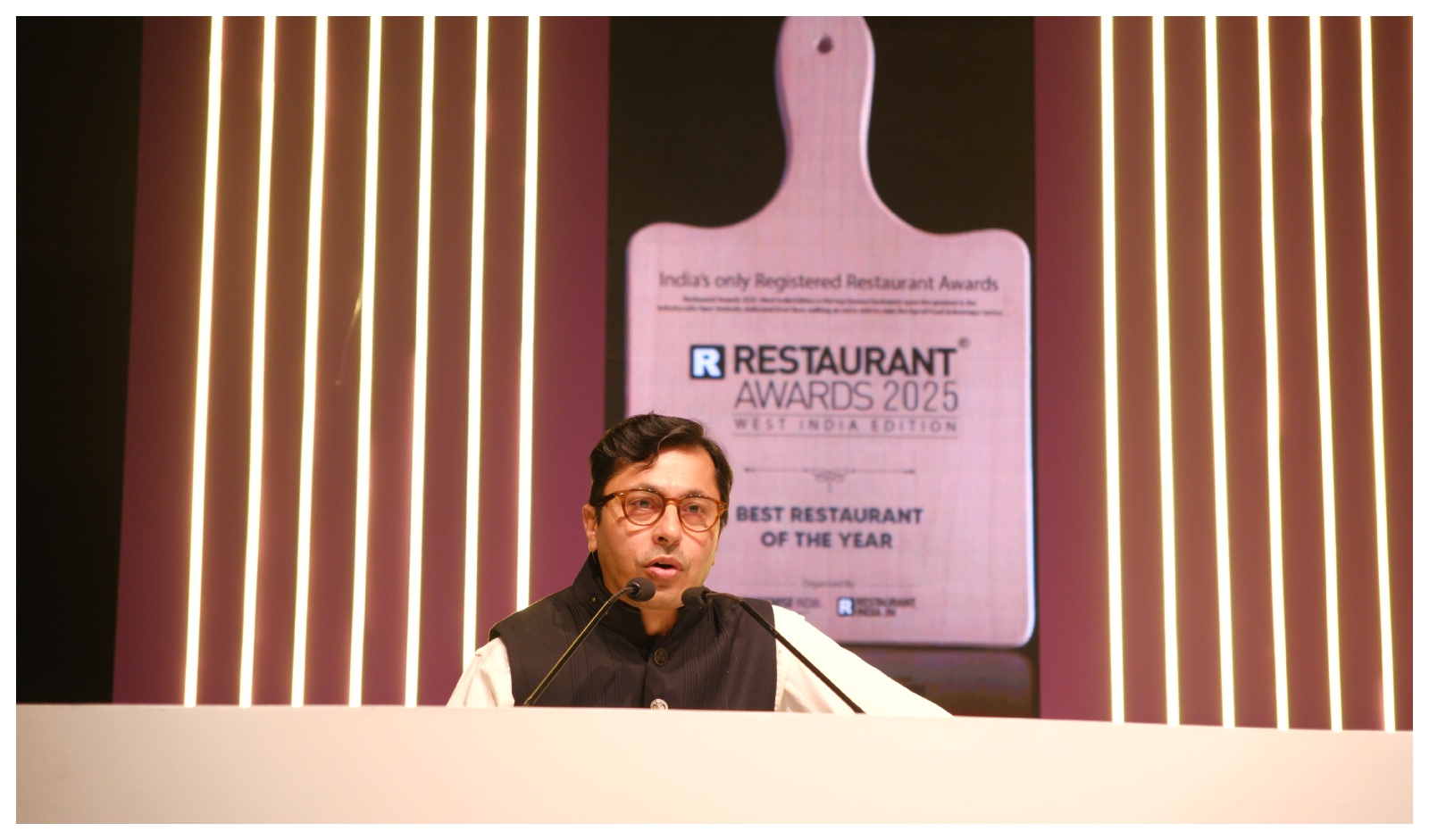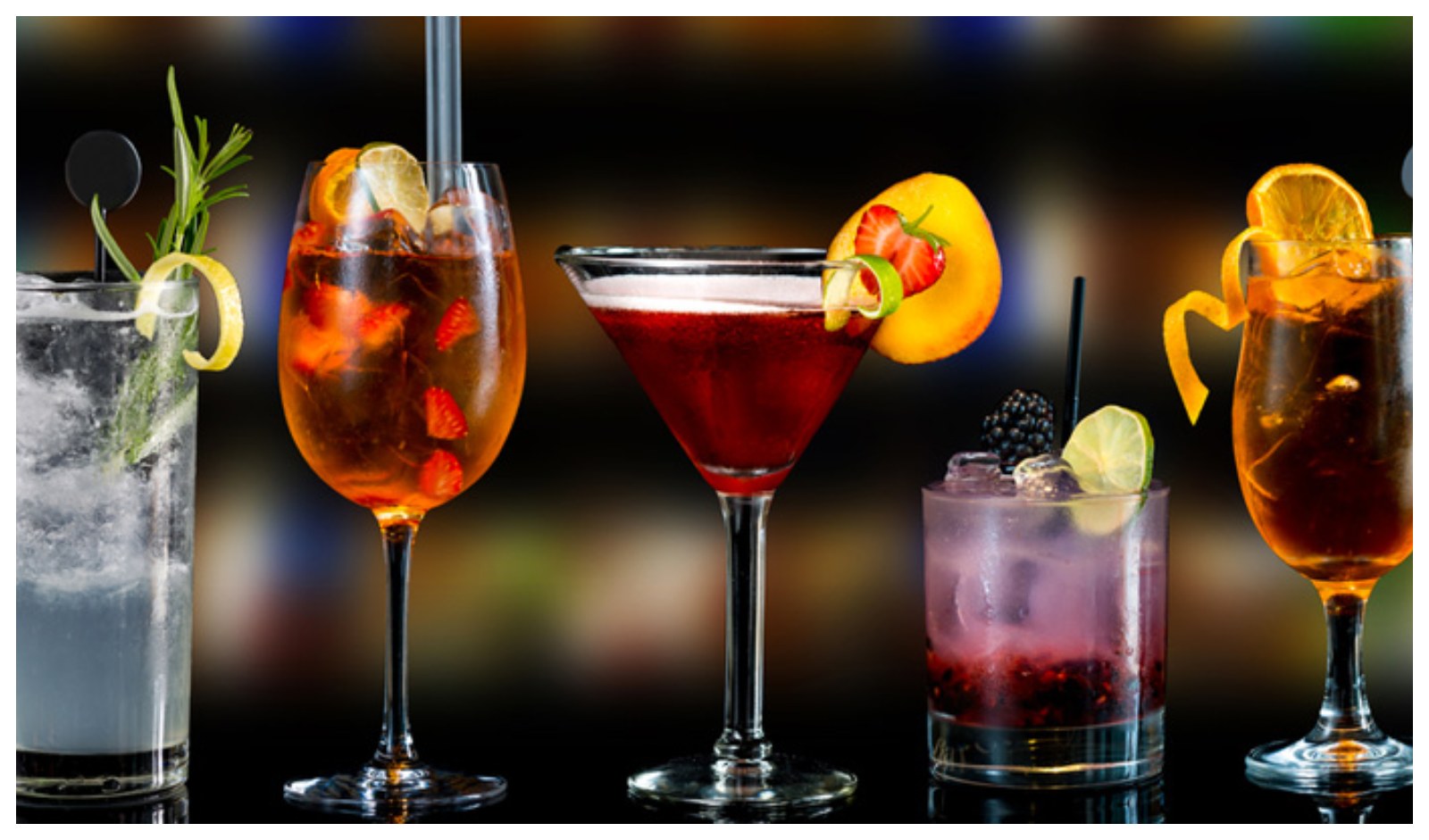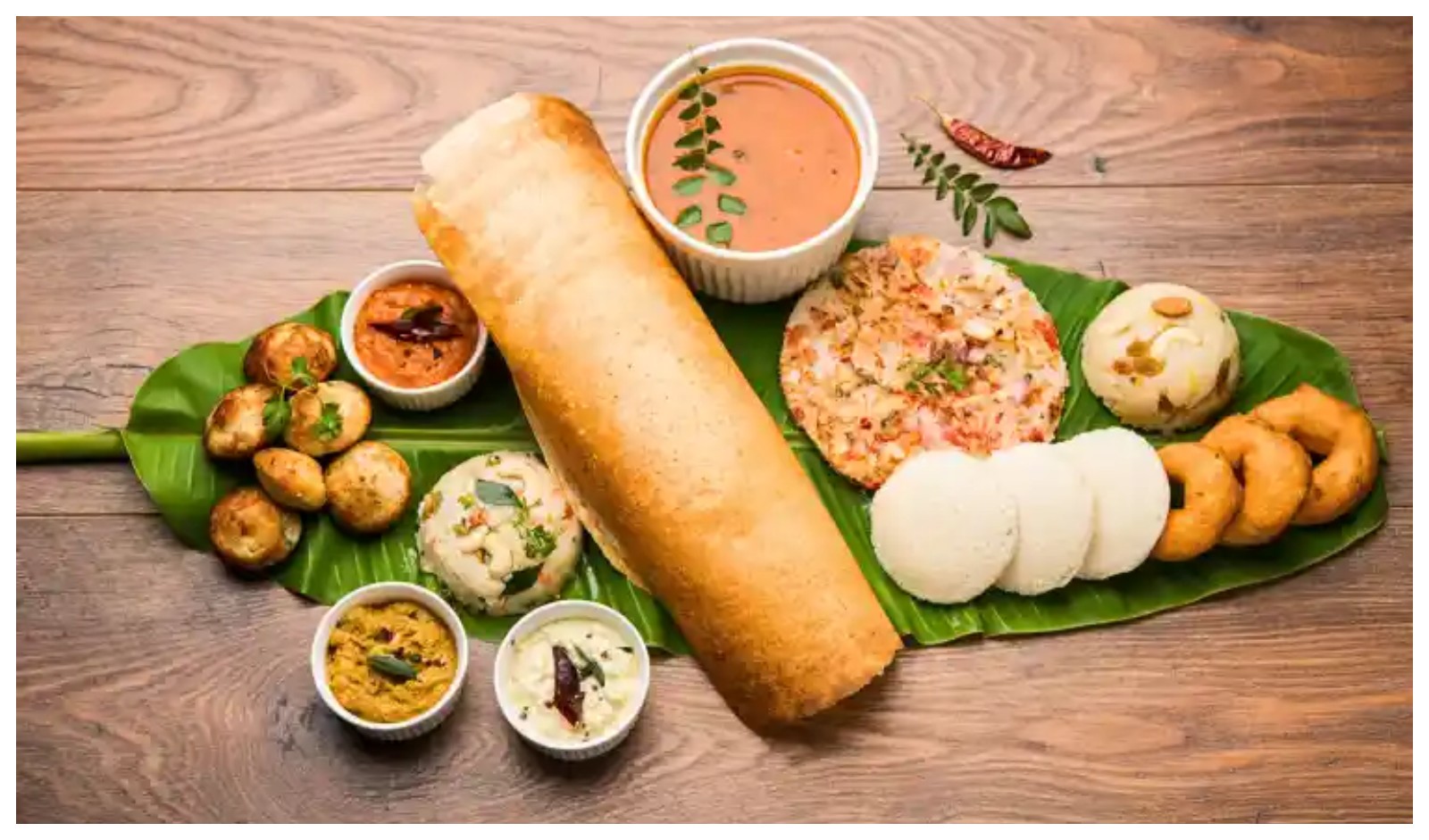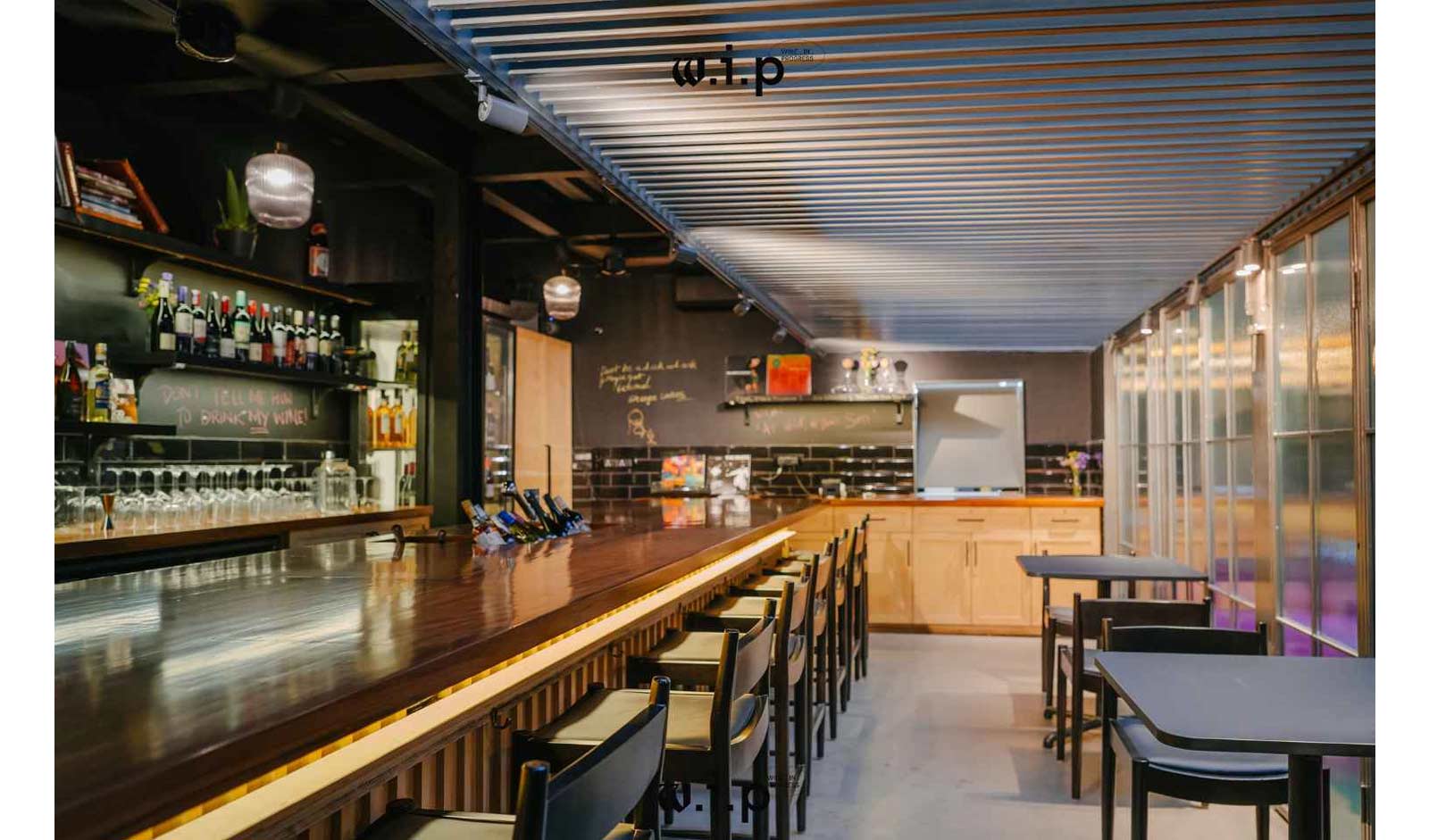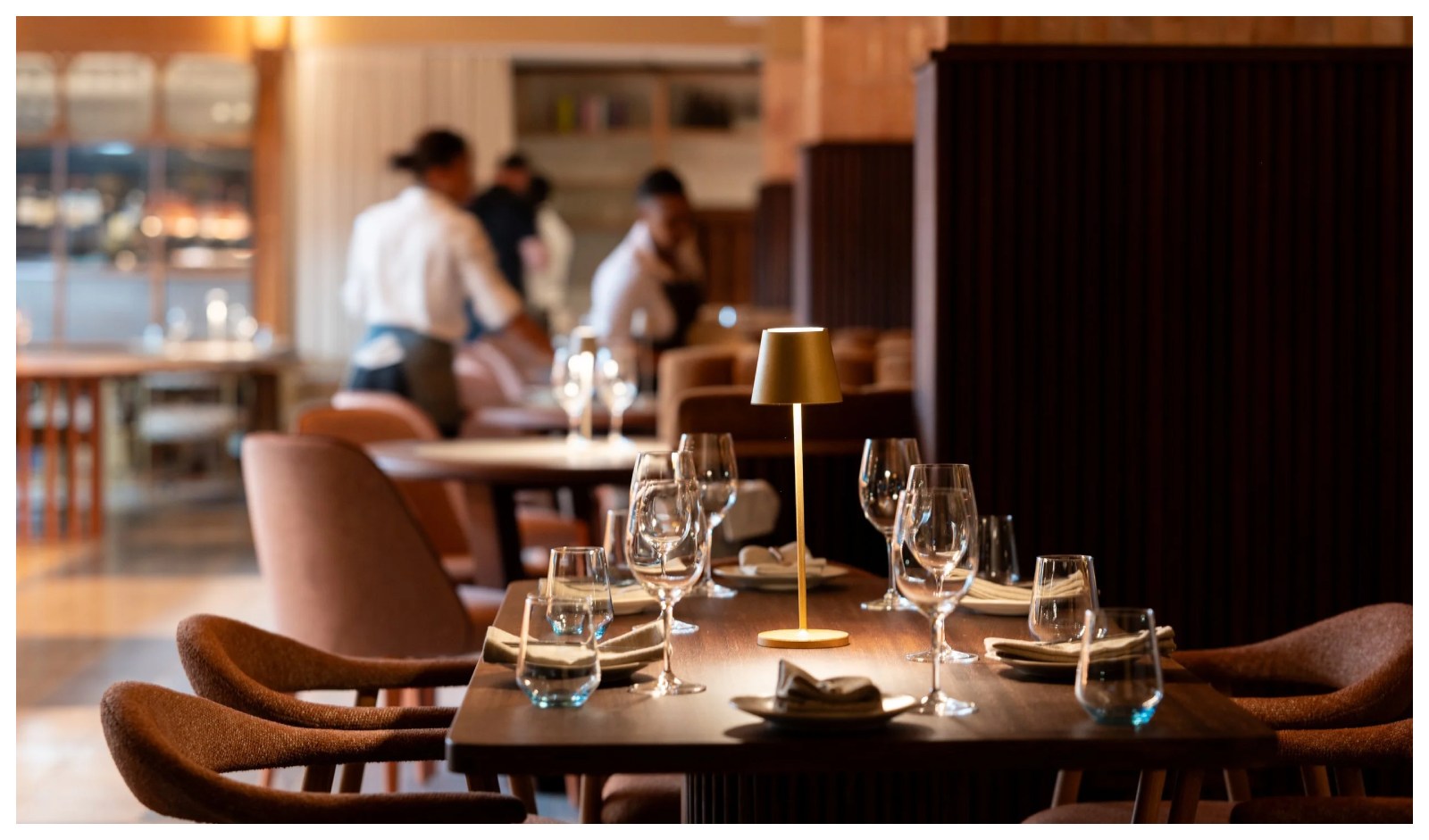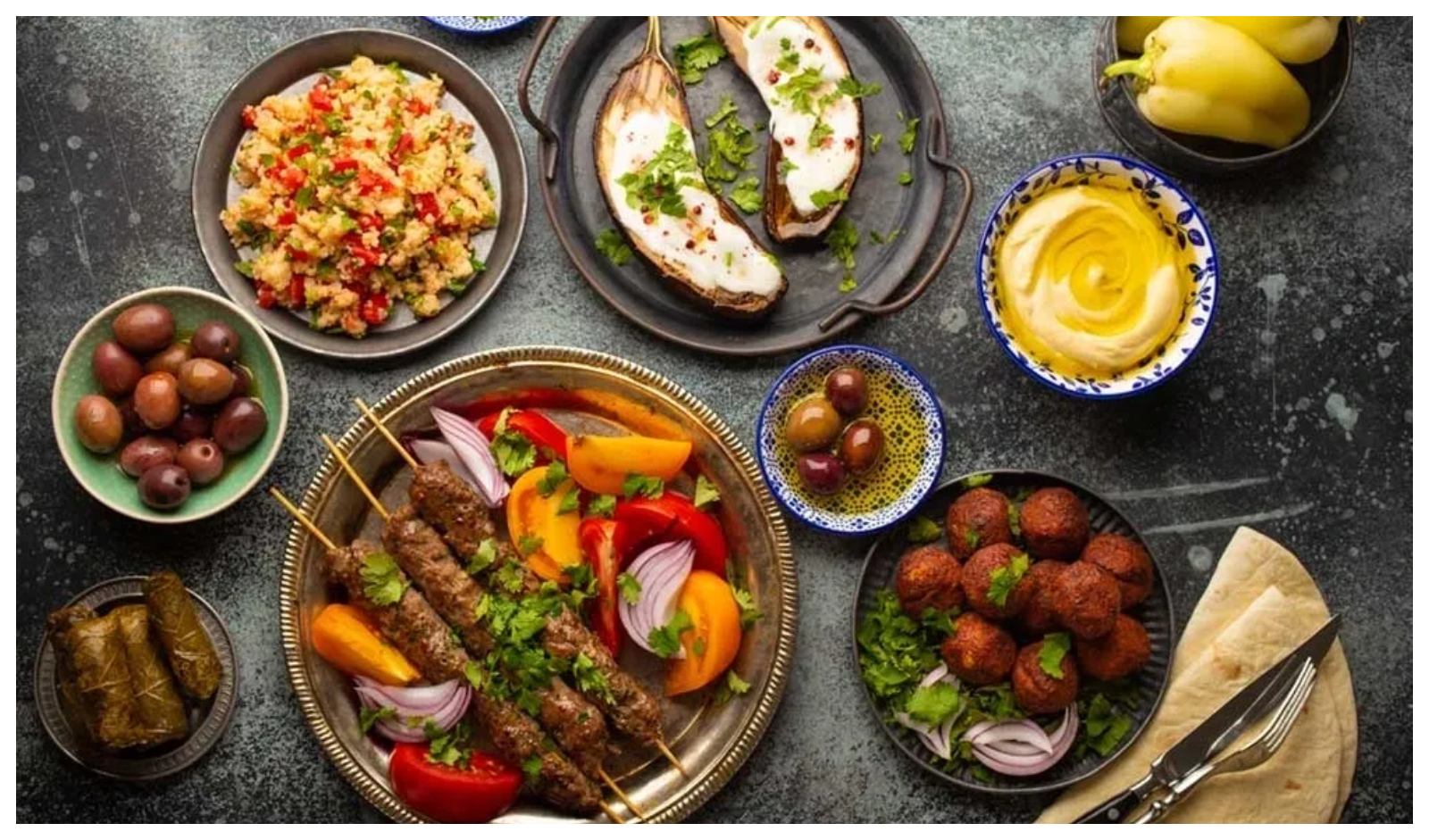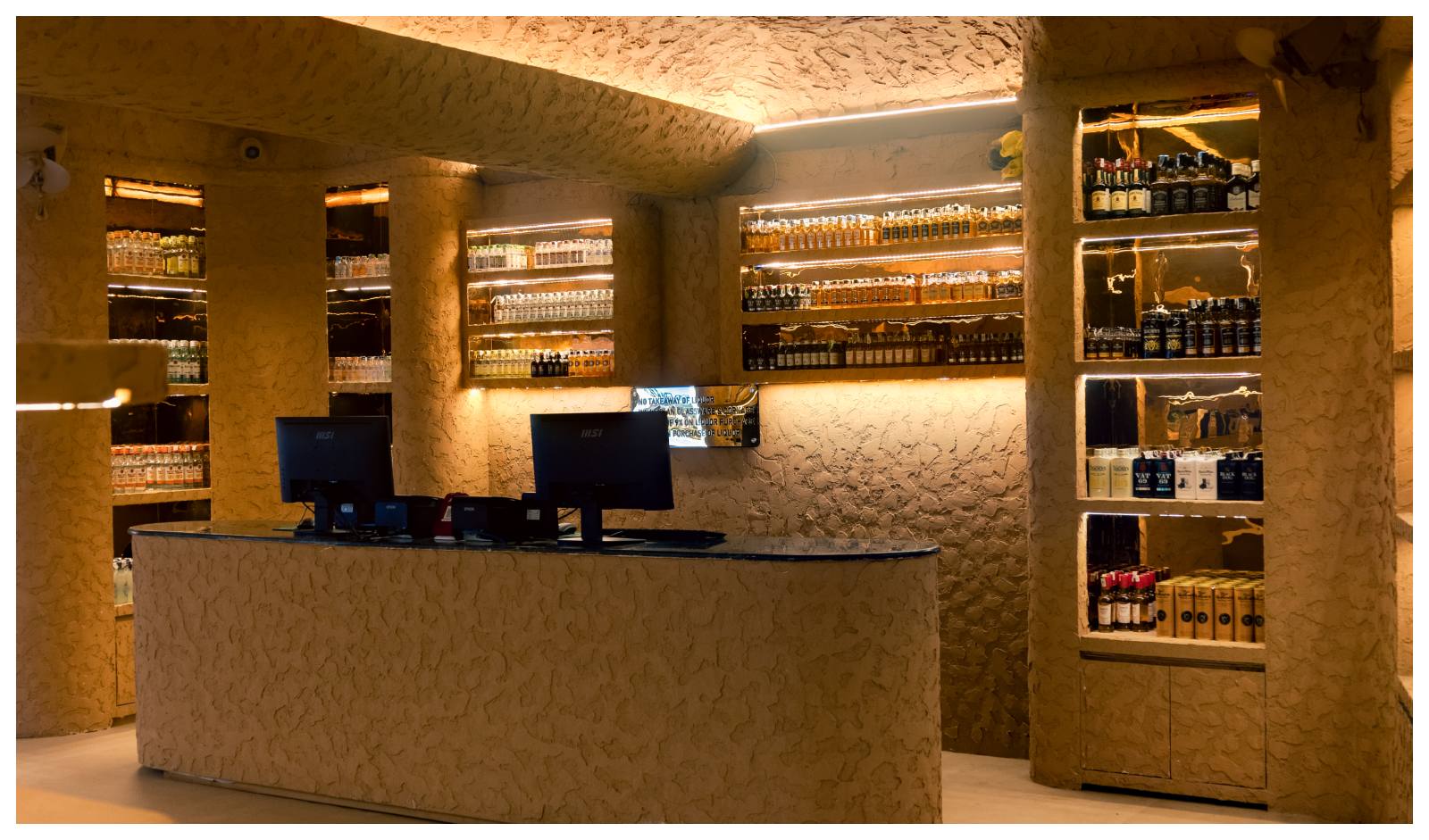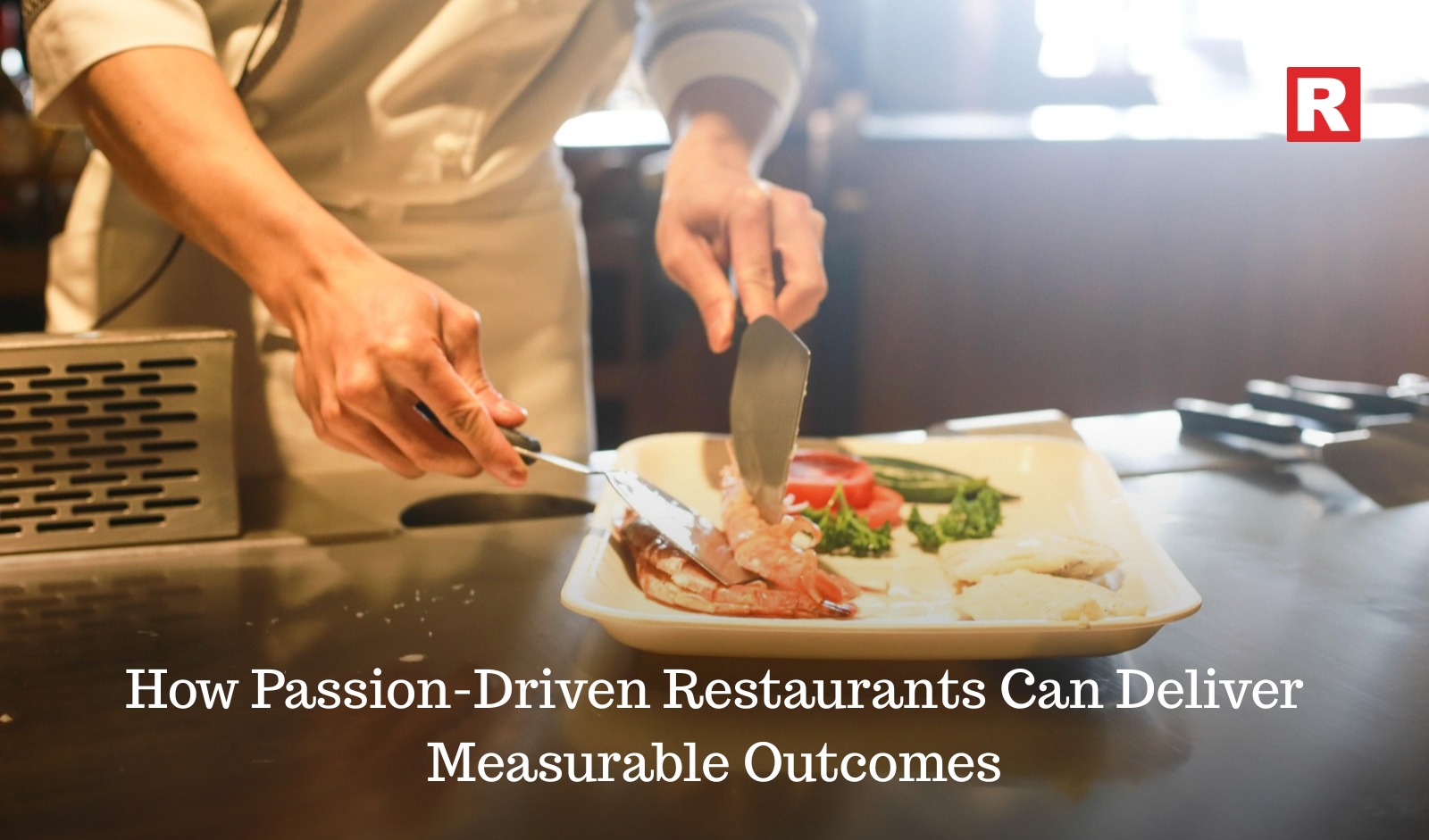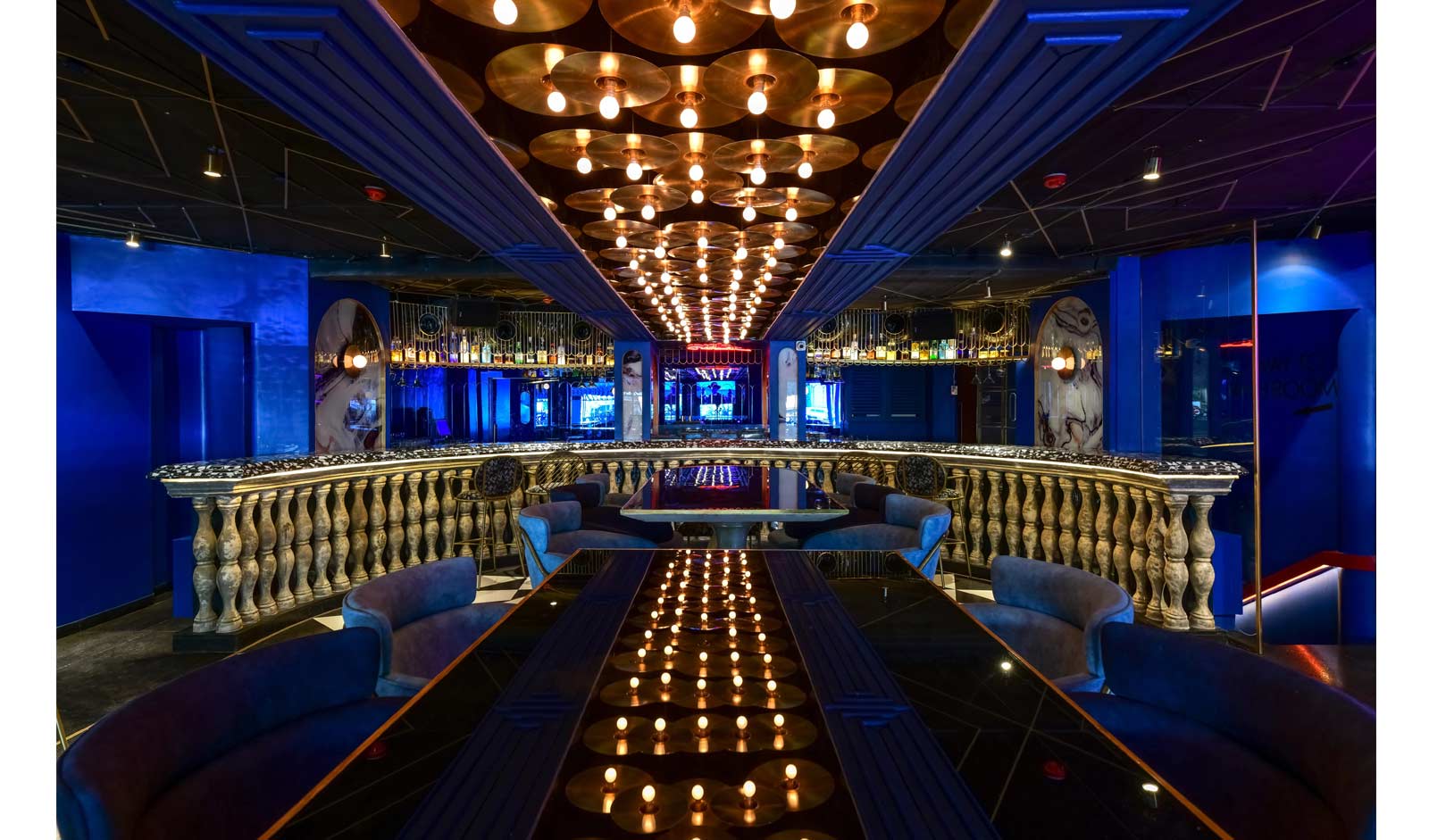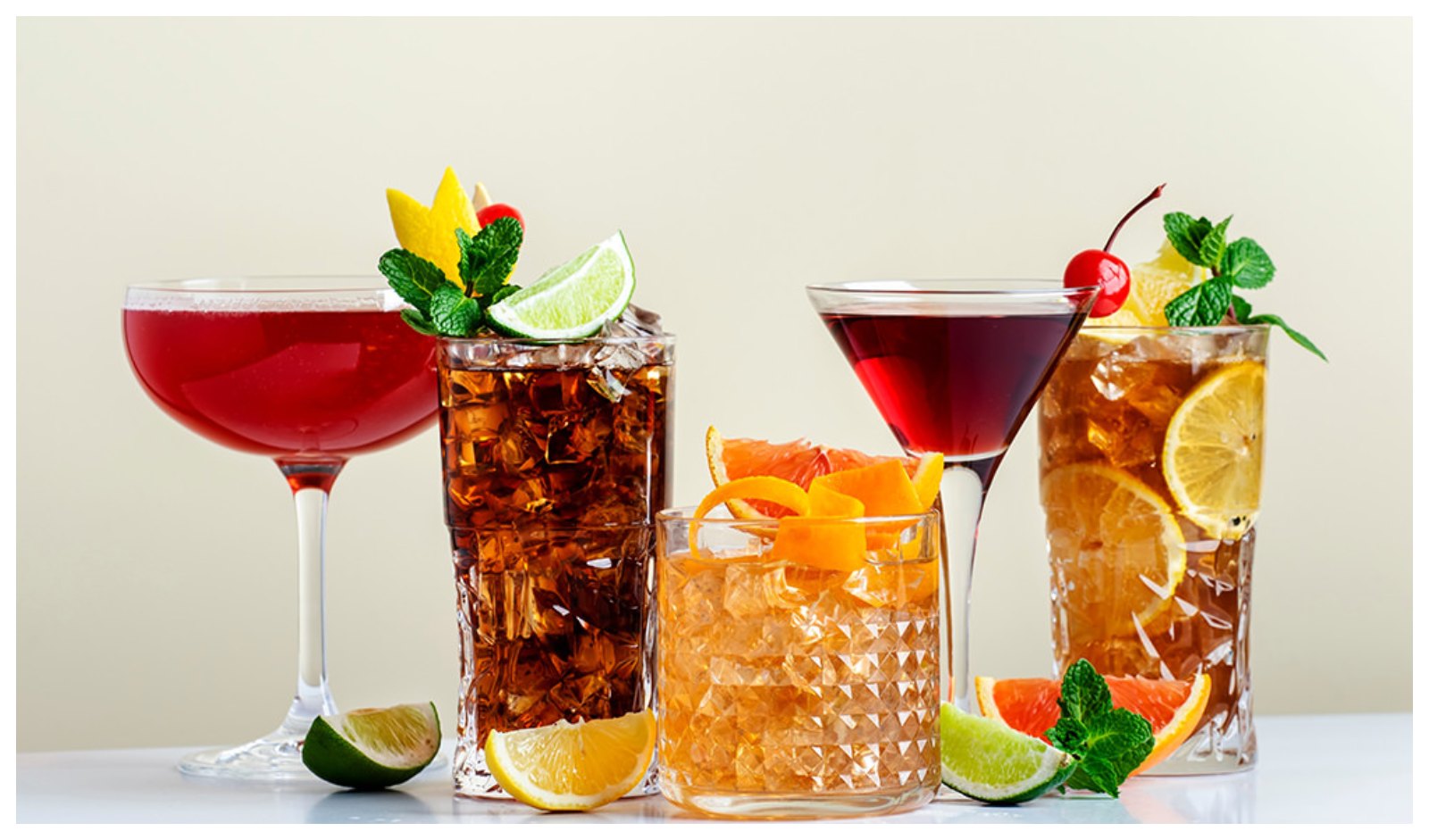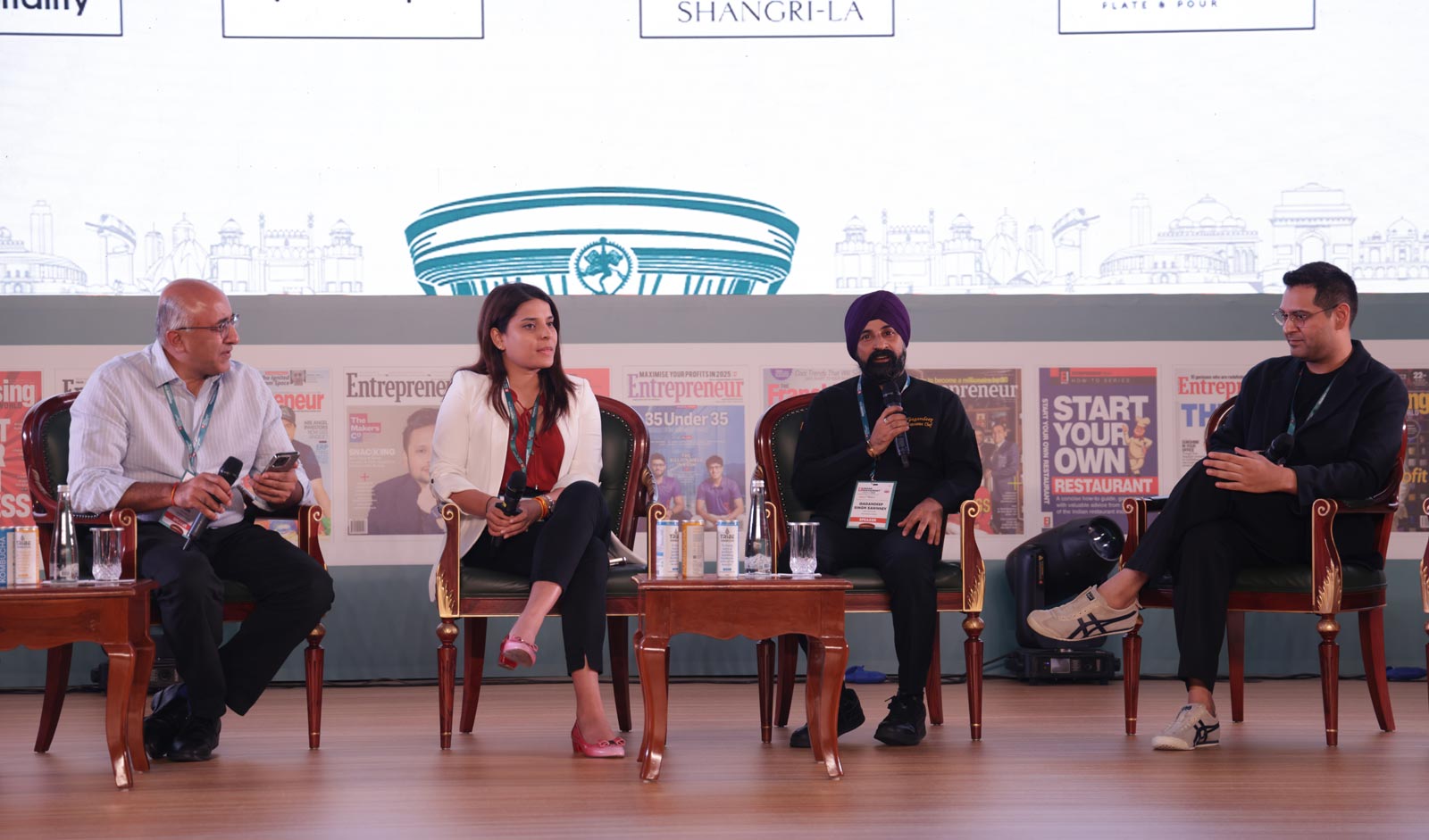
A restaurant in Delhi was recently in a centre of a nine-yard controversy. It turned away a customer at the door for not complying with its 'smart casual’ dress code. The lady turned away was wearing a saree.
A dress code at a private restaurant is not unusual. All or most restaurants have one. And the history of clubs from Lutyens' Delhi to Mayfair London is littered with many offended people turning back for wearing grubby trainers or clothes that didn’t adhere to the dress code. Singer Jess Glynne had to apologise to a restaurant in London for alleging discrimination she was wearing a hoodie when the dress code clearly stated no hoodie.
Unfortunately, saree does not, however, seem to pass the test when it comes to fashion. But before the debate even progresses, the question that has worried many critics is ‘why does a nightclub or a high-end resto-bar need to have a dress code’?
Club owners of upscale nightclubs have long used dress codes to signal status. They set a standard, usually more formal dress, and let potential clientele know who’s welcome and who’s not. The use of dress codes can create an air of exclusivity and make one club seem more desirable than another, an important distinction in a highly competitive, 19.8 billion dollars industry.
Unlike clothing, which is timeless, fashions are current. While the saree remains very much alive as a piece of clothing, what is the evidence that it symbolises a 'smart casual' urban lifestyle fashion, the audience that the restaurant is targeting and wants to attract as a clientele.
“It’s absolutely a very good time to evolve the dress code in nightclubs. We are absolutely okay with women walking at our lounges in nine yards. Saree is our country’s national outfit and yes it’s banned in many nightclubs in and around India. I think we should give more emphasis to this outfit. True - what’s in a dress code?” Sandeep Katiyar, Director, Plutusone Hospitality commented who operates the club brand, Finch.
The Indian attire, while it is very much still a part of the 'business casual' workforce, is restricted to the conservative workforce. Politicians and bureaucrats wear it to work as a norm. It represents the people. In many conservative heartlands, it remains the choice of wear for working women in fields and in the labour force and at home, but this is not the audience the restaurant is trying to reach.
In the more liberal sectors of the workforce, though, the trendy lot that leads fashions, it has shown a steady decline over the decades with western pants-shirt or functional salwar-kameez as the preferred option and has today become an exception rather than the norm as a daily dress code.
It is trendy as 'cocktail wear' and ladies in glittering chiffon sarees holding champagne glasses are often seen in the glamour sections of newspapers attending book launches at five-star hotels. So where is the saree in the 'smart casual' everyday sector in the trendy fashions of today that the restaurant is trying to embody as a brand?
Many critics of the restaurant have linked the non-inclusion of saree or ethenic dresses in its dress code as a 'colonial hangover' and a sign of hatred of one’s own culture.
“Honestly, we as an owner don't have a problem with a dress code. Any attire is and should be welcomed. But before raising a question to the owners and operators, one should also think that what society is promoting as a whole. If I started allowing men with slippers, half pants, or ladies wearing salwar kameez and sarees in my nightclub, will I be able to generate business? Probably no, because the so-called ‘elite class’ will think now the place has become downmarket. This is a harsh reality that the society also needs to rethink,” an owner of Delhi’s popular nightclub said on a request of anonymity.
Club owners, citing safety concerns, point out that banning particular clothes can limit trouble. One owner commented, “We had to institute dress codes because we started having trouble with drugs and stuff.” Others claim they limit what people wear in order to create what they vaguely refer to ‘as a certain atmosphere’.
However, as far as a strict dress code is concerned, maybe it's time to evolve. But, for many, it's a long road ahead. So how do the nightclubs think of dealing with the issues of not rejecting people with certain attire, predominantly the ethnic?
“It is very important in situations like these to work as a team and handle them smartly, rather than panicking and getting stuck,” the partners of newly launched nightclub White commented.
Kabir Talwar (Harpreet Talwar), Suhail Ahmed, Vikas Chauhan and Raj Bhati are confident that the operating management is ‘more than qualified to handle such issues.

Over the last decade the culinary scene in our country has witnessed a remarkable shift. Eating is no longer about filling an empty stomach with “Whatever is available.” Instead, the conversation is focused around on what we eat and when we eat. Those people who even prefer to eat out quite frequently these days have increasingly become mindful, choosing nourishment and sustainability over convenience. The philosophy is now finding its way into restaurants where chef-driven concepts, farm-to-table dining, and curated menus cater to the conscious eater.
Restaurant owners and chefs play a pivotal role in shaping this change. Here’s how they inspire conscious dining:
Through Personal Leadership: Leading by example many chefs and owners adopt conscious lifestyles themselves, showcasing the discipline behind their choices. Sharing their journeys by openly discussing struggles and challenges on social media or in interviews, the restaurant owners make mindful living more relatable. And, when leaders set the tone, staff and customers often follow, adopting mindful habits naturally. This helps make a mindful effort to lead by example.
Through Ingredients & Sourcing: Prioritizing seasonal vegetables, organic ingredients, and ethically sourced raw material supports both health and the environment. And, collaborating with farmers, fisherfolk, and ethical suppliers strengthens the farm-to-fork chain. This helps in the long run, economically supporting the farmers. Also, through storytelling, by highlighting the origin of ingredients on menus, restaurants connect diners with the journey of their food, thereby building consumer trust.
Through Menu Design: I’ve seen a larger audience shifting to vegan food options and offering plant-based dishes will reduce environmental impact while enriching dining experiences. Also, flexible portion sizes or smaller plates help curb food waste without compromising satisfaction. But yes, the portion sizes should justify the price as well. Also, many chefs craft menus that bring attention to “ugly” produce or overlooked ingredients, redefining what’s desirable.
Through Dining Experience: Staff are trained to share the sustainability story behind each dish in a conversational, inspiring way. This way, the staff translates the dish to the diner, making the overall experience more convenient for them. Slower service and thoughtfully curated courses encourage diners to savor every bite. Also, farm-to-table dinners, chef talks, and workshops engage customers in the philosophy of conscious dining. This can help your restaurant stand out in an overcrowded market.
Through Community & Culture: Restaurants play an active role in educating diners about conscious eating without being preachy. Dropping subtle hints here and there, in the menu, in the restaurant interior, or on the tableware can organically bring a lot of attention. From urban farming initiatives to food sustainability campaigns, many establishments are strengthening community ties.

Despite India consuming over 1 billion kilograms of tea a year, more than ten times its coffee consumption of about 91 million kg, organised tea cafés still account for less than 5 per cent of the out-of-home café market. Industry estimates place the formal tea-café segment at USD 100-140 million in 2024, a small share considering the country’s deeply rooted tea culture.
However, founders in the budding tea-room and café ecosystem say the category is poised for change, but only if brands get product, people and processes right.
“Tea has moved far beyond the idea of a simple everyday beverage. Today’s consumers, especially younger audiences, want flavours that tell a story, ingredients that feel good for the body, and experiences that feel personal,” shared Samantha Kochharr, Founder, The Tea Room in Delhi’s Hauz Khas area.
While chai has long dominated India’s beverage landscape, a new wave of water-based teas is steadily gaining traction among younger consumers. Floral blends, cold brews and wellness-driven infusions are becoming mainstream, and ambience and storytelling are now part of the proposition.
Gaurav Saria, Founder and Chef at Infinitea, believed this emerging demand is being driven by 15–25 year-olds embracing matcha, bubble tea and water-based teas, segments that are “exploding and growing exponentially,” even if the base remains small today.
A Familiar Drink, an Untapped Market
Café owners say the cultural familiarity of tea makes scaling intuitive. “Tea already lives in the heart of every Indian home, which makes it an incredibly intuitive category to scale,” shared Kochharr.
Vineeth Nelakuduru, Founder, Teatings, said the brand emerged after identifying “underserved potential” in metro markets. He noted that in their outlets, chai accounts for half of beverage sales, while other tea formats make up the rest, signaling broader demand beyond milk-based chai. With only a few meaningful organised tea players in the country, he sees strong headroom for growth.
“Almost 70-80 per cent of organised cafés are focused on coffee. There are chai-focused brands like Chai Point, but they are limited to chai. Tea is a significant market. Month on month we’ve grown at least 5 per cent organically,” he said.
As the wider café market expands at double-digit CAGRs through 2030, the opportunity for tea cafés is less about creating demand and more about organising it.
Simpler, Cheaper Business
Tea’s lower capex and simpler operations are clear advantages. Nelakuduru compares equipment costs: a kettle or boiler at INR 3,000-5,000 versus espresso machines at INR 3-15 lakh. Staff can be trained faster, SOPs are easier to standardise, and, as he noted, “operational cost is lower, and profit per cup can be higher for tea-focused businesses.”
“Our average order value (AOV) moved from around INR 220 in the first quarter to about INR 880 now. We realised that long-term value comes from product quality rather than initial pricing. So we adjusted our brand strategy to focus on value in product rather than just low price,” he added.
Saria, who has been building Infinitea for 22 years added, “It all boils down to the product development. If your product is not good enough, no marketing or digital influencer can bring sales.”
Kochharr mentioned that while scaling, the biggest challenge is guaranteeing the same taste and quality everywhere, citing variables like water, sourcing and local preferences.
Hence, there’s no denying that the category can scale meaningfully if execution is disciplined. While India has long been the largest tea manufacturer and consumer globally, it is finally time for tea to enter the organised dining landscape, if brands can align quality, storytelling and operational rigour.

Asian flavours have been dominating the food menus in Indian restaurants for years, but now they have taken over beverages too. Cafe menus once defined by cappuccinos and cold brews are now filled with matcha lattes, hojicha drinks, vietnamese coffee and bubble tea. And this shift is being led by younger Indian consumers, Gen Z.
Swiggy’s How India Eats 2025 report shows the scale of this shift: Korean cuisine is growing 17x, Vietnamese 6x and Japanese 2.8x. These numbers are reshaping what young consumers expect to find in their neighbourhood cafes. Searches reflect this curiosity too, with matcha growing 4x over five years and boba searches rising 11x.
What’s Leading the Asian-Beverage Boom
India’s evolving palate and rising preference for cold beverages have created fertile ground for new beverage categories. Cold beverages today are growing 60 per cent faster than hot beverages, widening the runway for everything from iced matcha to fruit-forward boba teas.
For Suhas R, founder of Matcha & Mocha Cafe, this shift became obvious almost immediately. “When we started, matcha was mildly popular but as the trend picked up, we began getting search traffic from Instagram. Matcha became viral, and people randomly wanted to try it,” he recalled.
The cafe began with three matcha flavours; it now has 11 to 12, driven entirely by demand. Weekend matcha sales today equal his entire daily sales from a year ago, he shared, a sign of how rapidly consumer preferences are shifting. And, today, 60 per cent of his revenue comes from matcha-based drinks.
Similarly, Boba Bhai, a QSR chain focused on boba tea and Korean food, scaled rapidly because India was primed for a refreshing, customisable drink. As founder Dhruv Kohli pointed “Weather plays a part too. India is tropical and until now there wasn’t much innovation in cold beverages. Bubble tea arrived at the right time.”
What Gen Z Want
Gen Z’s influence is unmistakable: they experiment more, transact more digitally and explore cafés as social spaces. Their dining-out cohort is growing 3x faster than older age groups, and restaurants now spend nearly 75 per cent of marketing budgets on digital channels to capture their attention, shared the Swiggy report.
Harika Ganeshni Bommana, founder of Grumpy Girl Coffee, sees this behaviour daily. “Asian-inspired flavours aren’t just a trend anymore, they’re becoming part of the everyday Indian palate,” she said. Young customers often seek out the cafe specifically to try her miso caramel latte, shoyu latte or spicy guava espresso tonic. The experience is interactive: they come to experiment and return with friends to share discoveries.
Boba Bhai’s Dhruv Kohli sees similar patterns across cities. “Tier-2 and tier-3 consumers have increased appetite for spending and more time to explore,” he shared emphasizing that the curiosity is no longer metro-specific. In fact, Boba Bhai is now active in 179 cities on Blinkit alone and sells 80,000 to 100,000 cans a month on quick-commerce platforms.
Travel exposure has also widened palates. As Kohli pointed out, “Asian flavours adapt well to Indian palates as they use ginger, garlic and spice similar to Indian curries.” This makes the transition feel familiar rather than foreign, even in cities just beginning their cafe evolution.
Innovation and Experimentation
While the demand is high, cafe owners aren’t simply riding the trend; they are adapting these drinks for Indian palates.
At Grumpy Girl Coffee, experimentation is constant. Harika explained, “Honestly, many ideas start as my midnight notes,” but every drink goes through customer tasting, feedback rounds and careful balancing.
Boba Bhai, meanwhile, has leaned into novelty and scale simultaneously. They launched India’s first domestically produced bubble tea in a can, designed for q-commerce. They also broke category conventions by pairing bubble tea with Indian foods. As Kohli said, “Everybody else was selling bubble tea alone; pairing it with Indian food attracted Gen Z and millennials.”
Future of Asian Beverages
Despite the buzz, India is still early in its Asian-beverage journey. Bubble tea in India is projected to grow from USD 450 million in 2024 to nearly USD 930 million by 2033. Matcha, now an INR 870 crore market, is expected to grow to INR 1,400 crore by 2030. This aligns with Suhas’s belief that matcha will become “the next big beverage category” and eventually a default order, the way coffee is today.
As Harika observed, India is moving towards deeper, layered flavours like sesame, yuzu, hojicha and fermented beverages, echoing global wellness trends. Kohli sees the same wave: hojicha is picking up, and nostalgia-driven Indian flavours like kala khatta are entering premium beverage menus.
With organised food service projected to cross USD 125 billion by 2030, cafes have every incentive to experiment. And Asian flavours being vibrant, versatile and social-media friendly are perfectly positioned to ride that growth curve.

Airports have become the first chapter of a journey, not just the lobby to a flight. India’s terminals are busier than ever, and that scale matters for food choices. As per the Airports Authority of India, in FY24, domestic air passenger traffic rose to about 30.6 crore, up 13 percent from the previous year. When millions pass through a space built for waiting and wandering, the most memorable offer is not a generic snack; it is a plate that tastes like the city outside the glass.
What today’s traveller looks for
The post-pandemic flyer is more selective and more experience led. Hygiene cues, open kitchens, clear labelling and transparent sourcing have become default expectations, not premium features. Contactless payment and pre-order within the terminal are now common behaviour. At the same time, there is a greater appetite for discovery. Government tourism data shows domestic visits concentrated at large scale across key states, with Uttar Pradesh alone recording 478.5 million visits in 2023. That movement has widened palates and built confidence to try regional specials at the airport, not just familiar global menus. A well-run regional counter turns the wait before boarding into a short, safe tasting session of the city.
Gen Z and millennial travellers are amplifying this shift. Food discovery now starts on phones before it reaches the counter. Short videos and reels, map-based recommendations and creator lists push demand toward specific dishes and small brands. This cohort looks for provenance, plant-forward options, millets, low-waste packaging and stories they can share. If a terminal offers a Kolhapurimisal that tastes right, a Kumaonibhattkichurkani with smart plating, or a fresh toddy-shop style prawn curry at Kochi, it will find its way onto social feeds before the aircraft blocks out. Word of mouth becomes a repeat driver, especially on busy metro routes.
Why regional works for business, not just nostalgia
Regional cuisine is a practical differentiator. It helps airports avoid menu sameness while supporting local micro and small enterprises that are already organized at scale on the Udyam portal. Shorter supply lines improve freshness and reduce stock-outs. Central prep with regional recipes keeps consistency high even during peaks. For concessionaires, a tight core of always-on hero dishes anchored to the catchment area can be priced across tiers, from quick entry-point snacks to premium plates that justify a small uplift through provenance and portion.
Airports can borrow that playbook to curate “carry-on friendly” assortments: vacuum-sealed mithai, GI-linked spices and teas, ready-to-drink filter coffee, artisanal crisps and condiments. Done right, takeaway turns a last-minute browse into a premium basket.
The post-pandemic reset also favors regional supply. Disruptions made large chains rethink long logistics. Local producers and MSMEs proved more resilient for staples and fresh components. Bringing them into airport contracts creates dependable offtake for the region and builds a stable farm-to-terminal chain that can flex in peak seasons and festivals. Measured well, this becomes a local development lever that still meets the operational standards of a national hub.
How to make it work
Success depends on discipline, not just romance. Start with dishes that truly define the first ring of the airport’s catchment and travel well from kitchen to counter. Build a compact menu with clear day-part cues so training sticks and service stays quick. Keep hygiene signals visible and FSSAI labelling consistent to reassure first-time tasters. Price for breadth, with one honest entry option and one flagship plate in each category. Use data to tune the offer: attach rates by hour, repeat purchase by route, waste reduction from local sourcing, and social mentions that tie the dish to the terminal by name. As volumes stabilize, extend regional items into lounges, forecourts and pre-order, and rotate seasonal pop-ups for return flyers.
The biggest mindset shift is to see food as identity, not just inventory. A terminal that serves a real taste of its city earns higher recall and stronger spend without adding heavy capex. It supports local producers, gives younger travellers something they want to share and gifts departing passengers a way to take the region along. With domestic aviation on a steady upswing and tourism patterns deepening across states, regional cuisine is the rare idea that satisfies travellers, strengthens local economies and improves operating metrics. The next phase of airport F&B in India will belong to terminals that taste like where they stand—and package that taste so it can travel.

With India’s fast-changing restaurant landscape, guest experience and brand identity are emerging as the real drivers of success. Dining is no longer about just good food, it’s about emotion, memory, and trust. Today’s guests want more than well-cooked dishes; they want an experience that resonates. While great service wins hearts, a strong brand identity secures long-term loyalty.
Local Ingredients as the Heartbeat of Brand Identity
For Chef Vividh Patil, Executive Chef at Sofitel Mumbai BKC, culinary identity is deeply rooted in a sense of place. “We promote local food and keep evolving our menus with global trends. At Sofitel Mumbai BKC, menus are not just collections of dishes, they are narratives that celebrate India’s micro-regions through seasonal produce and meticulous technique.”
This approach allows the brand to stay contemporary without losing cultural depth. Guests recognise authenticity in flavour, yet appreciate the global finesse in presentation and method, a duality that brands like Sofitel have mastered.
Chef Altamash Patel, Director of Culinary at Hilton Mumbai expanded this philosophy, framing sustainability not as an optional element but as a brand commitment. “We use cage-free eggs, sustainable seafood, and have substituted charcoal tandoors with electric ones.”
When Sustainability Becomes Culture, Not Campaign
For Sumit Govind Sharma, Founder-Director at Monarch Liberty Hospitality, sustainability is not a marketing slogan but a daily operational discipline. He pointed a series of initiatives within his restaurants that are small in action but transformational in outcome. From the replacement of paper and plastic with rice straws, the conversion of used oil into biofuel, and channeling of wet waste into fertilizer.
He emphasized a shift toward “almost zero-waste cooking”, a concept that demands creativity and accountability from chefs and managers alike. The practice is not merely cost-efficient as it defines the character of a brand.
Chef Paul Noronha, Executive Chef at ITC Maratha added a valuable perspective, noting that ITC Hotels have eliminated plastic entirely, demonstrating how institutional decisions can reinforce both brand values and guest expectations.
Making Meal an Emotional Journey
While food is undeniably the centerpiece of dining, but its memorable experiences are based on how guests are made to feel rather than what they are served.
Sharma illustrated this with a meaningful moment from Eve Powai. He said, “A guest was visibly unhappy with a dish, and before the situation could escalate, a server replaced the dish without hesitation with a complimentary dessert. Guest experience is everything. People remember how you made them feel. This philosophy reveals the power of frontline employees and how the smallest gestures can create lasting brand recall.”
Signature Dishes and Family Traditions
Food also binds people emotionally, and for Chef Patel, this connection runs deep, “Any celebration in my family includes ITC’s dal makhani. The dish serves not only as a culinary symbol but as an emotional anchor across generations.”
“For us, it’s not just a meal served, it’s a memory served. It’s all about storytelling. Sofitel’s signature dishes such as the Nalli Nihari, Dal Makhani, and his own Kolhapuri Mutton have remained unchanged for 13 years, because consistency itself can be a tradition. These dishes become a promise guests rely upon, a culinary time capsule that never disappoints,” commented Chef Patil.
Human Connection is a Brand Asset
Chef Patel offered a striking insight into loyalty, “When a chef moves hotels, regular banquet clients often move with them. The statement underscored the irreplaceable value of personal connection in hospitality like a business built as much on relationships as on recipes.”
Chef Noronha added that ITC ensures servers participate in daily tastings, empowering them to confidently recommend dishes they have personally tasted. This strengthens both guest trust and staff ownership.
Hence, we can say that Sustainability is no longer a differentiator; it is a requirement for relevance.In an era where trends come and go, this timeless philosophy may very well define the next generation of dining in India.

India’s food and beverage sector is undergoing its most significant transformation in decades. With investors chasing category leaders, consumer expectations shifting from mere consumption to emotional resonance and brands rethinking scale models, the business of dining is no longer just about good food. This brings perspectives from investors, homegrown QSR founders, legacy restaurateurs and new-age community-driven café creators to decode the trends shaping India’s next decade of F&B growth.
The Investor Lens: India’s Appetite for Category Leaders
India is not one market; it is a continent. Twice the size of Europe in cultural and culinary diversity, the country offers deep opportunities but demands equally deep conviction.
“Are you in a category where you can lead or at least be top three? Do you have the team and bandwidth to scale across the country? And most importantly, can we exit are few questions that investors have in mind,” shared Hari Balasubramanian, Angel Investor.
Highlighting further, Balasubramanian said, “The exit question via IPOs, strategic buyouts or global F&B majors acquiring stakes is no longer an afterthought. Because institutional investors deploy other people’s money, a clear 7–12-year exit pathway determines whether they will write the cheque in the first place. This shift has created a more disciplined landscape.”
A brand can have great food, a great story, even a great following, but without a replicable model and scalable operations, it cannot attract serious capital.
Company Owned Company Operated
For decades, scaling in India meant one thing: franchising. It was fast, often capital-light, and allowed founders to grow without immediate corporate infrastructure. But the era of blind franchising is over.
Good Flipping Burgers chose the opposite strategy, and they have company-owned, company-operated (COCO) stores. Initially seen as capital inefficient, the logic was deliberate.
VirenDsilva, Co-founder, Good Flippin Burger added, “Franchisees expect returns quickly; brands may compromise on quality to satisfy them. While sharing revenue dilutes long-term enterprise value. India’s legal enforcement of franchising standards remains weak. Brand integrity, customer-first decisions, and patience come before speed.”
Franchisee-Invested, Company-Operated (FICO)
Amit Bagga, CEO & Co-Founder, Daryaganj Hospitality argues that franchising in India is evolving rather than disappearing. He pointed, “The new emerging trend is Franchisee-invested, brand-operated models where investors pay for infrastructure, but the brand runs the entire outlet. This model solves India’s biggest franchising problem. The brand owns the P&L, retains standard, and the franchisee becomes an investor rather than an operator.”
The revival of the Daryaganj brand, built on the legacy of the inventor of butter chicken and dal makhani, showcases another defining trend: heritage storytelling as a scalable asset. The founders resisted the temptation of 377+ franchise requests after their Shark Tank success.
Instead, Bagga said, “We strengthened corporate infrastructure in NCR, proved success internationally (Bangkok) and focused on consistency and experience before expansion. We believe that brand equity is easier to destroy than build.”
How Community is the New Competitive Advantage
While QSR brands focus on operational scale, new-age café and lifestyle brands like Blondie by Bastian are building something very different: community-led experiential ecosystems.
Natasha Hemani, Co-Founder & Brand Director of Blondie by Bastian explained how their approach created true resonance. “We hosted cross-discipline events (wellness, fashion, art) and used a WhatsApp broadcast group that grew into a 2000-member active tribe. Our followers participated in the brand’s journey construction updates, menu testingand design decisions. By the time Blondie opened, its customers felt like we had co-created the space,” commented Hemani.
Experience is no longer just ambience or service as it’s about identity, belonging, and participation.
The Five Senses Rule
Every restaurateur agrees that in hospitality, the product is the entire experience. Taste, Touch (service, warmth, and tableware), Smell (aroma of the space), Sight (design, lighting, presentation) and Sound (music, acoustics, energy) play an important role.
Bagga calls this the five-sense experience, where food is just one element of a much larger emotional offering.
In a world where multiple food brands can deliver great dishes, what keeps people returning is the feeling the brand evokes.
What Investors Really Want
Balasubramanian noted, “Fine dining is almost impossible to scale. Casual dining has potential. QSR is king offering predictable margins and operational uniformity.”
Also, delivery platforms create back-end scale without proportionate capex. Cloud kitchens allow multi-brand ecosystems within the same kitchen. Some cloud kitchen players in India today are clocking ₹100 crore+ monthly revenues, a scale that physical restaurants would take years to achieve.
DSilva revealed a fundamental truth: India does not lack good products; it lacks consistent and scalable products. “We focus on building for scale from day one. SOPs that work in one store must work in 100.Supply chains must be designed for national distribution. Training must be structured, standardized, and replicable,” he added.
No brand can scale beyond the founder’s personal capacity unless middle management, training teams, and operations team mature alongside. A hero product gives a brand instant recall.
The Venture Capital Journey
Raising capital is not a one-time pitch; it is a multi-stage demonstration of capability.
Bagga shared, “When we raised money from investors what we saw is early-stage investors look for proof of demand. Mid-stage investors look for execution capability. Late-stage investors look for market size, defensibility, and scale. Every round requires answering the same question differently. Can this company become big enough to create a disproportionate outcome?”
There’s no denying that good investors add value in what you do. They bring in lot of connections; you will not make mistakes when they are with you.
The next decade in India will own a category, not just a cuisine, build systems, not just stores, invest in community, not just marketing, scale patiently, not recklessly, protect brand integrity at all costs and most importantly deliver consistency at scale. It will decide which of today’s challengers will become tomorrow’s giants.

As India’s café market races ahead, most of the growth story is still being written by independent cafés rather than big chains. Industry estimates put India’s café market in 2024 at roughly USD 340–440 million, with double-digit growth (about 11 per cent) projected through 2030.
While branded chains are expanding aggressively, independents still make up the bulk of outlets in most Indian cities, and that is where much of the new consumer demand appears.
Domestic coffee consumption has inched up over the past decade to about 91,000 tonnes in 2023, driven by urbanisation, premiumisation, and a visible café culture. For standalone operators, that translates into larger, more curious audiences, especially in metros and fast-growing neighbourhoods.
Bengaluru-based entrepreneur Prarthana Prasad, founder of Beku café, bakery and bookstore, has watched this play out. “Honestly, it feels like there are a lot of cafés opening in Bangalore, but statistically speaking, when you compare this to slightly more global cities in other continents, the population-to-café ratio there is massive. Bangalore, by comparison, might have 500 to 2,000 cafés. So, while social media noise makes it feel like there are a lot of new spaces, I do think that the number of people interested in visiting cafés is growing massively every day because of how much Bangalore is expanding,” she said.
For her, the surge in new cafés is driven by genuinely strong consumer demand.
Experiences over Convenience
Independent cafés are betting on experience over pure convenience. Chains win on predictability and reach, but standalone spaces are often the first choice for a unique experience.
“A lot of chains have become just a back-of-the-mind option when you need to get some work done or you want the most convenient space for a quick meeting. But there is definitely interest from people who want to try something new or experiential. There’s also a group of people who seem to have made it their hobby to visit every new F&B establishment; it’s almost their weekend activity,” Prarthana shared.
At Dolci Cafe, Executive Director and CEO Balaji M has seen a similar shift. Younger diners, he said, want authenticity and Instagram-ready ambiance.
“There is a rise in adventurous, globally curious palates, especially among younger customers. Millennials and Gen Z in particular are looking for cafés that offer both quality and experience. They want a place where the food is authentic and the ambiance is Instagram-worthy,” he explained.
Storytelling and Specialisation
If chains are about scale, independents trade in soul and story. Beanlore Coffee Roasters co-founder Prasanna Kumar said guests are far more intentional now.
“People are seeking more meaningful, slower, and quality-driven experiences, which has translated into higher interest in artisanal beverages, seasonal menus, and transparency about sourcing. Digital influence has also played a major role. Customers now arrive more informed about beans, roasting profiles, sustainability, and brewing techniques,” he mentioned.
Being independent give teams the agility to innovate and respond quickly. Prarthana expects specialisation to become a key survival strategy.
“I think the most benefit in the future will go to people who specialise in something unique. Cafes that focus on smaller menus, high-quality food, and specific cuisines in a casual seating will benefit more,” she further added.
Challenges: Digital squeeze and Rising Costs
However, for independent players, growth brings fresh pressures.
“A fairly new challenge for the industry is the lack of autonomy we now have because of social media and online restaurant aggregators. When you’re trying to bring in new footfall, the only real ways to do that now are social media or signing up with a massive delivery aggregator like Zomato or Swiggy, and that comes with many challenges,” worried Prarthana.
Influencer marketing and aggregator commissions have skewed economics.
“If all the competitors around us are spending two or three lakh a month on influencers to bring in footfall, and I don’t want to or don’t have the budget to do that, it becomes a huge setback,” she pointed.
Rising rents, raw material costs, and talent retention add to the pressure. Balaji warned that scaling while preserving quality is hard.
“Maintaining consistently high standards of food quality, service, and overall experience while scaling across multiple outlets is a significant challenge. Competition is intensifying not only from major chains but also from boutique cafés, mobile cafés, and ghost kitchens,” he shared.
As the café market expands and consumption rises, standalone cafés are the laboratories where trends like specialty brews, experiential menus, and place-based identity are invented and refined.

India is no longer an emerging opportunity — it is the opportunity. With one of the world’s fastest-growing consumer bases, a middle class projected to nearly double by 2047, and rapid urbanization reshaping lifestyles, India now offers global-scale demand in a single market. Its young, upwardly mobile consumers are spending more, seeking convenience, and gravitating toward aspirational global experiences making India one of the most attractive destinations for international QSR and café brands today.
Domestic players like Jubilant FoodWorks, Devyani International and Westlife Foodworld already have local know-how, distribution network, real estate strength and capital crucial for scaling globally founded brands in India. From sushi and frozen yogurt to QSR, coffee culture and bakery cafés, the world’s most diverse brands are now converging on the Indian market not just to expand, but to transform themselves through franchising.
How Franchising is Becoming a Global Magnet
When Tony White, Co-Founder, White Stone Capital first arrived in India in 2001, he spent his days explaining what franchising meant. “Back in early 2000s, international brands came in with arrogance replicating what worked in Dallas or Melbourne assuming it would work in Delhi or Mumbai. India proved them wrong. None of these brands were eager to study about the Indian market because of which they failed. Indian market is different from that of other markets,” he shared by adding that India is a market of markets within the market. “What works in International brands will not work in India as they need to change their model while venturing into Indian market,” he pointed.
The early 2000s saw the rise of the brand graveyard big names that entered with confidence but exited quietly, unwilling to adapt menus, pricing, formats or strategy to a country that is.
“Today, the shift is unmistakable as global brands now arrive asking: What must we change to succeed in India?And that humility is unlocking unprecedented success,” he smiled while sharing this.
India’s Franchise Operators Are No Longer Followers
Twenty-five years ago, Indian franchisees sought expertise from foreign brands. Today, the equation has flipped.
“Indian partners bring capital, operational talent, strategic knowhow and deep consumer understanding of how to adapt the brand to fit the Indian market. What brands need now are strategic partners, not master-servant relationships,” White emphasized.
Digital payments systems that have leapfrogged the West and also a consumer base that is young, aspirational and experimental. India isn’t just a market anymore; it’s a test bed for brand reinvention.
Why India, Why Now?
With 200 stores and 25 years of leadership in Australian Japanese cuisine, Sushi Sushi (Australia) sees India as the same cultural inflection point Australia once experienced.
“Japanese cuisine is exploding in India from fine dining to casual concepts. But there’s no successful sushi QSR brand yet. That’s our sweet spot,” added Katie Mcnamara, Chief Customer Officer, Sushi Sushi as India’s young population, growing mall culture, openness to new flavours, and hunger for convenience all point to a massive first-mover advantage.
But the brand is realistic that menu will be hyper-regionally customized. Formats will shrink for Indian malls and models will adapt to new consumer behaviours.
On the other hand, Christian Jordon Mailoa, Head of International Franchise Development, Sour Sally (Indonesia) is reimagining India’s Love for Yogurt. For Sour Sally, a 17-year-old frozen yogurt brand with 140+ Indonesian outlets, India offers something few markets can match: a deep, generational familiarity with yogurt.
“India understands yogurt. We just want to bring a new twist. The biggest differentiator is Black Sakura, a charcoal-infused frozen yogurt that’s already a hit in Southeast Asia. Since, we are expanding and we are in the market for a longtime, this new twist is huge deal which we can offer to the Indian market,” mentioned Mailoa.
Having navigated the complexities of islands, logistics and climate in Indonesia, the brand felt prepared until its Dubai expansion revealed new challenges like extreme heat reshaped logistics, product integrity required entirely new protocols and customer expectations shifted dramatically. “We thought we were ready. Then we learned adaptation is a continuous process,” she pointed.
A Spice-Led Brand Designed for India
Represented by Rollout Partner, Sandeep Alexander, Cinnzeo Bakery Cafe sees India not just as a market, but as a natural extension of its flavour DNA. “Cinnamon is everywhere in India from biryani to masala chai to rituals. The flavour profile is our common meeting point to accelerate all across India.”
With 30 years behind them, their India strategy rests on flavour familiarity an approach likely to resonate deeply across metros and Tier-II cities.
Similarly, Matthew Smith, VP Franchising, Blenz Coffee (Canada) witnesses a great opportunity in the market with the growth of café business. “Since 1992, Blenz Coffee has grown by rooting itself in local communities. In India, we see a thriving coffee culture but not one that is yet saturated. Understanding what the market and where it is heading to be important. Our menu is a suggestion. Guests craft their own palate.The diversity within India is incredible. We see ourselves adapting city by city,” he said by adding that to prepare themselves for Indian market, the Blenz team has spent time speaking to local baristas, understanding local preferences and observing café culture across cities. Their goal isn’t to transplant Canadian coffee culture; it’s to blend it with India’s evolving taste.
QSR Biz is here to Stay
Gabriel Melniciuc, Founder and CEO, Spartan said, “In 13 years, Spartan has become Europe’s largest Greek QSR chain, serving over 2,000 dishes per store per day.”
Their confidence in India is rooted in flavour affinity. “Greek spices meet Indian spices beautifully. And Indians love speed, quality and bold flavours,” he shared by adding that Indian market inspired us to try different cuisines. “I think our concept will be perfect for Indian markets and we invest a lot on quality and trainings.”
But what sets Spartan apart is its philosophy, “When you sign with us, you become family. We train, support, and even argue with you if you don’t respect the guest. That’s our responsibility.”
The India Advantage: A Blank Canvas for Reinvention
White summarized the opportunity perfectly, “When a brand enters India, it gets a fresh canvas. It can protect its core but reinvent its model completely.”
Unlike Western markets where legacy systems slow transformation, India allows brands to reimagine formats, overhaul menus, introduce new service models, build digital-first operations and redefine brand positioning. It’s why brands like Stellarossa Café (Australia) known for world-class café culture are entering India with tailored strategies.
A new success equation has emerged: Brand DNA + Local Customisation + Strong Partners + Adaptable Systems + On-ground Involvement. Ultimately, the brands that will win in India are the ones that treat the market not as a challenge to overcome, but as a collaborator to learn from and grow with.

India’s dining landscape has quietly but decisively changed. What was once a planned weekend outing has become a daily ritual, with national spending on eating out now estimated at INR 1,056 crore every single day in the first half of this fiscal, as per NRAI report. Combined with a 34 per cent surge in UPI transactions at restaurants, it's clear that eating out is no longer an occasional indulgence for urban Indians.
Restaurateurs say this shift goes beyond frequency. It reflects a cultural shift in how Indians, especially young urban families and professionals, perceive dining out. As Priyesh Busetty, Co-founder of Yuki, Bangalore, said, “People no longer look at dining out as a treat, but as a way to live, connect, and experience the world.”
And India’s restaurants are responding with a sweeping reinvention of discovery, payment, experience and design.
Digital Discovery, Seamless Payments
If eating out has become effortless, it is largely because digital discovery has taken over the decision-making process. In Bengaluru, this shift is most visible.
“Discovery is now almost entirely digital,” shared Thejus Shivarama, Founder of Juliet and 2Moons, adding, “Guests choose restaurants through Instagram, reels, reviews and UPI-friendly convenience.”
UPI sits at the heart of this new behaviour. Restaurateurs across the board describe it as more than just a payment method. With instant, invisible transactions, diners hesitate less, order more freely and return more often. Shivarama noted that UPI has made dining “seamless and spontaneous,” reducing wait times and encouraging guests to try new dishes because there’s no friction at the end of the meal.
Busetty echoed this from a cultural standpoint, observing how frictionless payments create a “relaxed, impulsive, and repeat-driven dining culture” where attention stays fully on the experience, not the bill.
Even emerging brands are feeling the impact. At Gladia Brewery & Kitchen, Co-founder Fino Frangline mentioned digital payments have “definitely” boosted footfall by making transactions smoother and faster for guests.
Evolving Menus
The rise in repeat visits has forced restaurants to rethink how they design and refresh their menus. Innovation in food and beverage offerings is now expected every few weeks.
Busetty describes a new era of diners who crave novelty, like matcha-infused cocktails, yuzu-driven mains, playful experimentation, yet still expect price points to remain accessible.
“But behind that creativity lies strategy: ingredient imports fluctuate, but pricing must remain approachable, meaning thoughtful portioning, sourcing, and operational balance have become just as important as flavour,” he added.
Shivarama noted that menus are becoming “dynamic, seasonal and intentional,” built to engage a guest who might visit midweek as casually as they might on a weekend. Leaner, more purposeful menus are replacing sprawling lists, with restaurants focusing on cohesion between food, drink and the overall storytelling of the space.
Experience, Ambience and Community
Dining out today is shaped as much by experience as by appetite. Restaurateurs say that guests want to feel rooted in a space, familiar faces, thoughtful service, and the comfort of returning to a place that recognises them. The future, as Busetty said, belongs to restaurants that “build a nuanced culture around dining,” where craftsmanship, sourcing and storytelling matter as much as the food itself.
Shivarama sees loyalty shifting away from discounts and toward sincerity. In competitive cities like Bengaluru, he added consistency, warmth and small personalised touches are what keep guests returning.
Frangline shared a similar outlook. “With cut-throat competition, our goal is to focus on customer loyalty and community building. Thus, the focus will be on this for the next couple of years, which is important for the brand in the long term,” he added.
As dining becomes habitual, the emotional quality of a restaurant, its design, energy, music, and warmth, often carries as much weight as its menu.
The distinction between eating in and eating out has also thinned. Restaurants are investing in thoughtful packaging, premium delivery menus and faster dispatch systems. Busetty explained this shift simply, saying, “Delivery packaging today is as thoughtful as dine-in plating, it carries identity, sustainability and care.”
For restaurants, this dual expectation means crafting experiences for two parallel customers: the one who comes in looking for ambience and the one who wants the brand’s touch at home.
Growing Market
India’s food services sector is expanding in step with this behavioural shift. NRAI values the industry at INR 5.69 lakh crore with steady growth projected through 2030. Cloud kitchens, multi-brand operators, and rapid Tier-2 adoption are pushing expansion deeper into the country, while digital platforms like Swiggy Dineout and Zomato are shaping demand.
But restaurateurs caution that the next phase is not about scaling quickly. It is about scaling purposefully. Shivarama believed the future belongs to neighbourhood-first spaces. “This shift is shaping how we grow. We’re focusing on neighbourhood spots, warm social spaces, and menus that keep guests coming back during the week, not just on weekends. Competition is getting stronger, so building real loyalty through consistent service, familiar faces and small personalised touches is becoming more important,” he concluded.
Frangline echoed the mood on the ground: long-term success will hinge on loyalty, consistency and community, not speed of expansion.
“The restaurants that nurture belonging, not just discounts or gimmicks, will define what comes next,” Busetty pointed.

India’s food services market will cross US$ 125 bn by 2030, with the organized segment growing at 2x that of the unorganized segment, shared a report by Swiggy.
Swiggy in partnership with Kearney has launched the 2025 edition of its annual report titled “How India Eats”, reflecting the Indian consumer’s evolving food habits, and this is its second edition.
As per the report, the organized segment will drive over 60% of the overall growth in food services, and overtake the unorganized segment.
Not just this, food services presents a massive headroom for growth with contribution of 1.9% to GDP in India, vs. 5% in China and 6% in Brazil. While rising incomes, digital adoption and growing appetite for convenience will comprise the macro story behind this growth, it is the shape of this growth that is most interesting.
“The Indian consumer is experimenting more: 20% growth in unique cuisines ordered per customer, and 30% growth in restaurants ordered from per customer,” added the report by pointing that indulgence and health are seemingly dichotomous, yet simultaneous, trends.
Rohit Kapoor, CEO at Swiggy Food Marketplace said, “In a span of just over a decade, the industry has seen disproportionate evolution. Expectations on speed are being shaped by quick commerce; for instance, our 10-minute food delivery service Bolt contributes over 10% of platform orders. On one hand, consumers are demanding affordability in familiar cuisines like Indian and Italian, and on the other hand, adopting Matcha and Boba Tea like never before. And our restaurant partners are keeping pace, with QSRs and cloud kitchens projected to grow at a CAGR of 17%+, nearly 1.5x of organized food services growth. I am really excited to see what the next decade has in store for all the stakeholders in this dynamic space.”
It also mentioned that late night meals are growing ~3x that of dinner, with pizzas, cakes and soft drinks seeing the highest growth in consumption beyond 11PM.
“Healthy and better-for-you meals are growing at 2.3x of overall orders, focused on increasing protein intake, watching calories and cutting down on added sugar,” it added.
The report also points to how India is seeing two exciting frontiers of growth in food services - rediscovering India’s rich culinary heritage.
● India is rediscovering its hyper-regional cuisines like Goan, Bihari and Pahari, which are growing at 2-8x of mainstream cuisines.
● Local Indian beverages like Buttermilk and Sharbat are growing at over 4-6x of overall beverages. pushing global QSRs to innovate for India - think Kala Khatta cold brew at a Starbucks, or a Chilli Guava drink at a McDonald’s.
● With tea growing at more than 3x of overall beverages, even the humble roadside stall break is being facilitated by digital channels
… while also embracing global culinary diversity like never before:
● Korean, Vietnamese and Mexican cuisines are becoming mainstream with growth indices of 17x, 6x and 3.7x. Even Peruvian and Ethiopian food have made their debut.
● Boba Tea and Matcha Tea have seen an 11x and 4x surge in search volumes, respectively, in the last five years.
● For the well-travelled and social media savvy urban Indian consumer, sushi, tacos and Korean BBQ are no longer niche and fast becoming weeknight staples.
“What we are witnessing is a fundamental broadening of India’s food economy. Growth is no longer concentrated in a few metros; dining-out growth beyond top 8 cities is 2x that of top 8 cities, with corporate, industrial, education and tourist hubs leading the charge. GenZ offers high promise, growing 3x of other cohorts in the dining-out segment while demanding innovations like coffee raves and Instagram-worthy locations and menus. The next wave of leadership in food services will come from players who understand these new markets and consumers. Additionally, in food delivery, packaging innovation will substitute for format in dining-out,” added Rajat Tuli, Partner, F&B Lead, QSR Asia Lead at Kearney.
To effectively address these trends, food services players will need to balance multiple priorities and deliver, focusing on speed, affordability and experience:
● Restaurants are spending 75%+ of their marketing budgets on digital channels especially to tap younger consumers
● Pre-booking in dining-out is growing at 7x of walk in orders
● Familiar cuisines like North Indian and Italian are seeing 10-40% higher indexation on growth across lower price points
● The e-commerce unboxing experience is being replicated in food delivery: think butterfly burger boxes unfolding into plates, and slow-cooked dum biryani brought to you in earthen handis

India’s delivery economy is expanding at its fastest pace yet, fuelled by double-digit annual growth in online food orders and a consumer base that now prefers the comfort of home over the bustle of dining rooms. The industry is projected to grow over $140 billion by 2030, at a CAGR of around 28.17%.
When Disruptions Becomes Destiny
“Delivery has become the forefront of our business right now. A few years back that was not the case. The market has evolved fast and caught us by surprise,” stated Rohan Mehrotra, Founding Member, Charcoal Eats by adding that the shift is no longer optional; it is existential.
Sahil Vora, Chief Eating Officer, MousseStruck, recalls that his dessert brand was born into this disruption rather than adapting to it. “We were born in a situation where we had to come up with products that can stay in a certain temperature for a certain period of time. So, coming up with solutions for this became one of our SOPs.”
MousseStruck emerged during Mumbai’s early delivery surge in 2018–19, when Swiggy and Zomato turned food into a button-tap utility. For Vora, innovation wasn’t a choice as it was about survival.
The Dine-in Awakening
While MousseStruck grew from delivery-first roots, others entered the space with traditional expectations and were quickly humbled.
Aayush Sahani, Founder, Ministry of Naan, admitted, “I thought delivery would be easy… but it’s a very difficult space to be in. Delivery has become part of our life, so I decided to take it as a challenge.”
With years of dine-in experience behind him, his biggest shock wasn’t the operations, it was the margins. “think the rent is low and salaries are fewer, so margins will be good. But delivery margins are really narrow.” As a result, Sahani has restructured his entire restaurant strategy.
“Now, whenever we plan a new dine-in outlet, we give serious thought to the delivery division. It has become essential.”
Bringing the Restaurant Experience Home
For Sandeep Singh, CEO of Aspect Hospitality, known for beloved dining destinations such as Radiobar, OPA, and Akina, the challenge is redefining hospitality without the physical restaurant. “Today want a similar experience at home. They want quality cuisine in quality packaging and delivered in specific amount of time like 15-20min.”
It doesn’t end here; the experience also includes the sensory cues once only found in well-designed dining rooms. Innovation plays an important role. “When the box opens, there has to be steam coming out. Food has to be warm enough to be eaten directly. Boxes need to be as comfortable as plates,” he pointed by adding that Aspect's answer was building scalable delivery-first brands like Nom Nom Express across 50 outlets proof that restaurant craftsmanship can coexist with logistics precision.
Mastering the Multi-Brand Machine
If Aspect represents the dine-in evolution, Rebel Foods represents the delivery revolution.
Paras Gori, Business Head, Delivery and Franchising, Rebel Foods explained their multi-brand model. “We built brands around different cuisines like Faasos, Behrouz Biryani, Oven Story Pizza, Lunchbox, Sweet Truth. We are a book-of-brands company.”
Their product innovation pipeline is an industrial process like data-driven, benchmark-driven, and ruthlessly tested. “A product that doesn’t hit our benchmarks doesn’t scale. If it still doesn’t hit it after a certain time, it gets discontinued. Food is an evolving market,” noted Gori.
Delivery may have begun as a convenience, but for Rebel, it's an engine of constant experimentation. “This industry keeps you on your toes. You must always be visible, always experimenting, always innovating. We are in the business before Zomato came in.”
The Invisible Backbone: Rethinking Kitchens and Supply Chains
The rise of delivery has also redefined the physical backbone of the restaurant i.e. the kitchen.
Singh described the operational pivot, “When we open a restaurant, we ensure there is self-sufficient kitchen which is formed. The moment you think of scaling, you have to focus on consistency. The customer is testing you every day. So, to scale with consistency, you need a central kitchen, a quality control center, innovations, R&D everything running simultaneously. We have to ensure that the right product with right temperature reaches the customer on right time. There has to be no additional preservatives which spoil the food.”
“If the central kitchen is fully equipped and you are prepared at your restaurants with smaller formats where it has potential for growth, where new equipment's can be fitted in or certain equipment's can be utilized for multiple products, those are the best scenarios and this is where you need to work with right kitchen vendors,” highlighted Singh.
Restaurant kitchens, once built for plating, now require optimal storage, multi-functional equipment, and seamless integration with data systems that track inventory, prep volumes, and demand cycles.
“Every inch of space must be optimally used. With multiple brands in one kitchen, cross-utilization of equipment becomes essential. All decisions are data-driven now and taken into consideration of what can be done.” noted Gori.
From multi-brand prep zones to compact high-output equipment, India’s kitchens are becoming tech-enabled production lines hybrids of craft and engineering. From tech adoption to kitchen redesign, from multi-brand ecosystems to packaging that doubles as plating, India’s restaurant industry is undergoing its most transformative era.

From its modest beginning, Hatti Kaapi has expanded into a 110-outlet network across India and overseas, including its first international store in London. The timing aligns with a broader consumer shift: India’s domestic coffee consumption touched approximately 91,000 tonnes in 2023, and the café market, valued at USD 380.8 million in 2024, continues to grow at double-digit rates. “When we opened in Bengaluru’s Gandhi Bazaar in 2009, it was a 30-square-foot shop serving 3,000 cups a day,” recalled US Mahender, Founder, Director and CEO of Hatti Kaapi. “That little store propelled us to scale, and we didn’t look back.”
Sixteen years later, the South Indian filter coffee, has become a global talking point. And one of the brands most responsible for taking filter coffee into the mainstream café market. “For Hatti Kaapi, the timing couldn’t be better,” Mahender shared. Excerpts:
How it Began
Mahender credits his coffee instincts to his roots. “We come from Hassan, a coffee-growing region in Karnataka, and coffee is in our DNA,” he said. He and co-founder ML Gowdaji hail from families deeply tied to the Western Ghats plantation belt, like Coorg, Chikkamagaluru, and Hassan, regions that produce nearly 90 per cent of India’s coffee.
After years spent trading coffee, Mahender felt the need to build something of his own and for his late VG Siddhartha, the visionary behind Café Coffee Day was the inspiration. “He brought change to the Indian coffee industry. But Café Coffee Day focused on the western version of coffee. I grew up with filter coffee. So, we thought, let us offer something affordable and true to our palate,” he added.
That decision to make an authentic, milk-based South Indian filter coffee scalable shaped the brand.
Hatti Kaapi’s Growth Story
The next turning point came when Bengaluru Airport offered them a space. The store became a landmark. Today, Hatti Kaapi brews 2,000-2,500 cups a day at the Bengaluru airport alone. With Kempegowda Airport crossing 31.9 million passengers in FY23, this strategic placement amplified brand visibility exponentially. The airport model was soon replicated in Chennai, Hyderabad, Kolkata, Delhi, and Mumbai. Hatti Kaapi intentionally adopted a multi-touchpoint model, ensuring consumers encounter the brand across daily routines at airports, IT parks, malls, hospitals, hotels, and corporate events. While the brand stays loyal to filter coffee as its identity, Hatti Kaapi has expanded its café format.
“We’ve learned from global formats: while Starbucks sells an Americano, we focus on offering the best Indian coffee experience. We use quality machines and techniques, but the heart of our menu is true Indian filter coffee,” he pointed.
With growing demand, the brand’s model has also evolved its food menu, including mini idlis, Maddur vadas, rice rotis, upmas, croissants, vada pavs, and more. This positioning resonates in cosmopolitan cities where consumers expect native flavours alongside café culture. In line with this growth, the brand is also expanding into major metro markets, with new stores opening soon in Delhi, Chandigarh, Mumbai, Pune, and Hyderabad.
Rising Coffee Demand
India may be a traditionally tea-dominant country, but the coffee wave is rising, particularly among Gen Z and millennials.
“Earlier, coffee was a luxury. Now it’s a statement,” said Mahender, adding, “Today’s generation prefers coffee destinations to work from Café as the new workspace.” South Indian filter coffee recently secured the No. 2 position on TasteAtlas’ list of the ‘Top 38 Coffees in the World’, an acknowledgment that mirrors the rising popularity of India’s homegrown brew.
Global supply disruptions in Brazil and Vietnam have raised prices internationally, indirectly boosting Indian growers, who are now earning their best rates in recent years. Meanwhile, India’s annual coffee exports continue to stay strong between USD 1–1.2 billion.
“Looking ahead five years, every year is exciting. If domestic consumption rises from 40% to even 60%, it will be a great win,” Mahender mentioned for whom the next goal is to expand its presence into Tier-2 and 3 cities across India. “We want to move into tier-three towns and villages, put up small touch shops, give people a job or a franchise. They deserve a quality cup of coffee, too,” Mahender pointed.
Growing Global Presence
Hatti Kaapi already brews in London, and upcoming locations include Amsterdam, the United States, Dubai, and other parts of Europe. “The brand of Karnataka started from serving Rs 5 filter coffee at 5 AM, and now we have touchpoints across cities and countries. It’s a proud moment for us,” Mahender proudly shared by adding that he believe Indian coffee has a unique flavour that isn’t always claimed on the global stage, even though many international brands buy Indian beans.
"The time has come to say Indian coffee is among the best. We’re seeing international interest, brands coming to India and opening stores here, which shows strong potential for coffee. “Our mission is to offer true Indian filter coffee, everywhere,” he asserted.

Snacks and bites are not only changing the restaurant menus, but they also offer customer convenience and shareable options that meet various tastes and dietary needs. They are moving from the sidelines to the centre of the dining experience. They allow restaurants to be more agile, creative, and responsive to evolving consumer behaviour. Small is beautiful, less is more and that’s what the diner wants. Value is no longer based on volume; it is based on creativity with a sound foundation of classical knowledge.
Convenience and Small Plates
Snacks let restaurants provide smaller, more affordable portions. This allows customers to try different flavors without committing to a full meal.
“Couples or even single diners are no longer limited to savouring just a single dish with over 200 gms of protein but can now have 4-6 dishes with 40-50 gms of protein per dish. This allows them to experiment and try out a much wider range of dishes and also allows convenience, speed, and flexibility living up to the adage – “Less is more”,” says Prashant Issar, MD of Bellona Hospitality.
Many restaurants are creating snack-friendly menus featuring small plates.
“Quick-service restaurants and cloud kitchens are taking advantage of this trend by serving a variety of snacks that can be easily ordered and eaten on-the-go,” adds Chef Chirag Makwana, Corporate Executive Chef at Late Checkout, Chrome Asia Hospitality.
Small plates speak directly to a new kind of diner, one who values flexibility, variety, and ease of sharing. “This makes the format incredibly versatile, allowing us to cater to different consumer journeys without changing the core menu structure,” comments Shikha Nath, Culinary Director, Charcoal Concepts.
Impact on Menu Design and Offerings
Restaurants are mixing global flavors with local ingredients in their snack menus. This leads to unique and interesting fusion options.
“We at Ishaara have been practicing the small bites philosophy for our guests for quite a while now allowing our guest to enjoy more variety. Taking a cue from yesteryears, this is exactly how the royalty used to dine back in the days of yore when smaller portions were served to them allowing their table to have a lavish spread without allowing them to enter into flavour fatigue,” points Issar.
Menus are being crafted to highlight snacks as main offerings, with many restaurants dedicating certain sections to these items.
Nath shares, “At Bombay Brasserie, we lead with strong small plate categories, designed around flavour, storytelling, and discovery, giving guests a sense of India’s regional diversity, one bite at a time.”
Reshaping Dining Experiences
Snacks allow restaurants to create more engaging dining experiences by encouraging customers to share and try different options.
“The growth of snacking culture is also boosting quick-service restaurants and cloud kitchens. These businesses cater to customers who want convenient, high-quality food,” says Makwana.
The dominance of snack or small plates is transforming the dining experience into something more interactive, social, and exploratory.
Nath explains, “Guests are no longer tied to fixed meal formats. Instead, they build their own journey, discovering different regional flavours in a single sitting.”
What’s Challenging
The reliable supply and higher costs present challenges in the snack segment. This is especially true when using seasonal or local ingredients. Nath mentions that the biggest challenge is operational; ensuring speed, consistency, and quality with a larger variety of dishes. A small plate experience has to be based on a solid foundation of classical cookery otherwise it will be a loose fusion which will be quite unfortunate.
“Executing Small plates is not an easy task as they tend to be far more complex than bigger portions. Not only one has to ensure that the dish scores high on presentation, flavour, texture and experience but it also has to ensure that the diner doesn’t face Food Fatigue,” emphasizes Issar.
Business Impact
Snacks can make up a large part of a restaurant’s business, especially in urban areas where customers seek quick, affordable bites.
For Bellona Hospitality’s more casual and premium dining formats, starters and small plates comprise 35-40% of total food sales as they have become a significant part of the guest experience and revenue.
“Industry trends show that snack orders spike during festive seasons. Some restaurants even report a 30-50% increase in snack sales during these times,” notes Makwana.
Furthermore, Nath highlights that snacks & bites currently contribute close to 50% of their overall food business.
And, this is a strong reflection of how consumer behaviour has shifted towards a more fluid and exploratory style of dining, where guests prefer to order multiple dishes to share and sample.

In today’s dining landscape, the success of a restaurant is no longer defined by food alone. It is shaped by space, story and sensory theatre, a layered ecosystem where design, plating, and storytelling come together to create an experience. Modern restaurateurs, designers, and chefs now understand that a restaurant is not merely a place to eat; it is a stage, a story and a shared memory. According to experts, the right ambience of restaurant can contribute around 40-50% of the business. While good plating and interiors can attract the customers through social media platforms and drive them to the restaurants by 60%.
Design to Scale
Rising real estate costs have pushed owners to rethink scale. Sumessh Menon, Founder & Architect of Sumessh Menon Associates said, “We’ve been downsizing. The real estate is crazy. People now want smaller, nicer places rather than massive ones that tank.”
But evolution is not just about size it’s now deeply location-driven, he expressed by adding that designing a Yazu in Chandigarh is nothing like building the same brand in Andheri, Goa or Colombo. All the Yazu’s look different, but they share a design sensibility.
For Ranbir Nagpal, CEO, Yazu who had opened his first Yazu eight years ago, designing the same brand repeatedly comes with its own strategy.
“There’s an idea of a Yazu in my head, like the idea to present, and how to be perceived. But each micro-market decides how that idea takes shape. A CBD outlet in Bengaluru cannot look like one in Belandur. A beachfront outlet in Sri Lanka cannot behave like a corporate-park outlet. You don’t want to make the place so beautiful that people feel intimidated to walk in,” he said.
Adding further, he pointed, “In Colombo, for instance, nobody wants to sit indoors so it has to be open, breezy, casual. Seasonality, too, alters design. Chandigarh’s Yazu features two giant, air-conditioned umbrellas that collapse in winter—allowing diners to sit under the stars when temperatures drop to 2–3°C. Design has to help you run through seasons.”
Plating Isn’t One-Size-Fits-All
Running restaurants in both Mumbai and Delhi has taught Priyanka Jain, Co-Founder of Prasuk Jain Hospitality that plating is storytelling and that the story must be consistent but not identical.
“The idea was always to bring novelty experiences to India, something people has not seen here. It has to be untapped and unseen. Everything from the interiors to food to the cocktails depict a story. It must be a feast for the eyes before the soul before you take a bite,” she said.
On the other hand, for the first-time restaurateur, Ish Patil, 4th Generation Entrepreneur of DY Patil Legacy and Founder of Donmai, it is an art-led project inspired by Japanese culture and anime for her.
“Donmai is a passion project rooted in my love for Japanese culture, craft and cuisine. I have woven parts of myself into the space through handcrafted pieces and layered details that make it feel intimately personal. Hospitality is the perfect space where all my passions could come together.”
Built for the Feed
A decade ago, Instagram didn’t exist in Indian restaurant design. Today, it’s non-negotiable.
“Every restaurateur says, I want an Instagrammable place,” Menon admitted.
Commenting on the same, Nagpal, pointed, “The best kind of marketing is one where people share. Imagine how much we would spend on Instagram ads. This is organic marketing when people reshare the photos or videos you post on your page. When people see that 50 other people post about the same dish then that’s validation. Desserts like Yazu’s “Chef’s Mess” is designed for camera lenses as much as palates.”
Every brand should have their own unique identity. “Food-driven spaces don’t exceed 4,000 sq. ft for us. The bigger 15,000–20,000 sq. ft spaces are entertainment-driven like Game Palacio or Snow World. The seating has to be minimal and large size place then it has to be a club,” shared Jain.
Nagpal added a clever workaround: splitting a 10,000 sq. ft space into two restaurants with a shared backend, “It’s all about top line and bottom line.”
The Rise of Chefs and Bartenders as Co-Designers
One of the most notable shifts in hospitality is the growing influence of chefs and bartenders in design meetings.
“Sixteen years ago, chefs had no say. Today, they tell me which lights affect plating, which chairs affect service flow, which bar heights fit their workflow,” addressed Menon.
Nagpal shared, “The first step of designing the space is allocating the space for kitchen, once that is sorted everything fall in place.”
“It’s important to evolve the team and giving your team a platform will be fruitful. It’s not just about instagram. Involve your team from behind the scenes; they are ones who are doing the work unseen. Design, plates everything has to be consistent,” noted Patil.
The Future: Story-Led, Experience-First
Despite the pressure to repeat what already works, Sumessh insists on staying true to bespoke design. “The restaurant business has very real limits if owners overspend, the venture tanks. Designs must meet deadlines, and the facelift period has to be efficient."
It’s also important to educate owners about automation and mood lighting. Priyanka believes India is moving toward storytelling as the core of hospitality. The goal, she says, is to build spaces that feel beautiful and intentional. “Sustainability shows up in many small ways people shifting from tissues to cloth napkins, for instance. All of these choices matter.”
For Ish, dining is evolving into an immersive ecosystem shaped by personal passions. Every art piece in her space is crafted from recycled textiles scrap material personally sourced from factories. “This kind of work collaborating with artisans and finding new uses for waste will only grow in importance.”
Hospitality today is about orchestrating moments. It’s about creating memories that travel through conversations, through experiences, and inevitably, through Instagram.

In the quiet hum of a kitchen before service, a chef isn’t just thinking about flavors — they’re composing emotion. Every menu is a living document, a reflection of taste, time, and intuition. It’s where science meets soul: balancing the discipline of technique with the instinct of storytelling. In a city where diners crave both comfort and surprise, chefs find themselves walking a fine line — honoring their culinary identity while evolving with shifting palates and trends. The art of menu curation, then, becomes more than a list of dishes; it’s an invitation into a shared experience, a dialogue between what’s timeless and what’s next.
Where Science Meets Story
There’s no denying that science and emotion are not opposites — they are partners in creating meaningful food. The scientific principles of nutrition, texture, and flavor pairing provide the structure, while cultural storytelling gives the dish its heart and memory.
“To appeal to a wider audience, ingredients, cooking techniques, texture, and flavors are carefully considered while creating a balanced menu. Nutrition also plays a key role, especially with growing awareness about health. Many familiar, home-cooked dishes are now part of menu offerings because they connect emotionally with guests,” shares Ho Chi Ming, Executive Chef – Renaissance Bengaluru Race Course Hotel.
A well-balanced plate includes fruits, vegetables, proteins, and grains or starches each adding unique flavors, textures, and nutrients. And, chefs are very particular about what appears on their menus because every dish either evokes a personal memory or represents something they have worked to perfect over the years.
“One of the purest examples of this balance is the tandoor, a centuries-old Indian cooking technique that beautifully demonstrates natural cooking chemistry. The tandoor’s intense dry heat seals in juices, enhances natural sugars through the Maillard reaction, and imparts that smoky depth while retaining maximum nutrition. It’s science and tradition in harmony — where controlled heat and primal fire come together to nourish both body and soul,” adds Chef Hardeep Singh- Executive Chef, Zarf at Sheraton Grand Bengaluru Whitefield Hotel & Convention Center.
According to chefs, when they design a menu, they start from emotion — a memory, a story, a region — and then refine it through science and precision. Whether it’s understanding collagen breakdown in slow cooking or balancing acidity in a chutney, the goal remains the same: to create food that resonates with both mind and memory.
Turning Heritage into Flavour
Personal memory, heritage, or inspiration plays a crucial role when creating menus. Heritage influences cooking techniques and allow chefs to pay homage to where we come from; years of learning and adapting shape how we reinterpret dishes; and memories of childhood or travel bring comfort and variety.
For chefs, nostalgia is the soul of flavor. It connects generations, binds culture, and evokes comfort. “My food always begins with a memory. At DYN, many dishes are inspired by regional flavors I grew up with the warmth of Indian spices, the aroma of a family kitchen but expressed through a new lens, like pairing local produce with international techniques or grilling methods that enhance familiar notes. It’s about familiarity meeting curiosity,” points Chef Amit Sharma, Executive Chef, Hilton Bangalore Embassy GolfLinks adding that at another restaurant, SETA, inspiration often comes from travel, from the sun-kissed flavors of the Mediterranean and Asia, where simplicity defines beauty. “Guests may not know the story behind each dish, but they can feel it the comfort, the nostalgia, and the quiet joy that inspired it,” he adds.
Every dish carries a fragment of the chef’s story — a memory, a flavor from home, or an inherited tradition. Through thoughtful translation, these personal inspirations become experiences guests can taste, feel, and remember.
“My upbringing in a Hindu Bengali family, along with my travels across India and abroad, deeply influences my cuisine. The time I spent in the kitchen with my great-grandmother continues to shape my approach to menu design. Sharing those personal stories with guests creates an instant connection it evokes warmth and helps diners relate to what they’re eating on a more emotional level,” says Chef Gaurav Paul, Executive Chef, Bengaluru Marriott Hotel Whitefield.
He also mentioned that traditional recipes like pickles and Goyna bori which rely on natural fermentation and have been passed down through generations in his family remain central to his repertoire and are always appreciated. On the other hand, incorporating techniques like caviar, foams, and spherification adds a modern touch, lending dishes a contemporary and refined appeal. Similarly, using precise sous vide methods to cook seafood or meat ensures a perfect texture and flavour, consistently receiving an overwhelming response from guests.
“One dish that embodies this philosophy is my modern interpretation of Shabdegh, a lost Kashmiri classic. Traditionally slow-cooked underground overnight, I reimagined it using sous vide, ensuring precision in texture and temperature while retaining the soul of the dish. The lamb becomes meltingly tender, yet the flavors of turnip and spices stay bright and defined,” mentions Singh.
Equally fascinating is how fermentation and preservation are deeply rooted in regional Indian food traditions — In Kashmir, fermentation appears in dishes like haakh saag, sundried vegetables, and preserved meats that develop complexity during the long winters. In Punjab, fermentation shines in the tangy kali gajar ki kanji, a probiotic-rich drink that uses the science of lactic fermentation to create bold sourness and vibrant color. Preservation, on the other hand, comes alive in traditional pickles and Amritsari lentil wadiyan, where sun-drying and spicing prevent spoilage while deepening flavor and texture.
These age-old techniques weren’t just about survival; they were acts of culinary intelligence — using nature’s chemistry to transform and sustain.
The Beauty of Seasonality
Seasonality is both science and philosophy. On a scientific level, it’s nature at its most precise — produce reaching its peak concentration of nutrients, flavor, and natural sweetness. Nothing needs to be added; nature has already done the work.
But seasonality is also a mindset — a quiet philosophy that asks us to pay attention. It’s about respect: for the land that grows our food, for the farmers who nurture it, and for the time it takes to bring each ingredient to life. To eat seasonally is to live in rhythm with the world around us — to taste not just what’s fresh, but what’s right, right now.
“For generations, we have known that food should be eaten according to the season. Ingredients grown and harvested at the right time offer better flavor and higher nutritional value. Each seasonal ingredient brings its own nourishing quality when used at the right moment. This approach also supports local farmers and reduces carbon emissions,” points Ming.
And, for ages we as a country has believed and followed aeasonality and sustainability as the heart of my menu design. Seasonal produce is always fresher, more economical, and enhances the overall dining experience.
“Seasonality and sustainability are guiding forces in my kitchen. Scientifically, ingredients in season deliver peak flavor and nutrition; philosophically, they keep us honest as cooks,” adds Sharma.
From the First Bite to the Last
“Today’s diners are well-travelled and knowledgeable about food, which means chefs must be intentional with every offering. The key to satisfying guests lies in authenticity using genuine ingredients, time-honoured techniques, and avoiding unnecessary complexity,” shares Paul.
Every dish should have a story that justifies its place on the menu. When presented with sincerity, backed by authentic flavours and the right narration, the experience always connects.

As India’s hospitality sector enters its next growth cycle, hotel kitchens are undergoing a fundamental reset where creativity is balanced with operational clarity, while innovation is grounded on purpose and dining experiences carry both flavour and responsibility.
As per reports, the hotel industry is projected to grow by 4.75% to 9.4% in next few years, targeting both metros as well as smaller cities that has attracted tourist attentions.
Sustainability Takes the Lead
Sustainability has moved from being a trend to becoming a mandatory operational standard. Supreet Ghai, Culinary Director for Ibis Hotels said, “By the end of 2025, all 25 Ibis and Ibis Styles hotels across India will shift entirely to the cage-free eggs, positioning the brand among the first national hospitality chains to execute a 100% transition.”
He stressed that responsibility extends far beyond ingredients and his teams are now implementing carbon footprint on menus to help diners access the environmental cost of what they order, transforming the act of choosing a dish into an act of awareness.
“Sustainability is not just an ingredient list. Its behavior, a lifestyle, a mindset every chef must embrace,” commented Ghai.
Story Builds Connect
Food brings a story; it’s not just for the photos as the era of food designed only for Instagram is fading and giving a way out to menus to be built on emotion, narrative and cultural relevance.
Rahul Shrivastava, Executive Chef, Hyatt Centric Juhu noted that today’s diners want dishes with meaning, foods that carry memory, technique and soul. Whether it is meticulously prepared in three-days i.e. Nai Karampatti Gola Urundai or the revival of Litti Chokha, guests are increasingly drawn to plates that speak to heritage and lived experiences.
“Guests come back for taste, not just the photo. The story behind the dish is what connects to the heart. This desire for meaningful engagement is fueling the rise of chef’s tables, curated pop-ups, regional showcases, and even omakase-style experiences extended to non-Japanese cuisines,” he said.
Hyper-Local and Forgotten Recipes Take the Spotlight
Regionality is no longer a niche idea; it is the backbone of India’s culinary future. Hotels are moving beyond broad categories such as Bengali or Chettinad cuisine and venturing into hyper-specific traditions rooted in villages, traveler’s path and local communities. Forgotten recipes, ancient cooking techniques, and regional snacks are finding space on hotel menus.
Ghai’s Railway Chicken Curry which reimagines the Kolkata’s colonial-era culinary culture reflects a growing desire among guests to rediscover authenticity wrapped in nostalgia. “We connect the dish with the story to the customers and that helps in getting repeat customers which help in the long run.”
Creativity vs Feasibility
With 25 hotels under his leadership, Ghai acknowledged that it’s very important to understand the customers. Menu should be planned as per the clientele and creativity must be balanced with feasibility.
To meet these diverse expectations, Ibis maintains a strategic structure: 75–80% of the menu remains standardized across properties, while the remaining portion is dedicated to regional customization and chef-driven innovation.
Shrivastava added that feasibility is also dictated by manpower.
“As skill shortages rise, kitchens must design menus that match the capacities and strengths of their teams. Creativity goes hand-in-hand with feasibility. If your team does not know much about the kitchen, then it’s a challenge.”
AI, Automation & the New Kitchen Ecosystem
Automation has shifted from being an enhancement to being a survival mechanism. AI-driven platforms are already enabling hotels to track waste, maintain consistency across multiple outlets, manage inventory with precision and reduce dependency on manual labour.
Sharing his views, Ghai said, “The hotel kitchens being built today must be designed with the realities of labour shortages over the next decade firmly in mind. In 2025-26, technology will shape the backbone of culinary operations as much as talent and technique.”
India’s hospitality landscape is evolving rapidly, and its chefs are not just adapting to change, they are shaping the future with intention, innovation and a renewed sense of purpose.

Fine dining in India is changing. For years, upscale restaurants leaned heavily on global flavours or familiar North Indian classics. But now, chefs across the country are turning inwards, exploring the depth of Indian regional cuisines and bringing hyper-local flavours into refined, modern formats. From Mangalorean seafood and Chettinad pepper to Northeastern spices and Kodava-style meats, deeply rooted dishes are finding a new home on tasting menus.
Market data also backs the trend, with foodservice market touching USD 77.5 billion in 2024, and as diners become more experiential, close to three-fourths of industry experts expect a surge in immersive, multi-course Indian tasting menus, as per a report by Godrej Food Trends Report 2025.
This shift is coming from chefs who want to restore depth, integrity, and storytelling to Indian cuisine.
“Earlier, Indian food meant biryani and butter chicken. Now people want authenticity,” said Chef Rohit Yadav, Executive Chef at Madras Kitchen (UB City) who believed that this change has been long overdue. “North Indian food was mostly popular. But slowly, things have shifted towards regional foods. In Delhi, for instance, a lot of areas are now serving Northeastern food, South Indian food, and Coastal Food.”
He also added that cuisines have remained closer to their roots because they were never over-commercialized.
“I feel these cuisines are not as diluted as North Indian food. Once a cuisine becomes famous, somewhere the authenticity gets lost. But with coastal food and South Indian food, because they are not as widely replicated, they have retained their authenticity in terms of flavours and ingredients,” he explained.
Now, fine-dining restaurants and high-end spaces are redefining these regional cuisines, not through fusion, but through “contextual elevation,”.
Elevated Classics
“These days, a lot of restaurants are doing fusion food. But what we wanted to do was keep the flavours absolutely authentic. All the dishes we make are authentic, but we have tried to elevate how they are served. We are not doing fusion, we call it modern Indian,” explained Chef Rohit.
This balance is shaping many new Indian tasting menus, from Mumbai to Chennai to Bengaluru.
Anupam Dasgupta, Senior Vice President – Operations (North) at The Leela Hotels, said the turn toward regionality is both strong and intentional.
“Across our hotels, we are witnessing a clear shift; discerning diners are gravitating towards flavours that feel rooted, intimate, and deeply reflective of place,” he said.
He explained that hyper-regionality isn’t new for The Leela; it’s part of their culinary philosophy. “From our signature restaurants to our wellness-driven offerings, we have always celebrated India’s richness through a modern, elevated lens,” he said.
The challenge, he said, lies in preserving meaning while refining presentation. “We do not seek to reinvent classics, but to reveal their inherent sophistication,” he added.
As diners embrace regional stories and provenance, he believes hyper-regional food will shape the next chapter of luxury dining.
“In the coming few years, I see a lot of Hyderabadi and Telangana food coming up… Regional cuisines from Karnataka and Kerala, including Calicut, Madurai, have incredible food people don’t know about,” said Chef Rohit.
He believes Indian diners themselves have barely explored India’s full culinary map, and that makes the next decade exciting. “In the next four to ten years, I see South Indian food coming out in a very strong way… The future is definitely South Indian food,” he said.

India’s cafe culture is no longer limited to just coffee and baked goods. What started as a third-wave coffee boom has evolved into an experience-first economy where coffee spots function as cultural hubs, community spaces, and creative studios.
Analysts note that India’s organized cafe market, estimated between USD 340–565 million and growing at approximately 10-12 per cent CAGR, is now increasingly shaped by experiential retail, with consumers seeking spaces that offer more than a beverage and a seat.
Building community hubs
Cafes are now moving toward a setup that caters to creativity, wellness, and social connection. “Cafés have become the city’s ‘third space,’” said Ganga Prabhakar, Co-Founder, Coffee Mechanics, adding, “People want places that feel social, creative, and wellness-forward, not just transactional.”
This shift is exactly what long-running community cafés in Bengaluru have witnessed firsthand. “People in Bengaluru no longer come to a café just for a cup of coffee. They come looking for connection, expression, and a break from the fast pace of the city,” said Udai Kiran, Founder of Dialogues Café. “Cafés have naturally become the new living rooms of urban life where creativity meets comfort,” he added.
To meet this demand, Coffee Mechanics and its newer cafe ‘Kana’ have developed a wide range of experiences, brewing workshops, coffee tastings, local-ingredient dining pop-ups, culinary-led Sunday breakfasts with live music, guest-chef menus, and wellness integrations with run clubs and pickleball groups. For Prabhakar, these aren’t add-ons but strategic tools. “Experiences deepen trust. Guests engage longer, return more often, and bring friends because the space stands for something beyond a menu,” she said.
This approach aligns with broader retail trends. Real estate and F&B consultants repeatedly underline that experiential destinations enjoy higher repeat footfall and better differentiation in saturated markets. Dialogues Café’s experience supports this, founder Udai noted that events have consistently transformed “visitors into familiar faces, and familiar faces into a community.”
What’s pushing the growth
Some businesses have intentionally built their model around activities to build a community and a loyal customer base. One such space is Klayworks art cafe, one that blends coffee, food, pottery, and art.
For Somanna, owner of Klayworkz Café, the experiential model is not a pivot but the foundation of the business. When he started four years ago, he said, Bengaluru had barely one or two cafés offering creative experiences. Only over the last 12–18 months has he seen a “sprout” of similar concepts emerge.
The consumer profile driving this boom is distinct. Bengaluru’s nuclear-lifestyle households, large migrant workforce, and post-pandemic mental-health recalibration have created a demand for quieter, reflective, creative spaces. “People are bored of going to the same places where they just eat and chill,” Somanna said, adding, “Just a cup of coffee doesn’t work anymore; they need some experience to go with it.”
Udai echoed this shift, adding, “When someone performs a poem, plays a board game, or attends a workshop, they’re not just passing time; they’re actually finding like-minded people — their tribe.”
He added that post-Covid, cafés have become “part workspaces, part cultural centres, and neighbourhood hangouts,” with people choosing spaces based not only on the menu but on the “life that happens around them.”
Workshops, pottery, canvas painting, resin art, candle-making, and food plating run through every weekend at Klayworkz. Many sessions are led by young artists who use the cafe as a platform to teach and sell their work. The result, he says, is a strong community loop: customers return repeatedly to try new art forms, and artists gain visibility and income.
“Events turn visitors into communities,” Udai said, explaining that Dialogues Café sees people returning because “they feel seen, welcomed, and part of something.” For many customers, the café becomes a place of belonging rather than just a dining spot.
Redesigning operations
Running an experiential café requires a different operational philosophy. At Coffee Mechanics, spaces are planned “for community use from day one” with flexible seating, AV-ready zones, and furniture that can move from workshop to dinner service without friction. Staff are cross-trained; event calendars are planned months in advance; and preset menus offer speed during high-attendance events.
Whereas Klayworkzis even more structural. Somanna noted that experiential cafés rely less on perishable F&B inventory and more on “activity inventory”: canvases, clay, ceramic pieces, tools and materials. Instead of maximizing table density, layouts prioritize display shelves, open movement areas, and space for exploration.
Dialogues Café has made similar operational adjustments. Udai said they “do not design Dialogues as a typical dining layout but as a flexible, multi-use space where someone can work quietly in the afternoon, and the same corner can hold a 20-person workshop in the evening.” This flexibility supports both experience and revenue. “Food and beverages support the experience, and the experience supports the footfall,” he noted.
Prabhakar believes the next growth phase will be shaped by programming that blends culinary depth with wellbeing. “Cafés that pair transparency in coffee with thoughtful food and community-centric calendars will set the pace. Our focus is simple. Make the café a trusted space for learning, sharing, and feeling better,” she said.

The Second day of Restaurant India 2025 unfolded the hotel industry as a whole on 15th November at the Jio Convention Centre, BKC, Mumbai. Launching for the very first time, the inaugural edition of the HoCat Summit (Hotel+Catering) invited top speakers; including GMs, CEOs, Food and Beverage Professionals, Supply Chain Professionals and Chefs from the industry.
Presented in partnership with founding collaborator Cremica, the annual event reinforced its reputation as a premier gathering for India’s hospitality and hotel community. The platform brought together a wide spectrum of industry players like restaurateurs, hoteliers, caterers, suppliers, and thought leaders while fostering meaningful conversations within the country’s fast-growing food and hospitality landscape.
The event also drew strong support from leading industry associations, including UAERG (UAE Restaurants Group), the Indian Culinary Forum, India Food Tourism ORG, the Indian Flair Bartenders Association, ISFA, the Poona Hoteliers Association, and HPMF. Their involvement contributed to a vibrant mix of knowledge sessions, networking interactions, and business-focused engagements, making the event a valuable hub for learning and collaboration.
The inaugural session on day two started with a power-packed speakers like Gabriel Melniciuc, Founder and CEO, Spartan, Matthew Smith, VP Franchising, Blenz Coffee, Sandeep Alexande, Rollout Partner, Cinnzeo Bakery Café, Tony White, Co-founder, White Stone Capital, Christian Jordan Mailoa, Head of International Franchise Development, Sour Sally, Katie Mcnamara, Chief Customer Officer, Sushi Sushi.
The panel focused and talked about the challenges, partnership opportunities, menu innovation, franchising as a key driver when entering the Indian markets.
Tony White, Co-Founder of Whitestone Capital, shares a powerful perspective on India’s diverse and dynamic hospitality landscape— “a market of markets within the market.” His insight reflects the vast opportunities that make India one of the most compelling destinations for global investors and hospitality innovators.
While, the other sessions were focused on revenue strategies, culinary leadership, supply chain, CEO leadership, guest experience and much more.
Other prominent speakers include Vishal Kamat, Executive Director of Kamat Group of Hotels, Mayank Prasad, Founder & CEO of Curated Catering by Design, Sumit Govind Sharma, Founder & Director, Monarch Liberty Hospitality, Chef Ishijyot Surri, Executive Chef & Founder, SJI Hospitality, Chef Paul Noronha, Executive Chef of ITC Maratha, Supply Chain innovators like Nitin Nagrale of HPMF, Chef Supreet Ghai from Accor Hotels amongst others.
Vishal Kamat, Executive Director at Kamat Group of Hotels, highlights how hotels are increasingly shifting focus from culinary destinations to fulfilling essential functional needs reshaping hospitality demands in metro markets.
Personalisation has become the core of modern hospitality, shaping every touchpoint from check-in to dining to the overall guest experience,” added Adv. Harshal Dilwali, Director & CEO of Clarissa Hotels & Resorts.
Chef Ishjyot Surri, Executive Chef and Founder of SJI Hospitality stated modern plating and visual storytelling are redefining the dining experience for today’s new-age audience.
For Rajiv Kapoor, General Manager at Fairmont Hotels & Resorts Mumbai, it’s all about importance of delivering true value to customers by strengthening brand positioning. His vision focused on how consistent branding and customer-centric strategies keep hospitality brands ahead in a competitive market.
With 1,000+ attendees, 100+ speakers and 50+ exhibitors, Restaurant India 2025 transformed into a bustling hub of innovation. Participants explored the newer dining concepts, investment opportunities, operational technologies and consumer trends reshaping restaurants, delivery formats and hospitality businesses across India.

The 15th edition of Restaurant India 2025 unfolded the most influential food and beverage gatherings on 14–15 November at the Jio World Convention Centre, BKC, Mumbai. Presented with the Founding Partner Cremica Food Industries Ltd, Lounge Partner Trufrost & Butler, the annual event reaffirmed its position as a premier platform bringing together restaurateurs, hoteliers, caterers, suppliers, and thought leaders from across India’s vibrant F&B ecosystem.
Supported by leading industry bodies including UAERG (UAE Restaurants Group), the Indian Culinary Forum, India Food Tourism ORG, the Indian Flair Bartenders Association, ISFA, Poona Hoteliers Association, and HPMF as the event offered a dynamic blend of knowledge sharing, networking, and business-building opportunities.
This year’s theme, “Fuelling Growth: Capital, Concepts, Consumption,” captured the shifting energy of the industry. The panel was focused on how access to investment, disruptive culinary concepts, and rapidly evolving consumer behaviour are shaping sustainable and profitable growth. The two-day event invited attendees to explore future-ready business models, gather actionable market insights, and connect with the sector’s most influential decision-makers.
A Powerhouse Line-Up of Industry Voices
Restaurant India 2025 brought together some of the country’s most respected and innovative F&B leaders, brainstorming and discussing key topics like, revenue generations, sustainability practices, new trends, growth and expansion strategies amongst others.
Chef Ranveer Brar, who spoke about how modern diners increasingly want to know the people and stories behind the kitchen, a shift that is reshaping the chef’s role in contemporary dining.
Aditya Dugar, Founder and Director of Masque Restaurant and Urban Gourmet India Pvt. Ltd emphasized that the heart of hospitality continues to lie in the genuine love to serve.
On the other hand, Sagar Daryani, Founder and CEO of Wow! Momo Foods stressed that responsibility and sustainability will define the future of the restaurant business.
Not just this, speakers like Niyati Rao of the award-winning Ekaa pointed why regional cuisine will influence the eating out behavior in India. And Narayan T. Poojari, Founder of Shiv Sagar Group & Resorts, reflected on building a legacy-led vegetarian brand rooted in freshness, cultural respect, and consistent taste.
The other prominent speakers who joined over the 2-days of conference included; Ankush Grover (Rebel Foods), Tarak Bhattacharya (Mad Over Donuts), Varun Kapur (Travel Food Services), Investor and Mentor Hari Balasubramanian, Vishal Kamat, Amit Bagga (Daryaganj Restaurant) Ranbir Nagpal (YAZU Hospitality), Anurag Katriar (Indigo Hospitality), amongst others who shared perspectives on brand scale, operational innovation, and the emerging dynamics of the Indian F&B landscape. The event also saw the launch of second edition of Entrepreneur’s Restaurateur Magazine.
With 1,000+ attendees, 100+ speakers and 50+ exhibitors, Restaurant India 2025 transformed into a bustling hub of innovation. Participants explored the newest dining concepts, investment opportunities, operational technologies and consumer trends reshaping restaurants, delivery formats and hospitality businesses across India. The event also featured the Restaurant Awards 2025 – West India Edition, honouring over 75 industry trailblazers. The awards were backed by EY, ensuring a credible, transparent, and meticulously audited process.

In a city constantly reinventing itself, a handful of restaurants in Bengaluru continue to serve the same dishes in the same spaces to generations of loyal customers
In the last few decades, Bengaluru has transformed rapidly, with tall buildings and tech parks taking over. Yet, in certain parts of the city, the charm of old Bengaluru still remains. Restaurants like Brahmins’ Coffee Bar, Vidyarthi Bhavan, Koshy’s, and Central Tiffin Room (CTR) have remained steadfast in their identities, serving the same dishes in the same spaces to generations of loyal customers. Their success lies not in expansion, but in preserving a legacy.
One such example is Brahmins’ Coffee Bar, where little has changed since 1965, not the menu, nor the crowds that line up outside every morning.
“I was one year old when my father, KV Nagesh Rao, started it on January 27, 1965,” said owner Radhakrishna Adiga, adding, “That was his livelihood. He started in a very small way, and we grew over a period of time. But that was the level of satisfaction for my father. He always used to say, ‘One business, one family, one house is more than enough for a good life.’”
At Vidyarthi Bhavan, the thought process is similar. As second-generation owner Arun Adiga explained, “The decision not to expand or franchise our brand is a conscious one taken after much reflection over the years… what we serve is a wholesome experience. It is deeply rooted in the place, the people, and the surrounding atmosphere.”
For him, replicating Vidyarthi Bhavan outside its original location in Bengaluru’s Gandhi Bazaar would compromise its soul. “Replicating this elsewhere would risk diluting this experience… we could do more business, but it might come at the cost of losing the emotional and cultural essence that defines us.”
Legacy as the Brand
At Vidyarthi Bhavan, an 82-year-old eatery in Bengaluru, the location is just as important to their legacy as their Menu.
“What cannot be replicated is the intangible aura of the place where we are, that is Gandhi Bazaar, the energy of the flower market outside, and the cultural rhythm that has surrounded and enveloped Vidyarthi Bhavan for decades,” Arun added.
He added that no new franchise would be able to recreate this original ‘Vidyarthi Bhavan’ experience.
At Brahmins coffee bar, simplicity is deliberate. With only four items on their menu, they have remained a favourite among local people for over 60 years,
“I have had a customer base for the last six decades. The parents used to bring their children here, and when those children grow up, they start bringing their own friends. So, it has created a sense of connection across generations. It has become so popular that people just say ‘Brahmins.’ It’s a short word. They say, ‘Let’s go to Brahmins,’” recalled the owner.
Vidyarthi Bhavan has a similar emotional footprint. Arun notes that the space has been built “over generations,” where regulars return to relive nostalgia and newcomers experience the charm of a place that has stayed iconic.
For him, the mission is clear: “Our single-location, heritage-first model will remain central to our philosophy… we aim to remain a constant, a space where people can return for nostalgia and for food,” he added.
Adapting Selectively
Despite resisting expansion, these eateries are not rigid. They have evolved with changing technology and customer base.
At Vidyarthi Bhavan, technology is embraced only when it enhances efficiency without altering the core. “Technology… is valuable when it enhances efficiency or convenience. But these things should never come at the cost of the basics or fundamentals of what we do.”
That means token reservation systems and QR-code menus are welcome, but the dosa recipe, the way it is served, and the warmth of the staff remain untouched. “These things have not changed our fundamentals,” he said.
Another legacy eatery in Bengaluru, the Central Tiffin Room (CTR), follows a similar principle when expanding. CTR, after 104 years in a single location, made one significant move this year: opening an outlet at Kempegowda International Airport’s Terminal 2.
Ganesh S Poojary, third-generation owner, explained the delicate balance, “We opened up our first outlet other than the original Malleswaram location… There are challenges, certainly when it comes to expanding a legacy brand, like training a new set of teams, cooks. While expanding to the airport outlet, we had to incorporate some technology… You certainly have to adapt with time.”
By staying small in a city that’s always changing, these eateries stand as quiet reminders of continuity and tradition.
“We have grown alongside Bengaluru, witnessing its transformation while retaining our own essence… we want to ensure that we remain a custodian of memories for generations to come,” said Arun Adiga.

A new wave is reshaping the way people drink. From morning coffee to evening cocktails, consumers today are more conscious of what goes into their glass and why. Health, sustainability, and authenticity now matter as much as flavour and buzz. This change is driving beverage brands to innovate, rethink packaging, and craft experiences that align with a generation that wants its drinks to do more, and it tells a story. So, let’s focus on how restaurants are adapting to this shift:
What’s driving change?
Consumers today are cutting back on alcohol and sugar, seeking beverages that offer functional benefits like calm, energy, and gut health over just a buzz. This wellness-driven, “sober-curious” movement is reshaping demand. Ethical values like fair pay, local sourcing, and traceability also influence choices. At the same time, they crave flavour and sophistication making premium mocktails, zero-proof spirits, and adult soft drinks the new favourites.
Akshay Anand, Co-Founder, Ophelia said, “Today, consumers are far more thoughtful about what they drink—calorie counts, sugar content and functional benefits matter just as much as flavour. That shift is pushing us to rethink traditional bar menus and build a beverage portfolio that mirrors their healthier choices.”
How the beverage industry is responding
Producers are quickly adapting to changing tastes with innovations like low- and no-alcohol drinks, functional tonics with adaptogens or probiotics, and premium adult soft beverages. Non-alcoholic options are now treated as full product lines, not afterthoughts.
Pointing his views, Ganesh Ranganath, Partner, Bier Loft Brewing Co said, “The modern beverage consumer is increasingly conscious about health, sustainability, and ingredient transparency. At Bier Loft Brewing Company, we have observed a growing demand for zero-sugar, low-calorie, and naturally crafted beverages that align with a balanced lifestyle to morning raves for the fitness group etc.”
Conscious consumption has shifted from niche to mainstream. “Across India, guests today read labels, count sugar, and question sourcing. The global zero sugar, low calorie wave is now being localized here with natural alternatives, kokum, tender coconut, kombucha, and cold pressed juices replacing synthetic syrups,” added Anirudh Kheny, Managing Partner, SuzyQ.
How Restaurants are Adapting
Restaurants are bringing these trends to life, reshaping menus, operations, and revenue models in the process. Many are introducing dedicated non-alcoholic sections and “zero-proof” cocktails that rival their boozy counterparts in flavour and creativity. Several outlets have reported strong sales growth after launching thoughtfully curated alcohol-free menus.
“In response, our brewers are developing cleaner, lighter beers, experimenting with low-ABV formulations, and incorporating organic and locally sourced ingredients to meet evolving preferences,” shared Ranganath.
Around 80% of the restaurants focus on zero sugar, low sugar beverages and that is boosting their sales by 40% annually.
For Kheny the beverage program must balance flavor with integrity. There is a clear increase in guests choosing craft sodas and no alcohol cocktails, reflecting a move toward mindful drinking without compromise on experience.
Operations & training
This change requires bartender upskilling like tasting, balancing complex non-alcoholic cocktails, and understanding functional ingredients. New stock keeping units (SKUs) for plant milks, cold storage for probiotics/fermented tonics and different cleaning/filtration needs for concentrated syrups.
Anand shared, “For restaurants, the move to low-calorie, zero-sugar cocktails and mindful mocktails isn’t just about reformulating drinks—it’s an opportunity to innovate, differentiate and engage new guest segments. Of course, the challenge lies in balancing taste, cost and consistency, but the demand is clear and growing.”
Impact on restaurant business
Non-alcoholic drinks often deliver strong margins made with low-cost ingredients like syrups, tonics, and fresh juices yet priced at a premium. However, using plant-based milks and specialty ingredients can raise costs if not sourced wisely.
Offering quality alcohol-free options also boosts inclusivity, attracting non-drinkers, sober-curious guests, and designated drivers, ultimately increasing footfall and loyalty.
The Key challenges
Higher ingredient and sourcing costs with speciality plant milks, small-batch zero-proof spirits and certified sustainable ingredients often cost more.
Bulk buy for stable SKUs, rotate limited-time non-alcoholic specials to test price elasticity, co-op purchasing with local restaurants, and negotiate volume deals with smaller suppliers.
The primary challenge lies in maintaining flavor depth and authenticity. Ranganath noted, “This requires continuous innovation, precise brewing techniques, and consumer education and consumption patterns. However, the shift has created this business impact, attracting a broader and who value mindful indulgence.”
The challenge lies in maintaining excitement when sugar and fizz are reduced. Chefs and mixologists must innovate with texture, acidity, and presentation rather than rely on sweetness.
“Cost of quality ingredients and consumer education remain barriers, but the long-term payoff is loyalty and higher perceived value. Conscious consumers are not spending less; they are spending smarter. The brands that align with that mindset does not resist it, will define the next decade of Indian beverage evolution,’’ highlighted Kheny. Today’s conscious consumers are not just redefining what they drink, they are inspiring us to brew and consume with greater purpose.

As South Indian flavors capture international attention, two homegrown favorites, Bengaluru’s Rameshwaram Cafe and Chennai’s Namma Veedu Vasanta Bhavan, are among the latest to choose Dubai and the GCC as their launchpads for global expansion.
Indian restaurants and cuisines have long been popular abroad, but for decades, the attention was centered mostly, if not entirely, on North Indian staples like butter chicken, samosa, and naan. These dishes shaped the world’s outlook of “Indian food”, but that landscape is now evolving.
With the growing number of popular South Indian restaurant chains expanding overseas, from Saravanaa Bhavan and Anjappar to Paragon, A2B, and Sangeetha, international audiences are now discovering and appreciating the varied flavors and comfort foods of the South. And if there is one region emerging as the preferred gateway for these brands, it is unmistakably the Middle East, particularly Dubai.
If we look at the numbers, Saravanaa Bhavan alone runs 104 outlets across 21 countries, including 13 in the UAE. Anjappar Chettinad claims more than 150 outlets in 25 countries. A2B has expanded across the US, UK, Singapore, Malaysia, Canada and Australia, while Paragon continues to anchor the Malabar dining scene in the Gulf. Together, these chains run an estimated 300-350 outlets outside India.
India on Globe
In the past few years, countries like US, UK, Singapore, Dubai and other Middle Eastern cities have become a magnet for Indian F&B expansion, and South Indian brands have been leading the charge.
The trend is clearly visible in expansion plans announced by two of popular south-Indian chains: Bengaluru’s Rameshwaram Cafe and Chennai’s Namma Veedu Vasanta Bhavan revealed their international expansion plans, choosing Dubai and the GCC as their launchpads.
“I started in a very small way, from a small town near Coimbatore, with nothing more than a vision and a desire to do something different. Innovation has been my constant companion, and it is this spirit that has carried Indian food to 16 countries across the world,” mentioned M Mahadevan, Chairman, Advantage Foods Pvt Ltd who has took brands like Saravana Bhavan, Sangeetha, Hot Breads amongst other to over 16 countries, globally, all celebrating Indian cuisine.
Their timing reflects a larger pattern. The Gulf, home to over 8.5 million Indians, a significant portion from Tamil Nadu, Kerala, Karnataka, and Andhra Pradesh, offers unmatched familiarity, demand, and scalability. Indian cuisine accounts for nearly 21 per cent of the UAE’s dining landscape, and Dubai alone hosts more than 13,000 restaurants and cafés. With shorter supply chains, easier access to ingredients, flexible franchising, and a multicultural audience, the region has become the ideal first step for South Indian brands testing global waters.
Global dining preferences have also shifted dramatically. There is growing interest in regional Indian cuisines, fuelled by food shows, YouTube Street food videos, and diaspora content creators.
What Dubai as Next Location
Few restaurant chains have grown as explosively within India as The Rameshwaram Cafe, with its high-volume service model, distinct chutneys, and immense social media presence. Its announcement of a Dubai outlet marked one of the most anticipated global moves in the South Indian F&B space this year.
For the brand, Dubai was an obvious choice. “Dubai emerged as the natural choice for our first international outlet because it’s a vibrant, multicultural city with a large Indian community that deeply connects with our cuisine,” said Divya Raghavendra Rao, Managing Director and Co-Founder.
For Rao, Dubai was not simply an international market, but a gateway to the world, the first step in a larger plan. “This expansion marks the first step in our long-term vision of making The Rameshwaram Cafe a globally recognized name. We are currently exploring opportunities in Singapore, London, and the United States regions with a strong Indian presence and a growing appreciation for authentic, vegetarian Indian food,” she said.
The brand’s strategy maintains a clear balance: the authenticity of dosa, idli, pongal, and filter coffee will remain untouched, while certain formats, such as grab-and-go tiffin boxes, lighter wraps, and portion-size variations, may be introduced to suit lifestyle needs abroad.
“Our international outlets will largely retain the core menu and signature flavors that define The Rameshwaram Cafe experience. That said, we do plan a few subtle regional adaptations to suit local preferences and dining habits. We believe classics like our crispy dosas, kempu chutney, and authentic filter coffee will become our strongest ambassadors globally. They represent everything we stand for: tradition, warmth, and the unmistakable taste of home,” she added.
Chennai’s NammaVeeduVasanta Bhavan, meanwhile, approaches global expansion from a place deeply rooted in memory and emotional connection. With established presences in Singapore, Dubai, and Doha, and new outlets planned in London and Canada, the brand’s journey has been shaped by what its customers abroad missed most.
“Over the years, many of our loyal customers who moved abroad told us how much they missed the comforting flavors… that nostalgia inspired us to take our cuisine beyond borders,” reflected Managing Director Swarnalatha Ravi.
Authenticity, she said, is non-negotiable. Their international kitchens replicate traditional recipes, spice mixes, and cooking techniques exactly as in India. At the same time, the brand recognizes the need for sensitive adaptation.
“Our international menus are designed to bring the true essence of South Indian cuisine to global audiences. They largely mirror our offerings in India. But we also recognize the importance of connecting with local audiences. In every international outlet, we thoughtfully curate selective adaptations, for instance, introducing Jain-friendly options or subtle fusion variations, to cater to diverse dietary needs and regional palates,” she added.
The lesson is simple: find your market, position yourself smartly, and price right.

For decades, professional kitchens were seen as male-dominated spaces of hierarchy, heat, and hustle. But women have been steadily changing from top hotel kitchens to small cafés. Their growing presence marks a cultural shift in how India cooks, leads, and eats. What was once a male stronghold is now an inclusive space celebrating diversity, creativity, and leadership, with women thriving across every role in hospitality.
The Rise of Women in Hospitality
Globally, more women are joining the culinary workforce. As per the U.S. Bureau of Labor Statistics, women now make up about 25% of chefs. In India’s urban centers, women account for 15–20% of professional kitchen staff and around 30–35% hold top management roles in hospitality. This change starts in classrooms. Culinary institutes like IHM, Le Cordon Bleu India, and private academies are seeing more women enroll often 40–45% of their annual intake.
Expressing his views, Harish Gopalakrishnan, General Manager, The Westin Goa said, “Women today are taking on key roles as Executive Chefs, menu curators and innovators who influence dining trends worldwide. At The Westin Goa, this evolution is evident through talented women chefs who bring unique perspectives and refined artistry to the kitchen. Their growing representation is a testament to shifting mindsets, better training opportunities and supportive organizational cultures that recognize merit over gender. The Westin Goa has recently opened ‘Drift Bar’ which is led by all-women team.”
The result is more balanced, forward-thinking culinary environment where skill, passion and innovation define success. Puja Sahu, Chef & Founder Potbelly and The Mission Bay added, “Traditionally commercial cooking was seen more of a Man’s job like many other professions while specialised skills like baking or patissiere were restricted for women in a smaller scale. It was linked with two main reasons, long hours of work and lack of women leaders in this space to encourage the others or make policy changes. It has improved since 2016 with rise in women chef led brands due to capital availability rather than mindset change.”
The Changing Kitchen Culture
The professional kitchen has been crucial i.e. loud, fast, and hierarchical. But today’s kitchens are evolving into more inclusive spaces. This cultural shift has been accelerated by the post-pandemic rethink of work-life balance. Many hotel groups and standalone restaurants are revisiting roster systems, encouraging predictable schedules, shorter shifts, and shared leadership roles. Safety, too, has taken centre stage, with mandatory POSH (Prevention of Sexual Harassment) training and grievance redressal systems becoming standard.
“Women chefs are not only showcasing technical expertise but also shaping food narratives through creativity and cultural authenticity. Their ability to balance precision with emotion has redefined what great cooking represents a blend of innovation, intuition and identity. The industry’s growing respect for diverse leadership continues to inspire more women to enter and excel in the field,” noted Gopalakrishnan.
Advocacy for fair policies
Advocacy for fairness in hospitality is gaining momentum through structured initiatives, transparent recruitment practices and inclusive workplace policies.
“The culture emphasizes respect, recognition and empowerment creating an environment where every chef can excel. Industry bodies and professional associations are also playing a vital role by highlighting gender equity and encouraging leadership representation. This ongoing advocacy is helping shift the narrative from token representation to genuine inclusion, ensuring that culinary talent regardless of gender receives equal opportunity and acknowledgment,” added Gopalakrishnan.
Sahu shared, “While there aren’t centralised norms or policies specifically ensuring equality across the industry, many individual establishments are taking conscious steps to create fairer, more inclusive workplaces, from equal opportunities to recognition based purely on merit.”
The New wave: Ownership and Leadership
A decade ago, most women in hospitality were visible in front-of-house roles, guest relations, HR, or communications. Now, they’re leading from the kitchen and the boardroom. Chefs like Garima Arora, Ritu Dalmia and Pooja Dhingra has built brands that prove business and culinary creativity is genderless. Around 30-40% of women chefs are busy building their own brands by making their mark in the industry. The chef-influencer is a new category where women are as visible as men.
Leveraging Social Media and Building Strong Network
Social media has become an invaluable tool for women chefs to amplify their voices, share their culinary philosophies and build meaningful professional networks.
“At The Westin Goa, women chefs are using these platforms to highlight their creative journeys and the artistry behind each dish, reinforcing both authenticity and innovation. Beyond visibility, social media enables collaboration, mentorship and participation in a wider culinary dialogue. This digital engagement, coupled with strong industry networking, has empowered women chefs to establish their influence, inspire aspiring professionals and foster a more connected, supportive culinary community,” pointed Gopalakrishnan.
Platforms such as Instagram, LinkedIn and YouTube allow them to showcase craftsmanship, celebrate local ingredients and engage directly with global audiences. “Women orbiting women or hooting for their growth is known and available in all domains or fields of work. Now there are multiple options for women to professionally network and build their cause be it on LinkedIn, Instagram, Reddit, Pinterest or Youtube. Platforms for personal brand building and networking have become accessible to all, with low entry barriers,” noted Priyanka Bonick, Chef & Managing Partner Kampot, KizaKaya.
Challenges That Remain
Despite progress, gender bias persists. Many women report that promotions to senior kitchen roles often hit a glass ceiling. Safety concerns, especially during night shifts, and the lack of structured childcare in smaller establishments, remain real deterrents.
Gopalakrishnan mentioned that initiatives that prioritize well-being, mentorship, and professional growth ensure women in the kitchen can thrive without compromise. “Resilience, adaptability and a collaborative mindset allow them to excel in high-pressure environments while maintaining creativity and consistency. The new generation of women chefs is redefining leadership not through competition, but through balance, innovation, and unwavering commitment to excellence.”
“The challenges remain i.e. professional kitchens are still largely male-dominated and earning respect for authority as a woman can take time,” addressed Sahu.
Bonick stressed that there is lack of women centric policies at grass root level, some maybe impractical for a lady if she is in the childbearing age or post that. The kitchen work requires high physical availability and not just mental. The rise of women chefs in India is not a niche story; it’s a mirror of a modernizing nation where work, identity and ambition are being rewritten.

Bigger isn’t always better, or at least that is what a new generation of restaurateurs across India believes. There is a growing popularity of eateries with limited seating, a curated chef-led menu, and a reservation-only model. If you take Bengaluru as an example, small but premium kitchens like NĀVU and Naru Noodle Bar have gained immense popularity, with people booking table weeks in advance just to experience an intimate dining experience.
Instead of chasing volume or footfalls, these compact formats are taking the opposite route by keeping their covers low, service slots restricted, and menus tightly curated. The idea is not to maximize scale, but to deepen connection.
Intimacy Over Volume
For Chef Kavan Kuttappa, founder of Naru Noodle Bar, the inspiration comes from Japan. “I like ramen, and my whole idea was to recreate something I had experienced in Japan. In Japan, ramen restaurants are typically very small, often seating just five or six people. So, I stuck to the same idea and started a small space here,” he says.
What started as an eight-seater space has now expanded to 20 seats, running five reservation slots a day. “We didn’t plan to make it exclusive; it’s just that the shop is small, and when it got really busy, we had to introduce time slots to manage the crowd,” he adds. His kitchen, three times the size of the dining area, flips the conventional ratio: a design that prioritizes precision and control over volume.
At NĀVU, the intimacy is equally deliberate. Co-founder Kanishka Sharma explains, “We prioritized intent over scale. The smaller format allows us to be completely present in what we do. We're part of every plate, every guest, and every service. It breaks down the wall between the kitchen and dining room.”
Across India, chef-led, reservation-only concepts like Masque (48-seater) and Noon (26-seater) in Mumbai, Omo by Sidecar (24-seater) in Delhi, and Farmlore (18-seater) on Bengaluru’s outskirts are embracing smaller, experience-driven formats that prioritize storytelling, ingredient integrity, and personal connection over scale.
At Wine in Progress (WIP), a 14-seater dive wine bar in Bengaluru, co-founder Akhila Srinivas says the concept was designed to make wine feel accessible. “Wine is often seen as an upmarket or ‘snooty’ drink, but we wanted to serve it in a casual, friendly, neighborhood-bar kind of environment. Around wine, there’s always a lot of conversation like where it’s from, why it’s served a certain way, and that’s not possible in a large space.”
Balancing Profits and Personal Touch
The business model behind these spaces is built on precision. “Running a small space with a limited and curated menu actually helps in terms of planning and profitability,” says Kuttappa, adding, “We plan exactly how many dishes we’ll cook for the day, so there’s no over-preparation and very little wastage.”
Naru’s operational logic is echoed at NĀVU and WIP, where smaller spaces allow for tighter forecasting, lower inventory, and reduced spoilage.
These restaurants run with fixed slots per day, ensuring predictable daily revenue. Naru Noodle Bar operates across five reservation slots, NĀVU limits itself to just two dinner slots, and Wine in Progress (WIP) runs three curated seating sessions each day. With average spends ranging somewhere between Rs 2,000-3,500 per head, the numbers add up to a steady business model that prioritizes experience over volume.
Srinivas explains, “All our 14 seats are on reservation. On slower days like Tuesdays, we entertain walk-ins, but from Wednesday onwards, it’s usually full. Our wine menu is intentionally small but keeps changing every week or month, depending on what’s available. That helps us manage profitability and inventory closely.”
For these restaurants, the goal is not scalability or expansion, but precision and personal connection, which could itself be a challenge.
As NĀVU’s Kanishka Sharma explains, “Small doesn’t mean simple; it actually demands more precision. Every seat, every service matters. You don’t have the safety net of scale, so you need a clear point of view and consistency in execution. The numbers work only when the philosophy is strong.”
Future of Small-Format Dining
While large chains continue to dominate Indian metros, small-format, chef-driven spaces are quietly redefining what success looks like. “In Japan, there are a lot of eateries that follow this model. In India, this kind of format is just starting out. Looking ahead, I definitely think there’s space for more such restaurants because people are beginning to enjoy this kind of dining experience,” says Kuttappa.
For Sharma, growth is not about multiplying outlets but evolving ideas. “Growth doesn’t always have to mean more seats or more outlets. For us, it’s about evolving ideas, not expanding footprints,” she says.
Instead of expanding, a lot of these businesses are choosing to stay small intentionally, as a conscious strategy to preserve quality, creativity, and control.
As WIP’s Akhila Srivastava explained, “When a small-format space works really well, there’s always the temptation to expand. But some concepts are meant to stay small. You need the conviction to say, even when demand is high, that you’ll keep it intimate because that’s what makes it special.”

At a time when consumer habits are redefining how and where people choose to dine and celebrate, a new trend is reshaping the hospitality playbook, the shift towards offsite experiences. From hotel chains taking their catering beyond their walls to restaurants curating outdoor pop-ups and corporate lunches, these chains are increasingly looking beyond their premises to boost revenues and build new customer connections.
Taking the Experience to the Customer
For years, the primary revenue streams for hotels and restaurants were confined to their own spaces. But 2025 has seen a significant pivot toward offsite engagement: hotels and restaurants now prefer to go where the customer is. A decade back, hardly 10% of the hotels and restaurants focused on offsite locations. But now it has increased to 50%, changing the whole equation of the foodservice playbook.
As per reports, offsite catering and mobile events are growing 20–25% year-on-year across metros like Mumbai, Bengaluru, and Delhi. Restaurants that earlier relied on delivery or dine-in are now investing in offsite event units.
“Offsite destinations have become significant revenue enhancers for the hospitality and restaurant sectors. With changes in the workforce model, the increase in destination weddings, and the demand for experiential travel, are contributing substantially to revenue and rethinking the brand experience for guests,” shared Harshal Dilwali, Director & CEO at Clarissa Hotels & Resorts.
Curated offsite experiences provide an excellent opportunity to showcase the hotel’s service quality, facilities, and local offerings to a diverse corporate audience. Kaushik Mondal, General Manager at IRA by Orchid Hotel, Sambhajinagar said, “Such experiences often translate into long-term associations, positive word-of-mouth, and greater brand recall. Our strength lies in offering a seamless blend of modern amenities, personalized attention, and authentic regional hospitality, ensuring that every offsite is effortless for clients yet memorable for participants.”
The Offsite Advantage
The reason behind this shift is clear as it offers both scalability and visibility. Offsite experiences allow hospitality brands to unlock new revenue streams without investing in additional real estate. These locations offer unique and memorable experiences, differentiating your brand from competitors.
Commenting on this, Hemander Reddy, Founder of Sribhog Hospitality said, “When we started ‘The Moonshine Project’ in Hyderabad, a decade back in an offsite location, we had a strong concept and knew that this move of starting something in offsite will work for a long run. While music was the main USP, and then we focused on food and beverages as well.”
Dilwali added, “The competitive advantage here comes from delivering authentic and place-based experiences that elicit an emotional connection something a traditional urban property isn’t able to establish.”
“While, we were opening our brand, one thing was clear. To have a unique concept that can cater in all locations and helps in increasing footfall. When we opened in Jaipur, we knew that Tier 2 is still developing and it has lot more advantages like fewer rentals. So, we can focus more on interiors and ambiance, food and beverages,” pointed Dushyant Singh, Founder of Coffee Sutra.
The New Growth Driver
With hybrid work on the rise, companies are choosing experiences over meetings and hotels and restaurants are delivering. From five-star offsite catering to pop-up lunches at offices and co-working spaces, the line between dining and events is blurring, as brands take their kitchens to the client while preserving their signature taste and service. People are ready to pay for unique experiences.
Reddy noted, “The idea of opening a restaurant is changing. Nobody experimented earlier; now people are ready to experiment in everything: food, beverages, concepts, interiors, immersive dining, experiential dining and much more. When you experiment, you can create that as USP that helps in loyalty crowd. This helped in creating 70% regular clients and it shaped our entire club. These days customers are travelling to get memorable experiences and brands are travelling with them to ensure the customer satisfaction.”
The Major Challenges
Despite its appeal, offsite operations come with logistical challenges maintaining temperature control, ensuring consistency and training teams to adapt to new venues. Unlike restaurant service, offsite experiences rely heavily on pre-planning, equipment mobility, and contingency management. Mondal pointed that managing last-minute changes or large group logistics can be challenging, but proactive communication, a skilled team, and dependable vendor partnerships help us deliver seamless experiences every time.
“Initially, we had less footfalls and the process of getting more customers was slow as well. We targeted all the customers through social media platforms and later on we were much popular among the crowd which increased the footfall eventually,” shared Reddy.
In 2025, tapping offsite locations have become a strategic tool for brand-building, guest engagement, and revenue diversification. From five-star hotels expanding their catering wings to restaurants transforming into mobile dining brands, the message is clear: the future of hospitality lies not within walls, but in experiences that travel.

Mediterranean food in India has slowly moved beyond shawarma stalls and Lebanese platters, finding a stronger presence on menus and in diners’ preferences. What started as a handful of familiar dishes has now grown into a broader appreciation of regional fare from across Arabia, Turkey, and the Mediterranean.
According to Zomato’s 2024 Food Trends Snapshot, India’s appetite for global cuisines has expanded significantly, with international categories like Mediterranean, Japanese, and Korean witnessing strong listing growth across metros. Within this, Middle Eastern flavors are emerging as a key “comfort-meets-novelty” category for Indian diners.
Indian diners, once hesitant, are now embracing everything from Yemeni mandi and Levantine salads to Turkish mezze and Greek-style seafood, proof that the flavors of the Middle East have found a natural harmony with India’s own diverse palate.
Vinesh Gupta, General Manager of The Den (home to the Mediterranean restaurant Layla), says this acceptance isn’t surprising. “Our palate is very agreeable to Middle Eastern food, or rather, to certain types of Middle Eastern food,” he explained.
Comfort and Curiosity
The evolution, Gupta believed, is rooted in familiarity. “Popularity grows when a cuisine feels comforting and familiar,” he said, adding, “We first got to know Middle Eastern food through rolls, shawarmas, kibbeh, and kebabs, all of which felt close to Indian tastes.” But diners today are ready for more.
Restaurant analysts note that this shift reflects changing dining habits across urban India. The country’s casual-dining market, valued at over INR 1.7 trillion, is expanding at an annual rate of 10–12 per cent, driven by younger consumers seeking variety and authenticity. With international travel on the rise, food choices are becoming more exploratory,, yet comfort driven.
Chef Umesh Jaiswal, Executive Sous Chef at The Westin Hyderabad Mindspace, agreed that comfort and curiosity go hand in hand. “We aim to stay true to the essence of Middle Eastern cuisine, celebrating its bold spices, slow-cooked preparations, and rich aromas, while thoughtfully adapting to Indian palates. Our focus is on maintaining authenticity in flavors and techniques, yet ensuring that the dining experience feels approachable, balanced, and culturally resonant,” he pointed.
Travel and social media, he added, have played a major role in widening exposure. “Diners who’ve experienced shawarma stalls, mezze platters, and baklava cafés abroad now seek to recreate those flavors at home. Social media further fuels this trend. Ultimately, it’s global comfort food, familiar yet exciting, that appeals most.”
Beyond Shawarma
For years, Mediterranean food in India was largely synonymous with hummus, falafel, and baba ganoush.
“When we started Layla in 2017 as an authentic Mediterranean restaurant, it was quite a challenge. People associated Mediterranean food mostly with Lebanese and Turkish dishes. But that’s not Mediterranean in its entirety,” he recalled.
Industry observers say India’s restaurant openings in the “global cuisine” category have grown by 22 per cent since 2022, led by concepts inspired by Middle Eastern and Mediterranean regions.
What followed, Gupta added, was a slow but steady phase of education, both for diners and for the chefs serving them. “It was about helping people unlearn and relearn the cuisine,” he mentioned.
Chef Jaiswal observes a similar shift today. “Beyond staples like shawarma or kunafa, Indian diners are showing growing interest in diverse Middle Eastern specialties. Dishes such as mandi, tabbouleh and fattoush, refreshing Levantine salads, and baba ganoush, are steadily gaining popularity across restaurants and cafés,” he noted.
Reinvention Through Local Roots
The next phase lies in innovation grounded in authenticity. Gupta’s restaurant developed what he calls ‘Inditerranean’ cuisine, a seamless blend of Indian ingredients and Mediterranean techniques. “We merged local flavors and fresh produce with Mediterranean methods, without compromising authenticity,” he said.
This is especially important for restaurant owners and chefs, as sourcing fresh and authentic ingredients for a global cuisine could often be a challenge.
The rise of local sourcing mirrors a broader shift across India’s F&B sector. As per Technopak Advisors, over 65per cent of premium restaurants now prioritize local and seasonal ingredients, a sharp jump from 42 per cent in 2019. Restaurant owners and chefs are reducing imports to achieve freshness, traceability, and sustainability.
Chef Jaiswal sees this localization trend industry wide. “Middle Eastern cuisine in India is evolving much like Italian or Japanese once did, through adaptation, innovation, and local sourcing. Key trends include a shift from imported to locally cultivated ingredients, collaborative chef training, and restaurant concepts moving beyond quick service to experiential dining rooted in authenticity and storytelling,” he said.
For Gupta, the heart of Middle Eastern dining is storytelling. “Cuisine is all about connection and building a bridge with guests through storytelling. If I can’t help a guest understand what they’re eating, they won’t appreciate it, no matter how good it is,” he pointed.
This narrative-driven dining aligns with a larger pattern: restaurant consumers, especially millennials and Gen Z, increasingly seek experiences over transactions. According to a 2024 NRAI report, nearly 72 per cent of urban diners prefer restaurants that showcase “a sense of story or cultural identity.”

For many people in Bengaluru, nightlife starts at home with “pre-drinking,” thanks to the high liquor prices in pubs and nightclubs. Now, a newly opened standing bar in Koramangala called Pregame offers a proper space for it: a place to pick your favorite bottle from an in-house store and enjoy it in a lively lounge, all without burning a hole in your pocket.
This “Bring Your Own Bottle” (BYOB) concept, which has been popular in Delhi and Gurgaon for quite some time, brings together retail and recreation, offering an economical alternative for budget-conscious consumers.
Reflecting on why this model was needed in Bengaluru, Pregame founder Jagadish S said, “I started about eight years ago in the retail sector. There are liquor stores where you can buy bottles, and then there are pubs and restaurants where you sit and drink. I wanted to create something in between, a space where people can shop, taste, and experience the brands they love.”
At Pregame, patrons first walk into a sleek, well-stocked liquor store where they can browse both budget and luxury brands, all at retail prices. Once they’ve picked up their bottle, they head upstairs to a vibrant lounge area where they can drink, unwind, and socialize. There is an additional 9 per cent glassware and corkage fee, which covers service essentials like glasses and ice.
The result? A bar-like experience without bar-like prices.

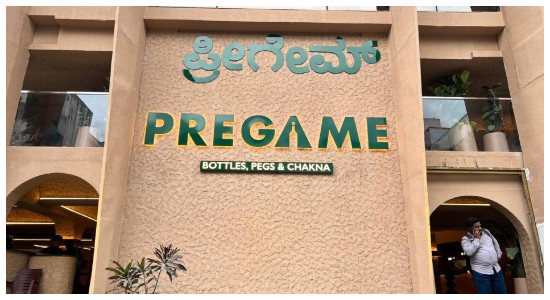
BYOB concept reimagined for Bengaluru
The “Bring Your Own Bottle” (BYOB) model isn’t new to India. It has long thrived in Delhi and Gurgaon, where it is known as the “ahata” culture, referring to small, licensed spaces attached to liquor shops where patrons can drink what they purchase. Over time, these have evolved into trendy, casual hangouts. But Karnataka’s strict excise rules make it difficult to replicate that model.
“In Delhi and Gurgaon, BYOBs are everywhere,” Jagadish explained, adding, “But in Karnataka, you can’t bring liquor from outside. So, we decided to build our own liquor store inside the premises, giving people the same BYOB experience conveniently.” This is what makes Pregame stand out, tapping into the growing trend of pre-gaming or pre-drinking.
“Students and young professionals often find pubs too expensive. Before going out, they pre-drink at home. We wanted to create a comfortable space for that, a community setting where people can gather before heading to their next destination,” he said.

New chapter in Bengaluru’s nightlife
Bengaluru has a thriving pub and nightclub culture. However, tighter excise rules and multiple excise fee hikes have created strain on both business owners and consumers.
According to reports, the Karnataka government recently doubled certain license renewal fees, such as the CL-5 retail license, which rose from around Rs 11.5 lakh to Rs 23 lakh. Liquor prices have also gone up following excise duty revisions.
With bar bills routinely crossing Rs 3,000–8,000 for just a few premium drinks, budget-conscious customers are looking for smarter alternatives, and that’s where Pregame steps in.
“Here, someone can buy a full bottle of premium whiskey like Glenfiddich for Rs 6,000 and enjoy it in a nice setting. In a regular pub, that same amount might get them just a couple of drinks,” Jagadish shared.
“Even though it’s a more affordable setup for consumers, we manage margins through volume. We cater to a large number of people, and because we also deal in good, premium brands, customers are willing to spend. It is a 600-seater space, and the response so far has been fantastic,” he added.

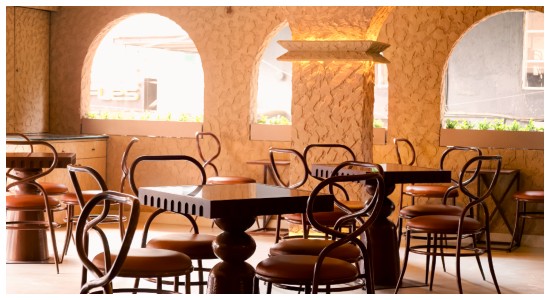
Why the model works
At its core, Pregame combines the best of both worlds: retail affordability and restaurant ambiance. The model also aligns with how younger urban consumers now approach nightlife, seeking flexibility, value, and experience rather than committing to one expensive venue all night.
“Of course, there are challenges, especially because we want to match retail prices while also providing a good dining experience with ambiance. That’s why we took a larger space and decided to play with volumes. For customers, it’s easy, affordable, and social,” Jagadish said.
The atmosphere is intentionally casual, less about dancing or loud music and more about unwinding with friends before the night begins.
Jagadish believes this is just the beginning. “I was inspired by what I saw in Delhi and Gurgaon, but we had to adapt it for Bengaluru. And so far, people are loving it. We initially thought we’d scale gradually, but customer turnout has been much higher than expected,” he said.
For a city long known for its pub culture, Pregame signals a shift. As rising prices and regulations strain traditional bars, models like this could represent a new phase of urban socializing.

In a world where conscious consumption is reshaping every plate, the dessert category is undergoing a quiet but significant revolution. Desserts, once known for decadence and excess are now being reinvented through the clean label movement which focuses on simple, natural and transparent ingredients instead of artificial flavours. From artisanal gelatos and vegan cheesecakes to gluten-free brownies made with unrefined sugars, this trend is changing how people enjoy indulgence.
Understanding the Clean Label Movement
According to reports, the global clean label ingredients market is expected to grow from US $50.2 billion in 2024 to US $69.3 billion by 2029.
Today’s consumer, especially millennials and Gen Z, want indulgence without guilt. Clean label desserts meet this demand with natural, simple ingredients using sweeteners like dates, jaggery, or coconut sugar and flours from oats, almonds, or millets for added nutrition.
“People are more health conscious, and they are reading the labelling and ingredients more closely, they want short and recognizable ingredient lists,” shared Chef Manish Khanna, Founder, Chef and Partner, Noir Dessert, Brownie Point and Noir by Manish Khanna.
Clean label means honest food i.e. products made with simple and recognizable ingredients. It’s not about being sugar-free or fat-free, but about avoiding artificial additives, preservatives, stabilizers, and synthetic colors or flavors. This movement reflects a global shift toward transparency and authenticity, where the quality of ingredients has become a mark of trust.
“Clean-label desserts are rising because today’s consumers want transparency, authenticity, and health without compromising indulgence. People are looking for brands that celebrate simple and recognizable ingredients,” added Eesha Sukhi, Founder, The Bluebop Café.
Transparency Builds Trust
Clean labels aren’t just about ingredients; they are about communication. Consumers today reward honesty. Desserts with clear, understandable ingredient lists resonate far more than those packed with E-numbers and chemicals. This transparency fosters trust and loyalty, giving clean label brands an edge in a market where credibility matters as much as flavor.
“People are reading labels and actively rejecting artificial sweeteners, flavors, and preservatives. At Magnolia Bakery, using only natural ingredients isn't a trend; it's our standard,” pointed Zonu Reddy, Director at Magnolia Bakery.
Premiumization Through Purity
Interestingly, the clean label movement has paved the way for premium desserts. Consumers are willing to pay more for fewer, high-quality ingredients they trust. “Less is more” has become the new luxury.
“Consumers understand that "natural" is healthier and are choosing brands that align with their values. This directly fuels premiumization. Customers view desserts made with high-quality, authentic ingredients as a premium, worthwhile indulgence,” commented Reddy.
Sukhi mentioned that premiumization is driving this space as people are ready to pay more for quality, craftsmanship and desserts that feels both indulgent and responsible.
Overcoming Challenges
There’s also a visible shift toward sustainable and locally sourced produce consumers are valuing traceable supply chains.
While, Khanna added that it’s more expensive to produce as we need to focus on the high marketing costs. “We can overcome the challenges by smart ingredient substitution and smart sourcing to bring down costs.”
Reddy noted that they overcome the challenge by baking everything fresh daily in small batches as it requires a commitment to quality over industrial shortcuts. This ensures a good shelf life and flavor consistency without artificial aids.
Clean label desserts are more than a passing fad as they represent a fundamental redefinition of indulgence. Consumers no longer view desserts as guilty pleasures, but as moments of mindful joy.

As awareness around nutrition, sustainability, and wellness grows, restaurants and hotels are reimagining their menus to cater to a generation that wants food that not only delights but also nourishes. Health-conscious dining has evolved from a niche trend to a defining movement one that’s reshaping the way the hospitality industry thinks about flavour, sourcing and experience. Around 50-60% of restaurants and hotels in India focus on healthy options in the menu.
Shift Towards Mindful Eating
People are paying closer attention to what’s on their plates and what they eat. Many restaurants and hotels are also adding calorie count and nutritional information in the menu.
“People are focused more on health-conscious dining as they want fresh food which is more inclined towards all the clean ingredients. We have curated healthy menu as well. And we keep doing events and pop-ups where we promote them,” shared Kapil Dubey, Executive Chef, Hyatt Dehradun.
Wellness is in Focus
Hotels have also embraced this movement in a big way. Many have introduced Ayurveda-inspired dishes, low-sodium meals, and vegan or gluten-free menus to suit a variety of lifestyles. The farm-to-table concept in Indian restaurants grew by 60% in 2024.
Luxury properties are now offering nutritionist-designed dishes and detox drink menus, while business hotels are focusing on light, energizing meals that keep travellers feeling refreshed. Even breakfast buffets are getting a healthy makeover with millet bowls, cold-pressed juices, and protein-packed options instead of the usual heavy spreads.
Chef Vikas Singh, Executive Chef of The Westin Mumbai Garden City added, “Healthy food, Asian, millets and Japanese are a trend seen in the industry. People are more health conscious and are responsible in what they eat. Sustainable food has become a trend in moving forward and it’s going to stay for a long run.”
Zero-waste cooking is one of the major things in which everybody is focused on and ensures there is less wastage of the product in the kitchen.
Balancing Health and Indulgence
Perhaps, the best part of this shift is that healthy food no longer means boring food. Chefs are finding creative ways to make nutritious meals exciting using air frying, slow cooking and fermentation to enhance flavours naturally without too much oil or sugar.
Pointing his views, Rahul Shetty, the Managing Director of The Stables and Peninsula Hospitality Group said that recently, health-conscious dining has increased by 20-30%.
Shetty noted, “Because of this, we have to be aware of the trends in this segment and cater to people mindfully. The ingredients we require should be good enough to cater to the large group of people and have to focus on availability of the same for long run. As the demand increases, we ensure that we are working on it fruitfully without any hurdles.”
And, as diners continue to look for food that feels good and does good, health-conscious dining is here to stay. Restaurants and hotels have adapted to this new mindset aren’t just keeping up with a trend; they are shaping the future of how the world eats.

The metro cities in India, such as Delhi's cafés, Mumbai's rooftops, and Bengaluru's quick-service restaurants, have influenced the country's food habits. But the real action is no longer limited to these states. There is a subtle but major shift taking place, with smaller cities emerging as the new growth arena. Once thought of as secondary, these Tier-2 and Tier-3 markets are now where brands are seeking out new, sustainable opportunities and where consumers are eager for choices. And the main force driving this shift is the way Indian consumers themselves are changing their eating and spending habits.
Changes in spending and consumption patterns
We need to look at the evolution of Indian eating and spending patterns in order to comprehend why these cities are growing so appealing.
Shifting proportions of expenditures on - Non-food spending has gone up in both rural and urban India, according to the most recent Household Consumption Expenditure Survey (HCES) for 2023–2024. Non-food items now account for roughly 53% of spending in rural areas, up from about 47% in 2011–12. The share of non-food in urban areas has increased to about 60%.
What people eat now versus what they used to - The amount spent on staples like pulses and cereals has decreased. Some of that money is being diverted by households into processed foods, drinks, and milk and milk products. In both urban and rural areas, processed foods, drinks, and refreshments are consuming a larger portion of food spending.
Changes in online, digital, delivery, and payment - In terms of daily spending through point-of-sale systems and online/digital transactions, non-metropolitan cities are growing in size. Cities with significant growth include Dharamshala, Mullanpur, and Vishakhapatnam. The use of food and grocery delivery apps increased by about 23% during specific times; match-day behaviours also show increases outside of metro areas.
Market size, sector expansion, and organised versus unorganised - By 2028, the Indian food services industry is expected to have grown from its current valuation of approximately INR 5.69 trillion to approximately INR 7.76 trillion. By 2028, the organised sector (restaurants, branded chains, etc.) is predicted to grow at a compound annual growth rate (CAGR) of about 13.2% and reach a market share of about 52.9%; the unorganised segment will decline in parallelly.
Factors driving revolution
For many years, metros were associated with the growth of India's food industry. However, that strategy is evolving. Due to their stronger margins and lower costs, Tier-2 and Tier-3 cities are now producing better returns. However, as consumers' disposable incomes rise, they no longer wish to make sacrifices. They strive for the same international cuisines and branded cafés as metros, but with a premium. That combination is dynamic.
The gap between metros and non-metros is closing due to digital access, not just affordability. A customer in Indore who is browsing Instagram wants to try the same food trend that is popular in Bandra. Quick commerce, payment platforms, and delivery apps have made that feasible, and supply can keep up thanks to cold-chain networks and better logistics.
The reality on the ground in metro areas is completely different from how digital access has brought smaller cities closer to international culinary trends. Although, the penetration rate of one hundred outlets and more is impressive, the drawback is that novelty is diluted. Competition turns into price wars since there is little that sets one outlet apart from another. Non-metros, on the other hand, still provide white space where a single restaurant or café can be the focal point. Given this, almost 78% of operators in Tier-II and Tier-III cities anticipate breaking even in two years.
The next ₹100 crore potential: How quality, niche cuisines, and casual dining will dominate
Brands that prioritise uniqueness and experience will drive the food industry's next wave of expansion in India. In addition to meals, casual dining options that blend food, ambience, and a cultural touchpoint are drawing consumers for weekend getaways, family gatherings, and social media moments. These formats give brands the ability to develop destinations rather than just restaurants, which appeals to new micro-markets.
Niche cuisines are also making a name for themselves. Craft bakeries, fusion cafes, and healthier substitutes for local specialities are more likely to be accepted in smaller cities where freshness lasts longer. Customers want transparency, consistency, and hygiene in this instance, so quality and authenticity are more crucial than ever.
The thing stands out from the way India's food industry is growing: Tier-2 and Tier-3 cities are no longer just secondary markets. They are aspirational, globally conscious, and extremely tech-savvy. Being a part of a cultural revolution where these smaller cities are influencing the future of Indian cuisine is more important to food brands than just growth.

As the world observes World Food Day, marking 80 years of the FAO’s mission, the call to end hunger and build sustainable food systems is more urgent than ever.
This year’s theme, “Hand in Hand for Better Foods and a Better Future,” emphasizes collective action through the FAO’s Hand-in-Hand Initiative uniting governments, farmers, and communities to create resilient, nutritious, and equitable food systems. Let’s focus on how restaurants are celebrating this day.
Local, Seasonal in Focus
The hospitality industry is celebrating this day by focusing on all the aspects as per the theme this year.
Rohit Dadlani, Co-founder of Pause said, “We celebrate food that’s good for you and the planet. This World Food Day, we’re spotlighting the journey from farm to fork - choosing local, seasonal produce that keeps our footprint light.”
Commenting on the same, Abhayraj Singh Kohli, Co-Founder & Director, Torii by Gauri Khan shared, “This World Food Day reminds us that meaningful change comes from working together, from kitchen to guest, ingredient to dish, creating a collective impact for better food and a brighter culinary future.”
Food goes beyond the plate, it's woven into the people one work with, the principles we stand for, and the planet we all share.
“The theme "Hand in Hand for Better Food and a Better Future" strikes a chord with how we have always approached our European-inspired menu: with intention, respect, and a genuine commitment to sustainability,” pointed Timanshu Mokal, Co- Founder, Amelia BKC, Mumbai.
Creativity Meets Consciousness
The balance lies in everything brands do; from the way they craft their food to the way they think about its impact.
Sharing further, Kohli said, “Our approach is rooted in mindful cooking, where creativity meets consciousness. We believe that great food doesn’t just taste good, it should also do well, for both people and the planet. We lean on what's seasonal, portion with care, and look for ways to use ingredients fully. Our bar mirrors this mindset, staying intentional and cutting down on unnecessary waste.”
Balance guides the menu, choosing quality ingredients, using them wisely, and wasting as little as possible.
Focus on Sustainable Eating
It’s always the small and everyday decisions that matter from how we store produce, how we prep in the morning, how we plate before service. These choices add up, shaping not just what ends up on the table, but how brands operate as a team.
Kohli added, “For us, sustainability isn't about making bold claims or chasing trends. It's about consistency, showing up with respect for what we cook with, who we serve, and the impact we leave behind.”
Expressing his views, Chef Vividh Patil, Executive Chef, Pondichéry Café, Sofitel Mumbai BKC said, “We believe that food plays a vital role in shaping a conscious and sustainable future. Our culinary philosophy centres on celebrating India’s diverse flavours while embracing responsible practices that positively impact both people and the planet.”
Dadlani noted, “Our plant-forward menu is crafted from scratch, celebrating the abundance, colours, and flavours of the plant kingdom through comfort food that’s nourishing, kind, and fun. Conscious eating isn’t about giving up - it’s about giving back: to our health, our communities, and our Earth.”
Farm to Fork Dining
It’s all about serving fresh, seasonal food directly sourced from local farms and producers.
“We build our dishes around fresh, locally sourced produce, supporting the farmers and growers around us while keeping our ingredients at their peak. From handmade pasta to wood-fired pizzas topped with what's in season, every choice reflects our belief in quality and responsibility,” said Mokal who further added that behind the scenes, we're meticulous about how we use every ingredient.
Adding further, Patil said, “Through thoughtful menu curation and mindful preparation, we aim to inspire guests to make informed, sustainable dining choices and experience the joy of good food that does well.”
Ensuring Zero waste
Zero waste is a journey brands are deeply committed to. Through mindful sourcing & focusing on in-house production capabilities, Dadlani pointed that they are learning, evolving, and doing their bit to close the loop - even as they recognize that they are still on the path.
Thoughtful portioning and creative use of trimmings ensure nothing goes to waste unnecessarily. “Even our bar programme follows the same principle, cocktails crafted with house-made infusions and fresh garnishes, keeping things minimal and intentional,” noted Mokal.
By embracing responsible sourcing, reducing waste, and celebrating culinary diversity, we can ensure that every meal nourishes both people and the planet.

Opening a restaurant rarely begins with fanfare. Long before guests arrive, kitchens drill recipes, teams rehearse pacing, playlists are tested, and managers time the sequence of courses. Passion may spark the idea, but what determines survival is how that energy gets converted into systems. When enthusiasm is organised into daily routines, the results appear in ways operators can measure: occupancy rates, sales figures, staff retention, and reputation.
Building loyalty and service excellence
Patrons respond to sincerity. Menus that respect culinary roots, kitchens that stick to sourcing principles, and drinks programmes that connect to a clear story earn trust. That confidence translates into steady mid-week covers, guests who return without promotional nudges, and review scores that sustain credibility. Over time, enduring goodwill cushions revenue against fluctuations in demand.
Static offerings fade quickly. Restaurants that rotate seasonal specials, introduce festival menus, or refresh cocktail cards create anticipation among diners. These ideas are tested for feasibility; whether a new dish can survive a Saturday rush or a cocktail can be made reliably across bartenders. When imagination is matched with execution, average bills rise, premium pours gain traction, and specials generate coverage that money can’t always buy.
Performance on the floor depends on preparation. Mock service days, role-play sessions, and dry runs allow staff to practise guest interaction, table management, and recovery during peak hours. Bartenders refine measures, servers rehearse pacing, and kitchens align ticket timing.
Customers may not see the run-throughs, but they feel the effect when operations run without hesitation. Outcomes are tangible: higher satisfaction ratings, healthier tips, and reduced attrition.
Crafting memorable experiences and strong teams
Ambience plays a decisive role in memory. Lighting tuned for different hours, music that evolves through the evening, and seating arranged to avoid bottlenecks all influence how long people stay and whether they return. Operators who test these variables in advance often notice longer dwell times and a higher proportion of celebratory bookings. Such occasions lift per-head spending and anchor repeat visits.
Restaurants with a defined purpose stand out faster. A house known for its regional spread, a venue recognised for craft cocktails, or a space that signals design innovation gives diners clarity on what to expect. Online, this focus strengthens engagement and lowers acquisition costs. For owners, a clear identity makes expansion less risky, because the brand voice carries across formats.
High turnover, on the other hand, undermines both efficiency and profitability. Constant recruitment disrupts teams and unsettles returning patrons. Ventures that build culture through mentorship, tastings, and recognition keep employees longer. Stable crews preserve uniformity on the floor and in the kitchen. For management, the savings on hiring and training are concrete; for customers, familiarity breeds assurance.
Adapting to change and looking ahead
Stories spread faster than campaigns. A dish that surprises, a bartender who suggests something off-menu, or a gesture of attention that feels genuine often becomes material for conversations and social media posts. Referrals show up directly in booking sheets, and word-of-mouth builds community without additional advertising spend.
Hospitality also lives with volatility: crop shortages, rule changes, seasonal dips. Ventures guided by conviction adapt by trimming menus, switching layouts, or experimenting with delivery formats such as bottled cocktails. Continuity during downturns and quicker recovery afterward are the clearest measures of durability.
Sustainability is now part of the operating model. Kitchens designed to reduce waste, bars that recycle, and partnerships with local producers improve efficiency and signal responsibility. Guests reward such practices with repeat visits, and regulators view them favourably. Over time, operational costs fall and reputational value grows.
The coming years will see restaurants lean harder on data and technology. Reservation systems, delivery platforms, and POS analytics are already shaping decisions on staffing, pricing, and line-ups. Investors are showing greater interest in ventures where operational discipline is visible, because it indicates lower risk. Growth is also shifting to smaller cities, where consumers expect the same quality and consistency as metros. For operators, the opportunity lies in using these tools and markets to extend the reach of their ideas while keeping the conviction that sparked them.

As the festive season arrives, restaurants across India are buzzing with renewed energy. From fresh menus to glowing décor, the industry is preparing for one of its busiest and most profitable times of the year. The weeks leading up to Diwali, Halloween, Christmas, and New Year’s Eve are marked by high footfall, group celebrations, and increased demand for dining and delivery which is prompting restaurants to pull out all the stops to create memorable experiences. Restaurants gain around 30-40% of the business during the peak season. Let’s see how brands are gearing up for the festives.
Festive Menus Take Centre Stage
Restaurants are creating special festive menus that mix traditional favorites with modern dishes, from Diwali thalis and Christmas roasts to unique desserts and drinks. Some are also hosting food festivals and pop-ups to keep guests coming back.
Sharing his views, Chef Pawan Bill, Head Chef at Ophelia, Delhi said, “We treat menu engineering as a balance between creativity, data, and guest experience. Each menu is thoughtfully designed around seasonality, flavour balance, and evolving customer preferences. Our recent Navratri menu, for instance, was curated to celebrate the festive spirit with innovative twists on traditional ingredients, allowing guests to enjoy a soulful yet contemporary dining experience. Such initiatives highlight how important it is to design menus that resonate emotionally as well as gastronomically.”
Even on festive season, there are people who are focused on healthy menus and low calorie or healthy desserts. “We believe that menu engineering is no longer just about what tastes good, it’s about creating an experience that resonates with our guests, especially during festive seasons. Crafting festive menus comes with its own set of challenges, mentioned Hilal Agca, Head Chef at Naarma who pointed out those sourcing seasonal ingredients helps in balancing traditional flavors with contemporary trends.”
For Anmol Arora, Head Chef from Dea believes that menu isn’t just about food it’s how we tell our story and shares the experience. “Every dish is built with intention, from flavour and seasonality to how it looks the moment it hits the table,” he added.
Marketing and Promotions Drive Bizz
To attract attention in a busy dining scene, restaurants are boosting their marketing efforts. They are using social media posts, reels to attract customers, influencer collaborations and email campaigns to highlight new menus and events.
“A well-planned online strategy not only increases footfall but also helps build a loyal customer base. We have seen firsthand how the right combination of innovative menu designs and effective marketing can significantly boost business growth while providing our guests with memorable culinary experiences,” commented Agca.
Nivedita Basu, Co-Founder, Miller House Bar and Kitchen added, “In today’s digital era, social media and digital marketing are powerful tools that shape customer perception and drive engagement. From influencer collaborations to interactive campaigns, they help build a strong community presence and boost footfall and revenue.”
Operational Readiness
Restaurants are hiring and training additional staff to handle peak crowds and service expectations. Many are upgrading their POS systems, stocking up on high-demand ingredients, and fine-tuning logistics to ensure smooth operations. Delivery-focused outlets are investing in better packaging and optimizing kitchen workflows to meet the surge in online orders.
Setting the Mood
Festive décor plays a key role in creating an inviting atmosphere. Warm lighting, vibrant table setups, and themed music transform dining spaces into lively celebration hubs. Some restaurants add interactive touches like photo booths, festive installations and small giveaways to make the experience more shareable on social media.
Community Building and Conscious Celebrations
Beyond food, restaurants are also embracing community spirit. Some are tying up with NGOs or running ‘meal for a cause’ initiatives during the season. Others are sourcing from local artisans and small producers, aligning their celebrations with sustainability and social responsibility.
With celebrations stretching late into the night, many restaurants especially in cities like Mumbai, Surat, and Delhi have extended their operating hours which can help in increasing footfall.
Balancing Opportunity and Challenges
While the season brings tremendous opportunity, it also demands precision. Managing inventory, maintaining consistency, and avoiding burnout among staff are constant challenges.
The real challenge is turning creative ideas into something that works seamlessly in service. Moving further, Arora added, “That’s where digital marketing and social media become game-changers. One great image or reel can spark curiosity, start conversations, and bring people in even before they’ve tasted a thing. Good food makes them visit, but a powerful story makes them remember.”
Digital marketing and social media have become indispensable in this journey from showcasing our festive offerings to understanding real-time guest reactions. “The right communication strategy amplifies our culinary vision, drives curiosity, and directly contributes to increased footfall and business growth,” noted Bill.
Another challenge is maintaining consistency, adapting to trends, and managing rising costs while keeping the dining experience memorable. Basu pointed, “With the right marketing strategy, a restaurant can witness up to 25–30% growth in overall business, proving that visibility and storytelling are just as vital as good food and service.”

The Maharashtra government has allowed shops and commercial establishments, including residential hotels, restaurants, eateries, amongst other entertainment places to remain open all 24 hours a day across the state.
A Government Resolution (GR) issued to this effect on October 1, however, made it clear that establishments involved the sale and supply of liquor, including wine shops, beer bars, dance bars, hookah parlours, discotheques and permit rooms, cannot operate 24 hours.
Restaurateurs have however welcomed the move, citing it as a step closer to promoting tourism in the state.
“The Maharashtra Government’s decision to enable 24x7 restaurant operations is a powerful economic catalyst for the hospitality sector. It strengthens GDP contribution, drives employment, and boosts allied industries like supply chain, agriculture, and real estate,” mentioned Ranbir Nagpal, CEO, Yazu Hospitality.
Extended hours will improve asset efficiency, attract tourism, and encourage greater consumer spending. “We see this as a progressive step that positions the state alongside global hospitality hubs and unlocks long-term industry growth including the support ecosystem to thrive,” added Nagpal.
On the other hand, Narayan T Poojari, Founder of Shiv Sagar Group, welcomed this policy with open arms. He pointed that allowing restaurants to operate 24x7 not only empowers businesses with greater operational flexibility but also prepares the industry for future growth.
“It gives restaurateurs the freedom to serve customers across all hours, innovate their services, and scale efficiently. This is a forward-thinking decision that supports entrepreneurs, generates more employment opportunities, and strengthens the overall economy,” added Poojari.
Policies like these send a strong message that the hospitality sector is valued, and they create a platform for long-term growth, improved customer experiences, and enhanced competitiveness on a global scale.
"We are thrilled with this move, as it signals a government ready to support and understand the needs of the industry. Extended business hours provide restaurants and cloud kitchens the scope to expand operations, serve customers better, and invest in their growth,” said Niketa Sharma, Keish Hospitality by adding that this policy will not just help individual businesses thrive, but also boost employment, tourism, and Maharashtra’s economic development. By facilitating a 24x7 operational model, the government is enabling the industry to be future-ready, more resilient, and capable of contributing significantly to the state's GDP and the vibrancy of city life.
Restaurateurs also pointed that the consumers have more options now, lesser limitations. And, with this move they can go out and spend money at restaurants and not just the delivery, giving a boost to dine-in business, which is much needed.
“I think it's a great move, much needed in the industry,” shared Amrut Mehta, Director, Little Italy Group. “We've had a stop start sort of journey after COVID, wherein the industry has maybe not been growing at the same rate as it could. I believe the new move gives the industry a much-needed revenue boost or a possibility for that and mainly for the consumers,” he added.
He also hoped that the government takes this to more cities in Maharashtra and ultimately should be a pan India move.
As per the reports, the government has now instructed district officials and police not to interfere with legally compliant 24/7 operations of eligible establishments. The move is expected to boost Maharashtra’s night-time economy, especially in cities like Mumbai, Pune, and Nagpur, where there is strong demand for late-night services, retail, and dining.

In today’s competitive market scenario, winning a customer is a task. What helps in the long run is nurturing the repeat customers to drive-in for more businesses. For this, every aspect plays an important role. From attention-to-detail to personalized experiences and timely engagements.
Delivering Exceptional Customer Experience
Consistency is king. Customers return when they know they can rely on the quality of your product or service. But consistency alone isn’t enough as personalization makes them feel seen and valued.
“We believe this begins at the ground level, with a highly motivated and well-trained team that takes genuine interest in making guests feel special. We invest extensively in the training and development of both our front-of-house staff and chefs, ensuring they are empowered to create memorable experiences,” mentioned Aman Talreja, Co-Founder, FARRO, Pune.
Sharing his views, Rohit Dadlani, Co-Founder, Pause, Mumbai said, “We believe repeat visits go beyond food, they are driven by feeling. Our focus is on creating a lifestyle experience where guests slow down, enjoy soulful plant-based food, and feel part of a community.”
Implementing Loyalty and Reward Programs
Loyalty programs are a proven way to encourage repeat business. Points-based systems allow customers to earn rewards for each purchase, while tiered rewards create incentives for frequent engagement. Exclusive offers, early access to new products, or birthday perks give customers a sense of recognition and belonging, making them more likely to return.
Customer loyalty is more about service and communication as it is about creativity and consistency. Akshay Anand, Founder, Cosy Box Delhi stressed that their focus is to make every customer interaction whether it’s online or offline, an experience worth repeating. These moments of surprise encourage not only repeat visits but also positive word-of-mouth.
Engaging Customers through Communication
Regular and meaningful communication keeps your brand top-of-mind. Email marketing allows you to send personalized follow-ups, product recommendations, and promotions. Quick alerts via SMS or messaging apps can remind customers of new offerings or events.
Talreja added, “Our regular patrons are engaged through special dinners, wine tastings, and exclusive previews, allowing them to feel part of a larger community. This sense of belonging ensures that loyalty is not transactional but rooted in relationships.”
“From a consistency standpoint, we prioritize seamless service and attention to detail, ensuring every visit feels personalized and warm. Our teams are trained to actively gather feedback, which not only helps us improve but also makes customers feel heard and valued,” noted Anand who further emphasized those limited time offers, exclusive events, and special memberships also give our repeat guests a sense of belonging and exclusivity.
Building an Emotional Connection
Customers are loyal to brands they resonate with emotionally. Share your brand story, values, and purpose to foster a sense of connection. Create communities through clubs, events, or social platforms that allow customers to engage not just with your brand, but with each other.
Putting up his viewpoints, Dadlani noted, “Our team makes an effort to remember guest preferences and add small touches of warmth that turns visits into relationships. We are increasingly pivoting into storytelling-led marketing to build a community that sees pause as part of their lifestyle.For us, retaining the customers isn’t about discounts or gimmicks. It’s about a meaning.”
Highlighting his views, Nirav A Rajani, Partner & Founder of Gaia said, “On the engagement front, we actively listen. Many of our experimental dishes are born out of conversations with guests, their feedback, and even their challenges when dining vegetarian. That exchange of ideas makes them feel part of our journey, and that sense of belonging is invaluable.”
Highly motivated staff
Driving repeat business starts from ground level, with a highly motivated and well-trained team that takes genuine interest in making guests feel special.
“We invest extensively in the training and development of both our front-of-house staff and chefs, ensuring they are empowered to create memorable experiences. This, in our view, holds greater value than discounts or freebies, as true satisfaction comes from how a guest is made to feel,” commented Talreja.
So, repeat business not just focuses on transactions, but on relationships. These businesses can turn one-time customers into lifelong advocates. Every interaction is an opportunity to reinforce trust, create value, and foster a bond that keeps customers coming back.

The Indian coffee market has witnessed rapid growth in the last few years, driven by evolving consumer preferences, increased exposure to global café culture, and the rise of specialty coffee.
Brewing Innovation
Coffee in India has grown from its traditional roots into a daily habit and a symbol of community, craftsmanship, and curiosity.
“At Barista, innovation continues to be our core strength. We have been introducing new beverages, desserts, fresh food offering, zero sugar coffee range and formats that cater to diverse palates,” shared Rajat Agarwal, CEO, Barista Coffee.
From personalization to make your own brew, café business is going through the biggest innovation these days.
Expressing his views, Rajat Luthra, CEO, Third Wave Coffee said, “We celebrate more than just a beverage; we celebrate a culture that is constantly evolving. Over the years, we’ve seen consumers move towards specialty coffee, embracing newer formats, brewing methods, and café experiences that reflect their changing lifestyles.”
The Experience Generation
Gen Z and millennials are experience seekers who want more than just a cup of coffee. “We engage them through three focus areas innovative products like bubble tea and tiramisu iced lattes, digital-first storytelling on social platforms, and experiential formats such as live events and brand collaborations. These initiatives ensure Barista stays relevant and aspirational for the new-age consumer,” pointed Agarwal.
Adding to the same, Luthra mentioned, “our journey from the coffee estates to vibrant cafés across the country has been about keeping pace with this transformation. With India’s youth leading the trend, we believe the industry is set to expand exponentially, driven by innovation, experiential spaces and a growing appetite for distinctive brews.”
Beyond Metros
Tier 2 and 3 cities are driving the next wave of coffee consumption in India. The key demographic here are young professionals, students, and families who view cafés as lifestyle destinations. All the top coffee giants like Starbucks, Barista, Cafe Coffee Day, Blue Tokai Roasters, Third Wave Coffee and Nothing Before Coffee are targeting this market as growing segment.
“Unlike global coffee giants, NBC focuses on localization and accessibility. Our major expansion is into Tier 2, 3, and 4 cities, where we connect directly with customers, understand their preferences, and deliver what they want at an affordable price point. This community-first approach sets us apart,” added Akshay Kedia, Co-founder, Nothing Before Coffee.
However, Barista represents a modern social space—whether it’s for work, celebrations, or simply enjoying a premium coffee experience. And, for them too, these markets will drive the next way of coffee consumption.
Luring Customers
New-age customers want convenience, innovation, and authenticity simultaneously. The challenge is staying relevant without losing identity. The rising costs and supply chain challenges are due to weather, labour shortages and transportation/logistics costs.
“We overcome this by refreshing our menu regularly, introducing seasonal drinks, and listening to customer feedback; ensuring innovation is constant but true to our brand,” mentioned Kedia.
Coffee Raves are emerging as a refreshing social trend in India, shifting the focus from late-night partying to early or evening gatherings centered on coffee, music, and community.
Agarwal said, “Barista has already organized a few coffee raves in the past, and this World Coffee Day, we collaborated with Libas to host a Coffee Rave party outside our café. It’s a unique way to celebrate coffee while giving guests a premium cultural and social experience.”
Sustainable Practices
Coffee growers and brands are investing in water-efficient practices, renewable energy on farms, and compostable or reduced-waste packaging. Transparency across the supply chain is emerging as a key differentiator as consumers are eager to know what’s in their cup but also how it got there.
Elaborating further, Kedia said, “We use paper cups, plates, and cutlery to cut down on plastic. We also ensure that perishable goods are used in free tastings or discounted offers, reducing waste while letting customers discover new products. Sustainability is embedded in how we serve and innovate.”
As consumer expectations evolve, the future of coffee looks more premium, more responsible, and more connected than ever before.

Running a successful restaurant goes beyond serving great food as it’s about crafting experiences. Maximising sales in the restaurant industry today goes beyond great food; it requires a holistic approach that blends menu strategy, customer experience, marketing, technology, and operational discipline.
In today’s competitive dining scenario, success demands constant innovation, adaptability, and meaningful engagement across every customer touch point to drive sales. Some of the effective strategies to help boost your restaurant business include:
Elevating the Customer Experience: Customer experience is vital. Small gestures like remembering a regular’s favorite dish and creating a personal connection foster loyalty and encourage repeat visits, ultimately elevating the overall dining experience.
“Diners are looking for more than a meal—they want consistency, ambience, and personalisation. Loyalty programmes, attentive service, and seamless integration across dine-in and delivery channels build trust and encourage repeat visits,” shared Gurmeet Arora, CEO and Founder, Flax Café.
However, according to Vamsi Mareddy, Co-founder and Co-owner, Paper &Pie, maximising sales in the café business is less about quick wins and more about creating a lasting connection with the guests.
“The first and most important factor for us is freshness. Guests spend long hours in a café setting, and serving consistently fresh, high-quality food is what builds trust and keeps them returning,” he added.
Menu engineering is a key driver: Menu engineering is a powerful way to boost sales by strategically highlighting high-margin dishes, designing appealing combo offers, and showcasing seasonal specials to spark curiosity. “By analyzing profitability and popularity, restaurants can spotlight high-margin dishes, refresh menus with seasonal specials and balance indulgent and healthier choices to appeal to wider audiences while optimizing margins,” mentioned Arora.
Marketing is Key: Restaurants online presence is just as critical as its offline experience. Eye-catching visuals on Instagram, regular updates on delivery apps, promoting through influencer marketing and strong Google reviews drive visibility and trust.
Storytelling is powerful. “Modern consumers connect with brands that stand for wellness, sustainability, or authenticity. Social media, influencer partnerships, and community collaborations enhance visibility; while referral and rewards programmes keep customer acquisition costs under control,” added Arora.
Omni-Channel is Important: Restaurants earn 25-35% of the sales through aggregator platform and many brands focus mainly on dine-in formats. Brands need to invest in quality packaging, run aggregator promotions, and consider launching delivery-only brands to maximize their kitchen’s potential.
Focus on Beverage Sales: Driving sales starts with an unwavering focus on quality. It is said that beverages often carry higher profit margins than food. In restaurants, 20-30% of the business is gained from signature cocktails, unique mocktails, or artisanal coffees which can increase the average spend per guest.
“Every dish and beverage we serve is crafted to the highest standards, ensuring consistency that attracts new guests while keeping our regulars coming back. Quality is the foundation on which all other aspects of our business rest, supporting both short-term revenue and long-term loyalty,” said Hanumanth Rao Naineni, Founder of Roast.
Upselling and Cross-Selling: Every brand should encourage their team to suggest starters, sides, and desserts in a natural, non-intrusive way. This helps them to focus on every food which was once side-lined, and it can boost sales by 10%.
Mareddy noted, “Whether it is highlighting seasonal menus or showcasing the versatility of our space, we ensure our guests always know what makes Paper & Pie unique. Storytelling has been key to building this emotional connection.”
Operational Excellence: Operational excellence ensures that all these strategies convert into results. Predictive inventory reduces waste; kitchen display systems improve turnaround time, and staff training guarantees consistency.
While the future is dependent on driving restaurant sales which comes from a blend of exceptional food, strategic marketing, smooth operations, and genuine customer connection. By elevating the on-premises experience and expanding into channels like delivery and events, restaurants can create sustainable growth while keeping guests delighted at every step.

Airports are no longer just transit points; they have steadily evolved into food and beverage (F&B) hubs offering travellers a mix of dining, shopping, and experiences. For many passengers, food is often the first source of comfort in an otherwise hurried environment, making a strong F&B ecosystem an essential part of modern air travel.
A recent study by IRHPL, one of India’s fastest-growing retail groups, highlights how airport operators and food outlets are adapting by combining speed, variety, and quality to meet shifting consumer expectations. The report reveals that regional cuisines continue to dominate traveller preferences, with South Indian fare topping the charts nationwide, followed closely by North Indian offerings.
South Indian dishes remain popular with both domestic and international flyers, underscoring a tendency among travellers to opt for familiar and comforting flavours even in transient spaces like airports. Convenience-driven formats and beverages are also emerging as key contributors to sales, reflecting the dual demand for quick service and quality experiences.
Commenting on the insights, Naresh Sharma, CEO, IRHPL Group of Companies of IRHPL said, “While global fast-food chains continue to expand their footprint across airports, it is regional cuisine that still dominates menus. This highlights a crucial insight that travellers seek familiarity and cultural connection even in transit, making it essential for airports to tailor their offerings to local tastes rather than relying solely on international trends.”
Convenience driving Consumption
Travellers are increasingly opting for quick-service formats over traditional dine-in meals at airports, according to recent trend data. Between 50–65% of overall F&B spending is directed towards grab-and-go counters and convenience-led outlets, while dine-in restaurants account for just 25–35%.
The preference is especially strong among short-dwell passengers, who often prioritize speed and efficiency but still seek quality in their food choices. The findings underscore how convenience continues to shape consumption patterns in airport dining.
“Seeing the travellers’ preferences, airports have already responded with investments in quick-service outlets, kiosks and pre-packaged offerings, ensuring that travellers can enjoy fresh, tasty meals even with limited time before flights.”
Beverages Driving the Sales
Interestingly, beverages are driving the F&B sales at airports, surpassing food in contribution. Nearly 70% of airport F&B revenue comes from beverages such as coffee, juices and alcohol, while the remaining 30% accounts for food. Specialty beverages such as craft coffee and premium bars contribute 10–15% of sales, while lounges and areas for high-dwell times in premium hubs record the highest share. This trend showcases the potential of beverage-focused outlets to drive both footfall and revenue that complement quick-service food formats.
Travellers Sensitive to Pricing
Airports provide the convenience and environment that justify a premium spend on food and beverages, but travellers remain price-conscious, according to industry insights. The steady rise in airport F&B sales suggests that passengers are willing to pay slightly more for quality meals in comfortable settings, provided there is value attached.
This has led operators and F&B partners to focus on a balanced approach—combining accessible grab-and-go counters with premium dining concepts to capture a wider customer base.
Data also points to a clear hierarchy in food choices, with South Indian cuisine leading demand, followed by North Indian offerings. With grab-and-go formats dominating consumption, airports are prioritizing investments in quick-service outlets, while also expanding premium dining options to cater to short-dwell and high-spend travellers alike.
As airports evolve into culinary destinations, aligning offerings with traveler behavior will remain key to optimizing both experience and revenue.

A decade ago, spotting a sushi bar in India was a novelty; today, a sushi corner is almost a staple at every upscale dinner or party. The Indian palate has matured swiftly, welcoming everything from delicate Japanese fare to vibrant Southeast Asian flavours, signalling a bold new appetite for global cuisine. And, hence, giving a way too many global as well as home grown brands to enter into this space.
When Avantika Sinha launched Kampai in 2018, Japanese cuisine in India largely lived behind the doors of five-star hotels—exquisite but inaccessible. Pan-Asian menus dominated, offering a bit of everything, while she envisioned a focused space serving authentic Japanese food for everyone.
“I wanted to do was a specialised restaurant, which is focussing purely on Japanese food made accessible to the general public. I do think over the last few years, when I started, a lot of people were actually eating Japanese food for the first time,” she remembered adding that in the last two years, she has seen the trend of Japanese cuisine grow immensely. “I think people are now willing to experiment beyond just Chinese food,” she added.
In just a few years, though, Japanese dining has exploded, moving from curiosity to mainstream. Diners are now eager to explore beyond familiar Chinese fare, and brands are seeing the same spark of interest for other Asian flavours. Korean food is already riding a wave of popularity, and Singaporean street bites, Malaysian staples, and fragrant Vietnamese dishes are next in line.
“As Indians travel more across Asia—and as new travel routes open from Kazakhstan to Azerbaijan—the appetite for fresh culinary experiences keeps growing. It feels like only a matter of time before these diverse cuisines claim their own corners of the Indian dining scene,” she further added.
From K-Wave to Kitchen Tables
“I think the first reason behind the same is that we are easily able to adopt the taste. We have that sense of spices. So, that's where I feel after Indian cuisine, you can preferably have an Asian. In terms of Asian, your most preferable is the Chinese cuisine. What I experienced from our hotel, we have Tamra, which is a world on a platter, we say, but most of the guests come for Thai food, live Japanese section, a bit of European, and of course, majorly Indian,” shared Gagandeep Singh Sawhney, Executive Chef & Culinary Centre of Excellence Cuisine Specialist, MEIA Region, Shangri-La Group for whom at their restaurant, Shang Palace that is a Delhi favourite, with its commitment to authentic Chinese cuisine, the footfall has increased over the years.
“Over the past few years, we’ve watched footfall steadily rise as more Indians travel across Asia—particularly to China for business—and develop a taste for regional flavours. Their palates are evolving, and with that, the demand for true Chinese dining is only growing, a trend we expect to continue well into the future,” pointed Sawhney.
Travel, Trends and a Cultural Shift
“There’s a real cultural osmosis underway. I recently read that more than 2,000 flights leave India for Asian destinations every day, creating constant exchange. Interestingly, while many of these routes don’t even include Japan or Korea, the strongest culinary influence is coming from those very countries. The K-wave is unmistakable—Korean food is firmly in the spotlight, with Japanese flavours not far behind,” mentioned Sukul Kundan, Brand CEO, PF Chang’s India by adding that this cultural osmosis has truly broadened the Indian palate, introducing diners to a wider spectrum of Asian flavours.
“My own journey reflects that shift: while I’ve opened restaurants rooted in Japanese cuisine, I’ve found that casual diners often gravitate toward Pan-Asian concepts, which feel more familiar and comforting as they explore new tastes,” he pointed.
Looking ahead, experts believed today’s Asian dining trends are here to stay, but there’s still plenty of untapped potential. Thai cuisine is clearly on the rise, with Vietnamese following close behind. In time, we may see even more niche flavours—think Cambodian and beyond—find their place. As Indians travel more and enjoy greater disposable income, their appetite for discovering these lesser-explored cuisines will only grow.
Copyright © 2009 - 2025 Restaurant India.






